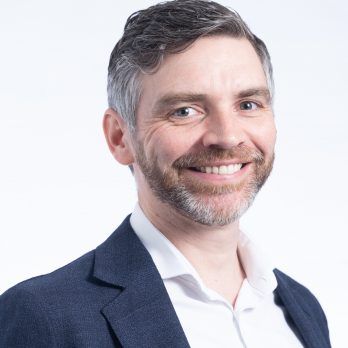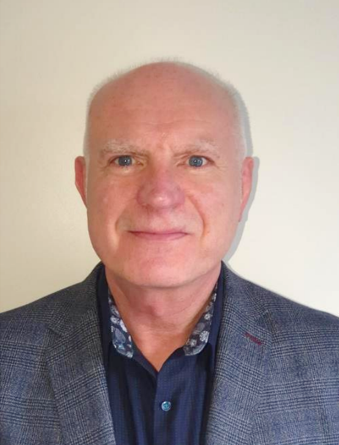2024
PROGRAMME
Week of Sessions
role="gridcell">
Main Stage
The geospatial profession - A look ahead
AI will make the role of the geospatial professional virtually redundant inside a generation - a debate!
11:00 - 11:45
Speakers:

Simon Navin
Dalcour Maclaren

Ed Parsons

Denise McKenzie
PLACE Trust

Nick Ruddell
Dalcour Maclaren

Hannah Thomas
Jacobs

Barry Gleeson
WSP
AI will make the role of the geospatial professional virtually redundant inside a generation - a debate!
AI will make the role of the Geospatial Professional virtually redundant inside a generation. A bold statement indeed. Join senior industry professionals on the Main Stage who will robustly debate for and against whether AI will truly disrupt the future workforce. The session will be facilitated by Simon Navin and audience participation will be fully encouraged. Learning points: The role of AI in geospatial|The future of the geospatial professional|The opportunities AI may create for the industry and careers
Read More >>Can geospatial data save the world?
11:45 - 12:15
Speakers:

Donna Lyndsay
Ordnance Survey
Can geospatial data save the world?
Donna Lyndsay discusses how she has been uncovering and testing how Ordnance Surveys knowledge and capabilities can support some of the biggest challenges of our time - how can we have sustainable business and live sustainable lives on planet Earth? Learning points:
Read More >>Speakers:

Donna Lyndsay
Ordnance Survey
Get Construction Talking: Addressing mental health in construction starts with you
Get Construction Talking is a global campaign led by The B1M, constructions largest and most subscribed-to video channel, and Procore Technologies, Inc. The approach is to raise awareness of constructions mental health challenge and help millions of people take the first step and play a small role in helping turn the tide. Through hosting in person events in the UK, US, and AU they aim to create mental health aiders on jobsites, and raise $1M USD in funds for mental health charities focused on construction. Join this fireside chat with Fred Mills and Ray Blewitt to better understand how you can get involved and make a difference in addressing this silent killer within construction. Learning points: Become aware of why mental health in construction is a global issue|Reduce your own stigma around talking about mental health and learn why resistance to ask for help contributes to high suicide rates in construction|Understand the warning signs and how your small steps can have a big impact
Read More >>Connecting people and technology: The secret to supercharging productivity
14:00 - 14:30
Speakers:

Kris Lengienza
Procore
Connecting people and technology: The secret to supercharging productivity
The construction industry has been flooded with new technology over the last 5 years but some still struggle to realise the value of their investments in technology for their firms. Taking a people-first approach to technology implementation and adoption can supercharge their productivity and leave them hungry for more innovation. Join us to learn how to select the right technology for your business, and engage your people in the change management process driving a culture of innovation and delivering value to the employees, their projects and the business. Learning points: Change Management is critical to Technology Adoption|How to evaluate if new technology is right for your people|How to drive a culture of innovation and technology adoption
Read More >>Speakers:

Kris Lengienza
Procore
Is the construction technology bandwagon running out of steam?
14:30 - 15:15
- What construction technology is available in terms of the new C-Tech Club Catalogue.
- What has worked well and what has worked less well in terms of construction technology and the lessons learned.
- Where contech is going from the perspective of founders and asset owners/contractors and consultants.
Speakers:

John Priestland
Priestland Consulting

Owen Dannatt
Kilnbridge

Sarah Crawley
SymTerra

Dev Amratia
nPlan

Julia Nammuni
Laing O’Rourke
Is the construction technology bandwagon running out of steam?
Construction technology has promised much, from automated design to self-driving plant and equipment. But is it achieving what it pledged? And, if so, what are the bright spots and the lessons learnt? This panel brings together founders, asset owners and contractors to discuss the good, the bad and the ugly of construction technology, from Large Language Models to factory fabrication, and to highlight solutions that are providing tangible and quantifiable benefits to the construction industry today. Panellists will explore the challenges that asset owners, contractors and consultants are trying to solve and the ways that technology, processes and people can be united to make a real impact in terms of change. This session will also mark the launch of the C-Tech Clubs Catalogue of Construction Technology Types 2024. Last years catalogue set out 31 categories of construction technology, along with definitions and examples of each. It has become a highly popular menu of the choices that project managers and construction managers can make about the technology that is available to improve their project or programme. The 2024 version will include an updated list of categories and examples, with particular emphasis on data integration and golden thread. Three Key Points:
- What construction technology is available in terms of the new C-Tech Club Catalogue.
- What has worked well and what has worked less well in terms of construction technology and the lessons learned.
- Where contech is going from the perspective of founders and asset owners/contractors and consultants.
From reluctance to readiness: Putting people at the heart of digital change
15:15 - 16:00
Speakers:

Grayham Roper
Briggs + Forrester

Tom Oulton
Rider Levett Bucknall

Matt Nolson
Keltbray

Amanda Fennell
Autodesk
From reluctance to readiness: Putting people at the heart of digital change
The construction industry is experiencing a rapid acceleration in the adoption of digital technology. Against a backdrop of economic uncertainty and drives to improve productivity despite tighter margins, construction companies are actively seeking innovative solutions to enhance their operations. However, introducing change in any organisation is never easy and comes with many challenges. Join our panel of industry experts as they discuss the key considerations for successfully introducing new technology in the workplace. Discover how to address workforce concerns and uncertainties, while effectively communicating the positive impact of technology on employees' work. Gain insights into the importance of investing in comprehensive training and explore the significance of regular feedback and refinements to drive continuous improvement. Learning points:
Read More >>AI - Powering a new era for infrastructure engineering?
16:00 - 16:30
- Practical advice and guidance on how organizations can be prepared and ready to implement AI
- Practical application of AI in infrastructure projects
- Uknlocking the power of data
Speakers:

Nick Niknam
Bentley Systems
AI - Powering a new era for infrastructure engineering?
News and opinion about AI is everywhere. AI has the power to transform how we work more than any other technology. However, while AI will undoubtedly change the world of work in the coming years at the moment there are very few tangible examples of AI being deployed successfully within infrastructure projects and within organisations. By precisely recording inputs and outputs within a business data has the potential to reveal what is really occurring within a project and an organisation and identify where changes can be made to improve performance. Three Key Points:
- Practical advice and guidance on how organizations can be prepared and ready to implement AI
- Practical application of AI in infrastructure projects
- Uknlocking the power of data
Speakers:

Nick Niknam
Bentley Systems
World Rugby's data-driven revolution and the implications for construction
The combined power of digital and human innovation
10:30 - 11:15
Speakers:

Mar Zumaquero Gomez
Arcadis

Amy Frye
Arcadis

Simon Oster
Arcadis

Juan Martino
Arcadis

Zeena Farook
Arcadis
The combined power of digital and human innovation
Join us for a transformative session as we unravel "The Combined Power of Digital + Human Innovation." Immerse yourself in discussion with industry leaders and innovators, gaining insights into real-world success stories and discovering how the fusion of digital technologies and human creativity is shaping the future. With technological advances, including the field of Artificial Intelligence, moving at lightning speed, we all wonder about the role that technology will play in our careers. In this session, we will show you the augmentative power of technology. Don't miss your chance to be part of this enlightening exploration! Learning points: Gain insights into the symbiotic relationship between digital technologies and human creativity, understanding how each element enhances the other for unparalleled innovation.|Explore real-world case studies showcasing successful implementations of digital + human innovation, providing tangible examples for application in various sectors.|Acquire practical strategies for fostering collaboration between digital tools and human intelligence, empowering you to navigate and thrive in the evolving landscape of innovation.
Read More >>Ethical and trustworthy approach to AI - Why is it relevant?
11:15 - 12:00
Speakers:

Marc Nezet
Nemetschek Group

Pierre Saunal
airc design

Sarah Rock
Boodle Hatfield

Lee Morris
Solibri UK
Ethical and trustworthy approach to AI - Why is it relevant?
Join our intriguing session at Digital Construction Week 2024 to uncover the truth about AI in construction. Learn how AI is not the industry's adversary but an essential ally. We will explore AIs role in enhancing efficiency, ensuring safety, and maintaining ethical standards in construction projects. This session will transform your understanding of AI, demonstrating its potential to revolutionize the industry while upholding ethical and trustworthy practices. Learning points: Understanding AI: Demystifying AI, addressing common fears, and showcasing its constructive applications in construction.| AI as a Necessity: Demonstrating AI's critical role in data management and efficiency, especially in an industry facing labour decline and the need for advanced technological solutions.| Ethical and Trustworthy AI: Strategies to implement AI in a legally compliant and ethically responsible manner, ensuring trust and reliability in its applications.
Read More >>The importance of geospatial to decision-makers
12:00 - 12:45
Speakers:

Dr. Vanessa Lawrence CB
Location International

Claire Milverton
1Spatial

Ian McGuinness FRICS
Knight Frank

Lt Col Alex Mayes RE
42 Engineer Regiment (Geographic), United Kingdom Strategic Command
The importance of geospatial to decision-makers
Dr. Vanessa Lawrence of Location International expertly moderates a dynamic panel discussion at GEO Business, focusing on the indispensable role of geospatial information in empowering decision-makers across diverse sectors. With her wealth of experience, Dr. Lawrence guides the conversation as panelists delve into real-world examples and practical insights, showcasing the transformative impact of geospatial intelligence on strategic decision-making processes. The discussion emphasizes the need for enhanced collaboration, innovation, and integration of geospatial data to address complex challenges effectively and drive positive societal outcomes. Through engaging dialogue and thought-provoking exchanges, the panel underscores the critical importance of geospatial insight in shaping informed decisions that pave the way for a more sustainable and resilient future. Learning points:
Read More >>The perfect storm: Carbon, AI and DfMA
12:45 - 13:15
Speakers:

Dale Sinclair
WSP
The perfect storm: Carbon, AI and DfMA
2024 sees the scaling of numerous topics simultaneously. The process to decarbonize our buildings is well underway but the new complexity resulting from the new tasks and system requires a reset of the design process. The shift towards offsite manufacturing aligned to designing for manufacture requires game-changing interfaces with the making process. AI offers the roadmap to the design process of the future that manages new knowledge bases and information freeing up professional time to deal with the challenges of the future. This talk looks at these three topics and how they can align to achieve the paradigm shift the industry badly needs. Learning points: How to implement DfMA at scale|How AI will transform the design process|How to make carbon decisions early in the design process
Read More >>Speakers:

Dale Sinclair
WSP
Local ID: Building better communities with data driven decision making
Discover the importance of data driven decision making at early stages of the project planning. This session will take you on a journey to discover how we use data within the AEC industry during the early stages of projects, and how an award-winning tool Local ID is bringing the long-awaited transformation in this space. We will explore how we can enable our industry to build better communities. You would see how Local ID enables this by combining relevant data into one place, available at the click of a button. Join this session to see case studies from major schemes including the current Portsmouth City Centre regeneration scheme, revitalisation of Buxton etc. The impact of which has helped with business plans and viability from inception, saved Councils significant time and has informed their development plans to better support their communities. Local ID is being used, right now, to deliver better housing and infrastructure across UK. Dont miss out the opportunity to see it in action! Learning points: Impact of data driven decision making.|Power of data visualization to narrate a story.|In-house innovation to deliver value to clients.
Read More >>From a fragmented industry to a connected ecosystem: how Causeway drives transformation in construction
14:15 - 14:45
Speakers:

Paul Devlin
Causeway Technologies
From a fragmented industry to a connected ecosystem: how Causeway drives transformation in construction
How can technology deliver on its promise to bring simplicity and productivity in construction? Today's fragmented approach to managing data, people, finances, supply chains and projects doesn't solve for the realities that front and back-office teams face in their day-to-day. From the design phase to commercial, operational and maintenance management, contractors and supply chains are enduring a multitude of efficiency papercuts, hindering productivity, skyrocketing project costs, and driving already razor thin margins down. Join us as we take you on a journey where we uncover how the construction ecosystem can achieve pragmatic, meaningful marginal gains at each point of the construction lifecycle. Learning points: Addressing Fragmentation with Technology: Attendees will learn how technology can address the fragmented approach to managing various aspects of construction projects, including data, people, finances, supply chains, and project management. Understanding how technology can streamline processes and integrate disparate systems is crucial for simplifying operations and improving productivity.|Identifying Efficiency Papercuts: Highlighting the inefficiencies plaguing the construction industry, from the design phase to commercial, operational, and maintenance management. Attendees will gain insights into the everyday challenges faced by front and back-office teams, such as productivity hurdles, escalating project costs, and narrowing profit margins. Recognising these "efficiency papercuts" is essential for implementing targeted solutions.|Achieving Marginal Gains Across Lifecycle: Attendees will be guided through a journey of achieving pragmatic, meaningful marginal gains at each stage of the construction lifecycle. By understanding where incremental improvements can be made, attendees will learn how the construction ecosystem can enhance efficiency and productivity. Emphasising these marginal gains is crucial for driving overall improvement and success in construction projects.
Read More >>Speakers:

Paul Devlin
Causeway Technologies
AI in construction: Building tomorrow today
This session will delve into the latest advancements in artificial intelligence within the construction industry. Well explore how AI is revolutionizing project management, enhancing safety protocols, and optimizing resource allocation. Join us as we envision the future opportunities that AI presents for architects, engineers, and construction professionals. Learning points: Ethical AI Practices|Business Value of AI within AEC|Strategic Planning and Benefits Realisation of AI
Read More >>Asset Management Stage
Data is key: Unlocking the value of BIM for owners (panel)
10:30 - 11:15
- How to use B2IM common language based on the use of alignment industry data standards (e.g. Uniclass for BIM; RICS NRM for 5D cost and carbon; SFG20 for maintain)
- Define asset data requirements for projects to handover into operation/ life cycle
- How to embed B2IM methodology into contracts and assure supply chain delivers
Speakers:

Adam Bear
Wessex Water

Gareth Alford
AstraZeneca

Marek Suchocki
Autodesk

Matthew Hoper
University of Birmingham
Data is key: Unlocking the value of BIM for owners (panel)
Do you want to know how owners are leveraging Building Information Modelling (BIM) and connected workflows to optimise their asset management strategies? In this session, you'll get to hear from industry experts and Autodesk customers who will share their insights on how historical and current data are empowering them to make informed decisions for the future. You'll learn about the latest trends and best practices in the industry that are helping owners unlock the true value of their assets. Three Key Points:
- How to use B2IM common language based on the use of alignment industry data standards (e.g. Uniclass for BIM; RICS NRM for 5D cost and carbon; SFG20 for maintain)
- Define asset data requirements for projects to handover into operation/ life cycle
- How to embed B2IM methodology into contracts and assure supply chain delivers
Better building information management – the new norm
Embark on the transformative journey into the world of B2IM, an innovative approach reshaping estate data alignment and asset management. Led by GPA and AtkinsRéalis, our session offers a deep dive into the transformative capabilities of B2IM, empowering attendees to securely share information in an interoperable format while utilising the Standard Information Approach methodology. Discover the multifaceted significance of B2IM, learn how B2IM addresses critical challenges like data inefficiencies and organisational siloes. Understand its role in supporting the UK’s Transforming infrastructure performance agenda, driving productivity enhancement and meeting net-zero obligations. Explore its compliance with ISO19650 standards and broader government initiatives. Acquire practical knowledge on implementing similar strategies effectively within your organisation. Explore real-world case studies showcasing its transformative potential. Also, gain insights into how B2IM aligns with GPA’s vision of a modern civil service and digitally connected estate. Understand the importance of defining information requirements and how B2IM is driven by prioritized information purposes such as data needs to aid quantification activities undertaken by Cost Consultants. By attending our session, you will be equipped with actionable insights and practical tools to drive meaningful change within your organization. Embrace the power of B2IM and don’t miss out on unlocking the future of estate data management with B2IM. Learning points:
- How to use B2IM common language based on the use of alignment industry data standards (e.g. Uniclass for BIM; RICS NRM for 5D cost and carbon; SFG20 for maintain)
- Define asset data requirements for projects to handover into operation/ life cycle
- How to embed B2IM methodology into contracts and assure supply chain delivers
Asset management redefined
12:00 - 12:30
- An overview of Asset Management today
- The latest standards and guides
- The future of Asset Management with AI
Speakers:

Daryn Fitz
Symetri
Asset management redefined
2024 will be an incredibly significant year for Asset Management. In this session, we’ll take you on a journey from explaining the evolution of asset management, what it really is, the key standards and guides, through to the latest updates from the Global Forum for Maintenance and Asset Management and the Institute of Asset Management and explain why 2024 will be a pivotal year for asset owners and digital transformation. A thought-provoking presentation, full of insights and lots of take aways. Hint: keep your smartphone camera’s ready. Learning points:
- An overview of Asset Management today
- The latest standards and guides
- The future of Asset Management with AI
Speakers:

Daryn Fitz
Symetri
Digital delivery of Wark on Tyne STW for Northumbrian Water
Learn how Mott MacDonald Bentley (MMB) improved the Design and Build delivery of Wark on Tyne STW for Northumbrian water through digital transformation. Several digital initiatives were adopted to compensate for limited resources and a tight programme. These included using Intelligent P&IDs and Building from Models using Autodesk ACC workflows and the Leica Icon for setting out. We worked with the client to agree digital design acceptance by creating a digital shadow of the works to improve completions and the handover process. Three Key Points: Information Management|Digital Delivery|Client Collaboration
Read More >>Transforming capital infrastructure using emerging technology
14:00 - 14:30
Speakers:

Jack Lomas
Severn Trent
Transforming capital infrastructure using emerging technology
This session will share learnings from introducing emerging technology across Severn Trent's £6.4bn capital infrastructure programme. Three Key Points: How to successfully introduce technology|How to move at pace in a regulated industry|The role of AI in capital infrastructure
Read More >>Speakers:

Jack Lomas
Severn Trent
The Smart Building Overlay – what it means for asset owners
14:30 - 15:00
Speakers:

John Adams
Glider Technology
The Smart Building Overlay – what it means for asset owners
From the title you could be mistaken for thinking that the smart building overlay is aimed at designers and contractors involved in a smart building project. Whilst there is a great deal of advice and guidance focussed in this area, these projects are much more successful when the operational professionals and end users are involved from the very earliest stage. Join one of the co-authors of the overlay, John Adams, to explore what this newly published guidance means for Asset Owners, Facilities Manager and building users. Three Key Points: Identify essential stakeholders for a successful smart building project|Incorporate fresh strategies and techniques from the technology sector|Implement effective decision-making processes to deliver a building as smart as you need, without overdoing it
Read More >>Speakers:

John Adams
Glider Technology
How automation can improve project delivery: Inside King’s Cross R8
In this presentation and Q&A, Bill Baynes (Senior Reinforcement Detailer, Arup) and Gordon Clannachan (Associate Structural Engineer, Arup) will show how they developed innovative digital tools at every stage of the King's Cross R8 project – from early concept to construction, improving project delivery and adding value for their clients. The team will showcase the benefits for structural optioneering, live embodied carbon calculations and reporting, efficient response to change, and 3D reinforcement. Three Key Points: The benefits of automating BIM modelling using the Tekla-Grasshopper live link and advantages of embarking on cloud coordination at an early stage.|The power of data to report embodied carbon as a by-product of your workflows. This provides live reporting as the project progresses to influence decisions, rather than leaving as a retrospective exercise carried out at each project milestone.|An insight into 3D reinforcement and the vast potential of automating 3D reinforcement modelling using software API and Grasshopper Link.
Read More >>Digital twins for the real estate sector – shall we?
Digital Twins implementation is rapidly getting to a level of high interest in the Built Environment. Whilst making the case for digital twins seems obvious in infrastructure projects, it’s not as easy in the real estate sector. There are several things to consider before embarking on the digitalisation journey and even more so when thinking at the complexity digital twins can bring. In addition, the sector has recently bought into the smart buildings concept and getting used to smart workplaces and digital integration in the places we live and breathe every day. Are digital twins the future of the Real Estate sector or shall we aim at smart buildings first? How does the two complement each others? Making the use cases right for both is very important to build the business case and having a deeper understanding about the drivers is key. Join this session to understand the unique challenges encountered when discussing Digital twins in the real estate sector and how to overcome them. Three Key Points: How to create value and demystify technology implementation in the real estate sector + Difference between smart buildings and Digital Twins + Making the case for Digital Twins implementation and its benefits.
Read More >>BIM4FM, digital twin, or just good asset management? You decide!
Throughout the thirteen years of BIM Academy’s existence, we have seen various iterations of BIM4FM and digital asset management, with more latterly, clients asking for digital twins. This has become an emotive and almost provocative subject, with many in industry staking a claim in what a digital twin is. Potentially adding to the noise, we have just witnessed the publication of the new BS ISO/IEC 30173 standard, which aims to formalise the key elements of a digital twin. And yet, we are still trying to figure out what it all means ‘on the ground’ when specifying information requirements on projects and when advising clients on what value digital technologies bring to them. In this session, we appraise many of these case studies over BIM Academy’s thirteen-year history against the new standard and against what we have begun to promote as our own understanding of what is required for clients to utilise a digital twin. Dr Melanie Robinson and Dr Dean Douglas will discuss several projects which may or may not be considered as a digital twin, inviting the audience to participate in the appraisal based on industry-based definitions. Examples will include the Sydney Opera House and Hellas Gold gold and copper mine, both of which have utilised various methods of digital interventions in their built environments, from what we have traditionally through of as BIM4FM through to proof of concept smart infrastructure. The session will also introduce the audience to a framework developed by BIM Academy which introduces clients to how they can introduce a digital twin into their operations. It will demonstrate that any iteration of a digital twin requires significant investment into people, process and technology, and requires a true analysis of business objectives and understanding. Our session will provide academic rigour through PhD research, as well as challenge many of the industry preconceptions. Learning points:
- To understand what a digital twin is using academic and industry standards
- To appraise industry case studies as digital twins (or not!)
- To understand the implications of digital twin methodologies on current BIM projects
The drivers & challenges for government departments. How can the private sector help?
16:30 - 17:15
Speakers:

Steven Boyd
Government Property Agency

Colin Casse
HM Revenue & Customs

Jane Dudson
Head of Information Management Team

Matt Warren
Lendlease

Stuart Bell
Glider
The drivers & challenges for government departments. How can the private sector help?
Attend this session to understand the key and emerging themes for Government departments, how their asset and estates teams are responding, and what you as suppliers can do to win work and support the Government to deliver a transformed, shared, sustainable and value for money government estate supporting civil servants to work productively in across the United Kingdom .
Read More >>Smart building for neurodiversity
10:00 - 10:30
Speakers:

Dan Watson
Hereworks
Smart building for neurodiversity
Daniel Watson, UK Regional Director for Hereworks, explores how Smart Buildings and Hereworks Happy can create inclusive environments for everyone. Learn how Smart Buildings can empower neurodiverse workers through sensory-optimised workplace strategies and designs Discover how sensors, asset management, spatial analytics, and automated routines can create a consistent and predictable environment, personalised to meet individual needs Understand how, with the right tools, Smart Buildings can help unlock the untapped talent pool of neurodiverse individuals Together, let's make a difference in how we design and experience our built environment! Three Key Points: Learn how Smart Buildings can empower neurodiverse workers through sensory-optimised workplace strategies and designs|Discover how sensors, asset management, spatial analytics, and automated routines can create a consistent and predictable environment, personalised to meet individual needs|Understand how, with the right tools, Smart Buildings can help unlock the untapped talent pool of neurodiverse individuals
Read More >>Speakers:

Dan Watson
Hereworks
Exposing digital twins: Going beyond data visuals to serving up intelligence as a service
10:30 - 11:00
Speakers:

Lucas Cusack
Glider Technology
Exposing digital twins: Going beyond data visuals to serving up intelligence as a service
It's fast becoming the wild west of digital twins. All of a sudden, there are so many on the market. But what are they? More important, what are they not?! Visualising time series data via 3D geometry is NOT a digital twin. In this session we explore the idea of digital twins as being a service rather than a product. No one vendor right now is the best at offering all of the constituent parts of a digital twin in a single software solution. And who said digital twins were just software? Connecting a digital twin to a physical twin requires hardware too! But you as the buyer who wants a digital twin, you don't have the knowhow to procure and manage these constituent parts. Enter DTaaS (Digital Twin as a Service). Join this session to learn all of the moving parts inside a digital twin and why Digital Twin as a Service (DTaaS) works better than a single software solution for today's market. Learn the challenges in scaling digital twins, and why we shouldn’t scale digital twins at all! Also, very importantly, how to make the business case for one and who you’re actually selling it to. Three Key Points: Learn the key components to what a good digital twin is and what it should do|Discover the immense challenges we face in scaling digital twins and why we shouldn't be scaling at all!|Be better equipped to tell if 'digital twin' products and services are right for you or your client and how to make a business case for one
Read More >>Speakers:

Lucas Cusack
Glider Technology
How digital solutions will support the delivery of the ambitious new hospital programme
11:00 - 11:30
Speakers:
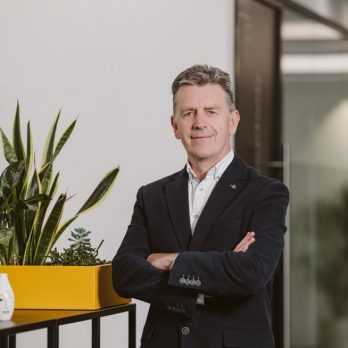
Paul Bamforth
Buildots
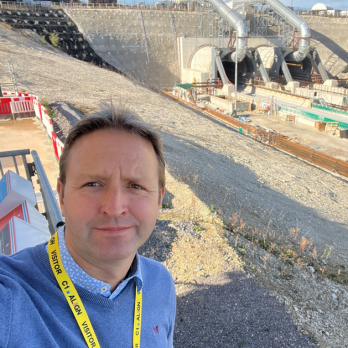
Stephen Killen
University Hospitals Dorset

David Hollywood
Kier

Emma Whigham

Bruce Preston
Sir Robert McAlpine
How digital solutions will support the delivery of the ambitious new hospital programme
How can the Healthcare sector meet the ambitious New Hospital Programme (NHP) target? With a £20 billion funding pool, building 40 new hospitals by 2030 demands innovative digital solutions. What lessons can other sectors learn from this groundbreaking approach? Join this panel session to hear from some of the sectors’ leading experts; Emma Whigham, Market Management, Deputy Commercial Director at New Hospitals Programme, Stephen Killen, Transformation Director at University Hospitals Dorset (NHS), Bruce Preston, Project Director at IHP and David Hollywood, Operations Director at Kier as they discuss the role that technology will play as the Healthcare sector delivers on its plans, and the lessons other sectors can learn from their successful execution. The Government's New Hospital Programme sets an ambitious goal, but building healthcare facilities is complex, with a huge variation in size, design, delivery teams and operational use. And, owing to its Government-funded nature, the Healthcare sector puts a heavy focus on their projects being completed in the most cost-effective manner to get the best value for taxpayer money. Enter Hospital 2.0 - a standardised design which will leverage digital solutions to improve efficiency and optimise layout. Hospital 2.0 will decrease the average time taken to develop and build hospitals, as well as reducing the cost through economies of scale. Harnessing advanced digital tools, including AI, will be key to the programme's success. Pioneering projects like The Royal Bournemouth Hospital and The National Rehabilitation Centre already lead the way, demonstrating the power that AI provides in streamlining delivery and mitigating risks. These projects fall within Cohort 1& 2 of the NHP, and will set the standard for its successors. Access to accurate data at both of these schemes allows the teams to foresee delays, drive progress, measure performance and continually optimise their outputs. It’s precisely this performance-driven construction management approach that will allow them to deliver on their plans over the coming years. As the most ambitious plan the UK has seen to date, there are countless opportunities for learning and growth across the sector. We need to open up project data from top to bottom, ensuring full transparency across both the project and wider programme levels. It’s hugely important that these learnings are shared among the wider industry to foster a culture of continuous learning and improvement. Join this exciting panel discussion, moderated by Paul Bamforth, Head of Global Strategic Accounts at Buildots, to hear about the challenges that led the projects to adopt these digital solutions, the concerns that may have followed, how these concerns have been controlled, and the positive influence that the solutions are already having on these high-profile schemes. Let’s make use of this exceptional opportunity and change construction for the better! Three Key Points: Uncover the learning opportunities we can take from the delivery of the New Hospital Programme and its use of digital technology|Discover how digital solutions are set to aid the delivery of the NHP|Understand how AI and data management go hand-in-hand to improve efficiency
Read More >>Raiders of the Lost O and M – common documentation problems and how to deal with them
11:30 - 12:00
Speakers:

Sarah Cole
TIME/IMAGE
Raiders of the Lost O and M – common documentation problems and how to deal with them
Project documentation gets neglected, dismissed, and lost, and then it costs everyone time and money to fix—if it can be fixed at all. Every piece of missing information can cast a long and expensive shadow that no amount of specialist software will fix. This session will cover common pitfalls in creating, filing, and maintaining documentation for contractors and commissioners alike. We'll take a quick look at how to set up a future-proof CDE, mitigate basic problems before they get out of hand, how to manage documentation once the projects are finished, and how to carry out damage control. We'll be demonstrating all of this with real data and focusing on two primary case studies: 1. Recovering the O&Ms of a project from chaos as completion approaches—using only Excel and Teams. 2. Modernising the sprawling archive of a large, 35-year old corporate building while incorporating new documentation from a major in-progress refurbishment project. Join this session if you're a Document Manager looking for a new approach, a contractor trying to streamline your processes, a commissioning client with a complex building to manage... or just someone who interacts with O&Ms but can never find what you're looking for. This session will be useful and accessible to most people working in construction; you won't need a very high level of technical knowledge to benefit from it. Three Key Points: How to mitigate and avoid problems with project documentation.|Practical and implementable ideas for improving documentation management processes.|Tangible examples of how structure can matter more than software.
Read More >>Speakers:

Sarah Cole
TIME/IMAGE
Maximising efficiency: Bluebeam's role in sustainable public sector construction in Wales
12:00 - 12:30
Speakers:

Anthony Roberts
Bluebeam
Maximising efficiency: Bluebeam's role in sustainable public sector construction in Wales
How do you turn a dilapidated bus station into a thriving, state-of-the-art community transport hub? Come see an example of how construction software is transforming public sector building projects, helping those who deliver them work more efficiently and more sustainably. Anthony Roberts from Bluebeam will demonstrate how architect Capita and builder Morgan Sindall used Revu to deliver a major bus station scheme in Wales. Thanks to strong collaboration, the team finished on time despite the pandemic. The bus interchange went on to win three national awards. You’ll learn tips and tricks to apply to your own public sector projects. Like how to work 5x more productively by digitalising collaboration, and how to speed up design reviews by 50%. Three Key Points: How to stay flexible during the design process by harnessing the tools in digital collaboration software|The secret to unlocking 80% faster quantity takeoffs and estimations|The most useful Bluebeam features for improving efficiency and sustainability
Read More >>Speakers:

Anthony Roberts
Bluebeam
4D on a large scale: Inter-project coordination at Heathrow Airport
This session will take you through how Costain developed a 4D solution for Heathrow Airport so that they could see when and where their hundreds of projects were taking place. The solution uses SYNCHRO Control and integrates hundreds of different P6 programmes from projects that are being delivered by many different suppliers. The session will talk about how information can be gathered from many different project teams efficiently and processed into a SYNCHRO Control project. This 4D solution is used by all the project teams to allow them to coordinate works. It reduces the impact of construction work on airport operations and allows work to be done more safely and efficiently. Learning Points:
- How to use Synchro Control to coordinate hundreds of projects
- How to gather information from multiple projects and multiple suppliers
- How to integrate multiple P6 projects into Synchro
Unleashing innovation for the property industry
Join us for an exciting session exploring the cutting-edge innovation in the proptech world. Discover Geovation: The innovation hub of Ordnance Survey, unlocking the power of geospatial data for startups and businesses. Witness the potential of location intelligence to tackle global challenges. 3 startups will present their innovative solutions, and will answer any queries. Three Key Points: startups|modular housing|demolition
Read More >>Information management for insurers - The problem of disclosure in the supply chain
14:00 - 14:30
Speakers:

Su Butcher
Just Practising Limited
Information management for insurers - The problem of disclosure in the supply chain
Property insurers are a frequently overlooked yet important recipient of construction information; they require this information to adequately assess risk. Confirmation of the as-built materials of construction and fixed fire protection design are key components of COPE (Construction, Occupation, Protection and Exposure) data used for the provision of Property insurance. In this session, Su Butcher, Digital Construction Champion of the Year 2023, will present the findings of her peer-reviewed paper for RISCAuthority, the research scheme administered by the Fire Protection Association which is funded by UK insurers.
Read More >>Speakers:

Su Butcher
Just Practising Limited
How to prepare for the building data journey: From construction insights to COBie asset data management
Data is still the new gold – do you know how to mine it? Join us for a session where we will show you how Lendlease, a leading international construction and real estate company, leverages data to deliver quality projects across the development, construction and asset management lifecycle. We will also demonstrate how COBie, a standard for exchanging building information, can help you achieve the BSA golden thread of information requirement and avoid the pitfalls of poor data quality. Finally, we will showcase some of the exciting applications of data analysis and machine learning that can help you gain insights, optimize performance and predict outcomes for your projects. Three Key Points: It's worth investing in data|Involve your CAFM (Computer-Aided Facilities Management) early|It's about your stakeholders
Read More >>Project Charlotte
15:00 - 15:30
Speakers:

Giulio Antonutto
ARUP
Project Charlotte
Project Charlotte is the first of its kind. It is a new concept of digital twin, where IoT, control systems and building performance data are transformed – through a creative and imaginative design – into an alternative virtual world. This installation is a technical feast, including anamorphic projections, real time data acquisition and processing, generative graphics, particle systems. But there is more to it. The building telemetry, including data such as temperature, humidity, noise levels, number of people present, influences the environment and the emotions that are displayed on the screen: low air pressure affects the weather, while temperature, noise levels and relative humidity modify Charlotte’s phenotype; the number of people in the office determines Charlotte’s mood. It is a digital twin of sort. Distorted, but overcharged with empathy, designed to establish an emotional connection between users and Charlotte. Three Key Points: translate data into information|empathy and data|user interaction and engagement
Read More >>Speakers:

Giulio Antonutto
ARUP
Geospatial Theatre
Visualising BIM through Esri Experience Builder
10:00 - 10:30
- GIS
- BIM, CAD
- Scan to BIM
Speakers:

Michelle Halstead
Tetra Tech
Visualising BIM through Esri Experience Builder
The complete process of data capture starting with laser scanning, topographical and utilities surveys through to visualisation of BIM using ESRI Experience Builder. A Revit model was produced with a Leica RTC360 laser scanner. The scan data was georeferenced using black and white scanner targets, positioned using a total station and related to OS national grid. The scan data was incorporated into topographic data and a utilities survey to create the CAD drawing. Enterprise with Experience Builder provided the complete solution of data storage, company branding, and visualisation to all stakeholders. Improving communication through a single source. ESRI Experience Builder was the development tool used to produce a custom based web application to showcase, visualise, analyse, and share spatial data in a user-friendly interface. Pre-existing and newly surveyed CAD files from site surveys can be overlaid on topographical maps or aerial imagery to provide context to the surrounding landscape to otherwise complex information. The web app allows external links to reports, additional information, and facilities to print. A customised designed template has been created to fit with STW branding. A large selection of widgets can be used to incorporate a variety of different functionalities. Widgets can display maps, charts, tables, filters, search boxes, edit tools, demographics, and print templates. With the ability to launch Revit models and include multiple sites everything can be displayed in one location without the need to switch between files and improving the file sharing process. A single source for documents, Revit files, CAD drawings, mapping, and information. The web apps can continually grow to include additional information as it becomes available, thus growing with the project or projects. Three Key Points:
- GIS
- BIM, CAD
- Scan to BIM
Speakers:

Michelle Halstead
Tetra Tech
Unlocking the true value of Geospatial Information
10:30 - 11:00
Speakers:

Michael Durnin
Murphy Geospatial
Unlocking the true value of Geospatial Information
Geospatial information and data are essential in the construction phase of infrastructure, utilities, and manufacturing projects. These tools help with accurate planning, design, and monitoring of construction activities. They facilitate better decision-making, reduce project costs, risk, conflict, improve safety, and enhance project efficiency. Geospatial information supports the Project Controls teams, improving decision making and delivers on a build right first-time mentality. Michael Durnin will take the audience through how unlocking the true value of geospatial information can enable effective decision while highlighting the return of investment and performance of Geospatial Management on project. Three Key Points: Getting the maximum benefit from geospatial information|Unlocking the value of geospatial information during construction phase|Performance metrics, return on investment and key areas of impact
Read More >>Speakers:

Michael Durnin
Murphy Geospatial
Revolutionising construction together: Unlocking productivity with digital setting-out
11:00 - 11:30
Speakers:

Xavi Juárez
HP Construction Services
Revolutionising construction together: Unlocking productivity with digital setting-out
Join us for a session showcasing real-world case studies and insights into how digital construction set outs are revolutionising the industry. Learn how HP SitePrint’s innovation is driving efficiency and safety while accelerating project timelines. Don't miss out on this opportunity to stay ahead of the curve and unlock the full potential of construction technology! Three Key Points: • Understand the transformative impact of HP SitePrint on construction processes, from enhancing safety to advancing project schedules. • Gain insights from real-world case studies featuring leading companies like HOAR, Level 5 Drywall, and Acciona, showcasing the tangible benefits of digital construction technologies. • Learn the importance of collaborative innovation and client partnerships in driving the development of cutting-edge solutions for the construction industry.
Read More >>Speakers:

Xavi Juárez
HP Construction Services
Façade joint movement analysis (or: Will my 16th precast panel sit right?)
Using the new Aviva Studios, home of Factory International, as a case study, we present the Joint Movements Analysis workflow and toolset, describing how panel movements were modelled and calculated, how their conformity was verified and what mitigating strategies could be implemented where risks were identified. Three Key Points: How to improve efficiency of structures by adopting a performance-based instead of generic deflection limit approach.|Methodology for calculating panel translations and rotations (from an FE model or deflection plot), as well as the resultant inter-panel movements|How this analysis was used on the new Aviva Studios construction to maximise likelihood of precast concrete panels meeting mastic and acoustic performance requirements.
Read More >>Risk mitigation in constructions: the benefit of efficient movement monitoring
The latest technological integration and modern software can improve the efficiency of existing monitoring solutions by providing safer installation procedures and enabling fully autonomous solutions for more accurate data collection and faster data sharing. This joint presentation uses a live UK construction site case study from SESE Ltd to discuss the lessons learnt and illustrate the benefits in efficiency and productivity by adopting modern monitoring solutions from an SME (Small and Medium Enterprise) service provider perspective to the end client, and construction site management team over all. Three Key Points: Monitoring in constructions|Steps to automated monitoring|Benefit of efficient monitoring
Read More >>Unlocking biodiversity net gain: A unified approach
12:30 - 13:00
Speakers:

Phil Ankers
Jacobs
Unlocking biodiversity net gain: A unified approach
Biodiversity net gain stands to be one of the most influential environmental legislative changes in decades. It is the culmination of a years-in-the-making set of ideas that nature recovery should be quantifiable, and importantly accountable. In this session, Phil Ankers will discuss the merits and necessity of fostering strong collaborative links between the ecology and geospatial disciplines, and the importance of approaching the Biodiversity Net Gain challenge with a united front to meet the demands of your next construction project. In the session, he will introduce Biodiversity net gain as a concept, and explore how, whilst primarily an ecological consideration, the implementation and management of BNG is actually one embedded deeply as a geospatial challenge. He will walk through the potential challenges of working in silos between disciplines, and the inefficiencies and frustrations that can cause. Conversely, he will demonstrate that a collaborative, outcome-focussed approach can deliver enhanced value from the data that technical disciplines collect or procure. Some of the tools that this approach has produced will be demonstrated, ranging from straightforward but often overlooked concepts like quality of life configurations in data collection forms, to process automation tools for BNG, and dynamic biodiversity value maps. The talk will help ensure BNG is a great tool for sustainability in your next project and an area you can push the boundaries of digital planning with a one-team approach. Three Key Points: Collaboration|Innovation|Adaptability
Read More >>Speakers:

Phil Ankers
Jacobs
How Scandinavia is leading the way to gain value from model-based projects
With transportation infrastructure projects in the limelight in 2024, it’s essential to look at the challenges and opportunities around these complex projects. In this session we look to Norway, where model based projects are not only becoming standard but are included in client requirements, to look at how this approach can help reduce delays, reduce costs and improve stakeholder collaboration. We’ll consider what this might mean for the UK, how it can be used to make further improvement for projects in the future through technology, workflows and data. Patrick McGloin and Kieran Mulvey from Trimble and bring with them over 35 years of experience working on and around infrastructure projects. Three Key Points:
- How clients pushed model based Design and Construction to become the de facto standard in Norway. Insight to the future: customer requirement trends in a BIM mature market
- Real-world insight: experiences from a fully model based road project, plus improvements for the future
- What we can learn from this for the UK market in the future
The latest tools accelerating projects in the construction sector
Join the conversation with KPMG and Stantec where they will unpack the latest tools accelerating projects in the Construction Sector. With an ever increasing demand on projects, the audience will gain valuable insights into the latest tools and systems enabling and accelerating delivery. Route Selector – A tool that can be deployed at any stage of your project lifecycle, unleashes the power of data analytics to enable efficient infrastructure design. This powerful geographic information system (GIS) tool can be tailored to meet your project needs and integrate seamlessly with your own systems and processes. The route selector incorporates the power of machine learning in an intuitive geographical interface which improves user engagement to rapidly consider a range of possible pipeline routes against a number of constraints. Drawing upon the technical engineering expertise of our people, the Route Selector is firmly embedded into our design and project management approach, allowing the optimal route for your project to be identified far quicker, more consistently, and with less cost than current conventional methods. Once the project-specific rules are decided upon, the Route Selector can generate cross country routes in a matter of minutes. Fire Flow – An online geographical information system (GIS) tool that links building specifications and water network information. This connection allows users to test and determine the amount and pressure of water required to suppress a fire. The tool calculates the fire flow rate—the minimum pressure required to fight +D8+E6es for buildings by location and postcode and can digitally copy any property in 3D. The digital twins of each building help calculate required fire flows based on height, floor area, and occupational use. The tool combines this information with the fire flow rate from each hydrant operating individually and in groups, ultimately ranking the building by ability to meet fire flow requirements. The fire appliance application in the tool also helps identify a location for fire engine placement and considers fire hose length and positioning to measure the impact on fire flow and provide base data to help inform quick decision making in the event of an emergency or in risk calculation and crisis planning exercises. Only hydrants which meet certain criteria, such as being within a certain distance and where there is a valid route for a fire hose to be laid, will be identified by the tool. The same analysis can be done for fire engines—the user can select the location of the fire engine, and the system will choose the best hydrants to use and devise the routes for the fire hoses. Three Key Points: How to unleash the power of data analytics to enable efficient infrastructure design.|Understand how the latest systems are linking building specifications and water network information.
Read More >>Utilising GIS to overcome geospatial challenges on the HS2 megaproject
The new High Speed 2 (HS2) Railway is currently being constructed by Skanska Costain STRABAG Joint-Venture (SCS) with twin-tunnels forming the southernmost section from Ruislip (in West London) to London Euston. These HS2 twin-tunnels, 21km in length, are being excavated using six different Tunnel Boring Machines (TBMs). This session presents a GIS case study which showcases how geospatial intelligence has enabled real-time tracking of the TBMs during construction. The work of SCS team members across these disciplines relies on quickly, and accurately, being able to determine the current locations of the TBMs at any time. The progress of each TBM is non-linear. Some days, the progress of a TBM can be over 40m. At other times, when maintenance is required on the machine, a TBM may not progress for several days. The powerful analytics and visualisation adopted have had a significant benefit on project delivery by enhancing decision-making, improving health and safety and environmental protection, and providing cost savings. With that in mind, our session is going to provide an insight not only on the applied GIS technology, but also on aspects related to data collection, quality, and assurance, which have played a crucial role in our study. Three Key Points: Opportunities and challenges in bringing together geotechnical engineering with real-time construction work progress tracking on a mega project.|Implementation of digital tools to improve collaboration between disciplines, inform decision-making and provide cost savings.|Benefits of real-time tracking in GIS for bringing efficiencies and improving large team productivity.
Read More >>Interoperability, standards and earthmoving on the connected site
The connected construction site – what does that actually look like? What if you could connect the construction operations with the office-based design, planning and admin? What would that gain you? Why does it matter in the context of BIM and the future of construction automation? Why and when does interoperability and standards become critical for closing the loop? Three Key Points: Understand how we connect and use the digital data taken from the cutting edge.
Read More >>Automate the capture and analysis of construction progress and verification data
Visual progress of a job site is often hindered by limited remote access. Hexagon's Visual Progress Workflow provides 24/7 remote access, allowing proactive risk management through capturing, mapping and linking job-site visuals to floor plans or models and viewing them from virtually any device with a web browser and internet connection. Keeping up with the true state of construction progress by floor, area and trade can be challenging. The Progress Reporting Workflow automates the process of data capture, analysis and reporting so timely information is at construction stakeholders' fingertips 24/7. The As-built Verification Workflow ensures that the design intent documents or original as-builts are up to date. Capturing existing conditions in the field via laser scanning to accurately create or correct 2D and 3D documentation allows for the timely and seamless handover of documents to owners for operations and renovations. Learning points:
- Proactive risk management through capturing, mapping and linking job-site visuals to floor plans or BIM models
Geospatial management for complex manufacturing facilities
10:00 - 10:30
Speakers:

JP Kelly
Murphy Geospatial
Geospatial management for complex manufacturing facilities
Geospatial data plays a crucial role in managing complex manufacturing facilities. It enables real-time monitoring, predictive maintenance, and optimisation of operations, leading to improved safety measures, efficiency and productivity. Murphy Geospatial has delivered proven savings and efficiencies on some of Europe’s prestigious projects. JP Kelly will take the audience through how our cutting-edge technology and expert team were able to help clients make informed decisions, ultimately saving time and costs for our clients through Geospatial Certainty. Three Key Points: Getting the maximum benefit from geospatial data for complex manufacturing facilities|Saving costs, time and reworks through Geospatial Certainty|Improving decision making and efficiency for asset, real estate and facility managers in the Manufacturing sector.
Read More >>Speakers:

JP Kelly
Murphy Geospatial
AI in the era of retrofit
11:30 - 12:00
Speakers:

Karoliina Torttila
Trimble
AI in the era of retrofit
In industrialised nations, most of our built environment is already in place. So how do we merge the physical and digital worlds to reimagine how we design, construct and sustain assets in the context of retrofit. We’ll examine groundbreaking advances in AI that unlock the potential of this information, including scene understanding, object inventory, and condition analysis. Join this session to see how harnessing AI in these areas offers a revitalised vision for the era of retrofit our sector is entering. Three Key Points: The future of a retrofit world|AIs transformative role - merging the physical and digital worlds|Groundbreaking advancements of AI being used today, plus what’s on the horizon for tomorrow
Read More >>Speakers:

Karoliina Torttila
Trimble
Building tomorrow: Integrating spatial computing with BIM for enhanced data visualisation and analytics
12:00 - 12:30
- Learn how to link critical data & analytics and BIM
- What is the potential of this integration
- Future applications of Spatial computing within the Built Environment
Speakers:

Ryan Clarke
Turner & Townsend
Building tomorrow: Integrating spatial computing with BIM for enhanced data visualisation and analytics
In the ever-evolving landscape of construction and architecture, the integration of Building Information Modelling (BIM) with spatial computing is paving the way for a revolutionary approach to design, construction, and facility management. This talk will delve into the cutting-edge convergence of these technologies, exploring how spatial computing can overlay critical data and analytics directly onto BIM models. We will examine the transformative potential of this integration, offering insights into how architects, engineers, and construction professionals can leverage these tools for improved decision-making, enhanced visualization, and more efficient project management. By harnessing the power of spatial computing, stakeholders can unlock a new dimension of interactivity and information accessibility within BIM environments, driving forward the digital construction paradigm. Through real-world examples and case studies, attendees will gain a comprehensive understanding of how these technologies complement each other, the challenges of integration, and the future possibilities for the construction industry. This talk aims to inspire innovation, encourage adoption, and highlight the immense benefits of merging spatial computing with BIM for a smarter, more connected construction future. Learning points:
- Learn how to link critical data & analytics and BIM
- What is the potential of this integration
- Future applications of Spatial computing within the Built Environment
Speakers:

Ryan Clarke
Turner & Townsend
Boosting infrastructure resilience with BIM and digital twin amid rising floods
Here comes the rain again! This winter, widespread flooding has underscored the growing impact of climate change, with intense rainfall, river surges, and sea level rise affecting both urban and rural areas. Climate scientists highlight flooding as a critical challenge for the UK, with Munich Re estimating global losses of $100 billion annually due to extreme weather events. With flooding on the increase, it is creating havoc for our critical infrastructure like rail, roads, and power networks. As engineers we have the digital tools – BIM & digital twin - to make our infrastructure more resilient to weather events. High-impact, low-probability events are occurring more frequently, demanding proactive planning. Fortunately, predictive storm and flood models offer effective strategies for managing flood risk, aiding in the analysis of defence options to protect people, property, and critical infrastructure. In this session, we’ll illustrate innovative approaches such as integrating dynamic hydraulic models with digital terrain data, to mitigate flood risk during construction, repurpose canal infrastructure for stormwater storage, and safeguard railways in the design phase. Learning points:
- Understand the increasing flood risk to the UK’s critical infrastructure
- Learn how we can improve resiliency by taking stormwater and flash flood into consideration in the design stages with predictive hydraulic models, digital terrain models, and digital twin
- Consider the importance of digitisation in providing a sustainable approach to flood mitigation.
Automated construction site management with DJI Dock 2
14:00 - 14:30
- The key features and capabilities of DJI Dock 2
- How DJI Dock 2 could streamline the construction project management workflow
- Real-world case studies and best practices
Speakers:

Freda Peng
DJI
Automated construction site management with DJI Dock 2
Drones are useful for monitoring construction progress and site security, but finding skilled pilots can be difficult. DJI Dock 2, an automated docking station, addresses this issue by conducting repeatable missions. This presentation explores how DJI Dock 2 automates construction site management, discussing its features and benefits through real-world case studies. Join us to learn how DJI Dock 2 enhances productivity, safety, and cost-effectiveness in construction projects. Learning points:
- The key features and capabilities of DJI Dock 2
- How DJI Dock 2 could streamline the construction project management workflow
- Real-world case studies and best practices
Speakers:

Freda Peng
DJI
Leveraging innovative technology at SISK's Wembley project
14:30 - 15:00
Speakers:

James Palmer
John Sisk & Son
Leveraging innovative technology at SISK's Wembley project
Join the session to discover how SISK are utilising award-winning innovative technologies to shape a digital strategy that has transformed the delivery of the Wembley North East Lands project. In this session, we will highlight how the use of a Digital Twin for Off-site Manufacturing, Autonomous Robotics and Geospatial Innovation has enhanced the delivery of our residential projects at Wembley. Three Key Points: Digital Twin for Off-site Manufacturing|Autonomous Robotics|Geospatial Innovation
Read More >>Speakers:

James Palmer
John Sisk & Son
Information Management Exchange
Information exchange to facilitate circular economy in the construction industry
This session discusses circular and End-of-Life cycle (EoL) information exchange to close the material loop in the construction industry. The expected audience of the session is anyone who contributes to the value chain to fulfil the circular economy paradigm in the construction industry, whether on the level of materials, products, or built assets. In particular, the discussions will benefit designers, architects, and engineers who deal with design for deconstruction and design with reusables, as well as deconstruction contractors, waste auditors, and newly emerging actors such as circular consultancies and marketplaces. The following three primary learning objectives are outlined for this session: 1. Understanding circular economy and End-of-Life cycle information needed to be exchanged between stakeholders to enable reuse of construction elements 2. Learning about existing OpenBIM solutions that standardise the terminology and data exchange, including Decommissioning and Reuse ontology and data dictionary 3. Co-designing process maps to produce, consume and exchange circular information, from pre-deconstruction audits to deconstruction to circular assessments, to marketplaces, to design with reusables. The session starts with establishing the basics of circular economy and end-of-life cycle thinking in construction projects. Then, there will be an introduction to OpenBIM solutions designed to provide a standardised set of vocabulary to clearly and concisely communicate circularity-related concepts. This part includes Decommissioning and Reuse Ontology (DOR) and Data Dictionary published in the buildingSMART Data Dictionary platform. Unless the participants raise questions, these methods will be explained without going into the technical details by using case studies to demonstrate how these exchange modalities support BIM-based projects. Due to the innovative nature of these OpenBIM solutions, there will be an interactive Q&A session to raise doubts, present previous experiences, and show curiosities. These ontology and data dictionaries encapsulate the necessary object-oriented terminology (classes and properties) to describe circularity on the buildings, products, and materials level. The next part of the session provides a set of process maps, which shows how the circular information is exchanged between actors, models and databases through these vocabularies. This structured set of vocabularies intends to create minimum information to define and assess reusability and circular requirements. Therefore, the process maps show in what circular phase which actor(s) produce, consume and exchange information with other stakeholders or with a database or information model. The phases are: (1) Pre-deconstruction audit, (2) deconstruction, (3) material bank assessment, (4) reuse and remanufacturing, (5) design for reuse and (6) design with reusables. Through co-designing the process maps, participants are encouraged to share their existing circular workflows and bottlenecks or seek advice on communicating certain circular features specific to their project. Since reuse marketplaces, circular hubs, and material banks are huge topics of interest at the moment, the conversation will be guided towards exchanging circular information that is consumable, machine-readable, sharable, and connected through the marketplace. We anticipate a lively discussion on what information is provided (is it a must or not), by whom, with whom, and for whom in the sequence of high-level reusability in construction, and how that information is expected to be exchanged between stakeholders to support the reusable marketplace economy and design. The main takeaway is how a minimal set of structured information empowers BIM-based circular economy workflows while enabling a seamless exchange between the previous data consumer/provider and the next in the line of the circular construction value chain. Three Key Points: 1. Understanding circular economy and End-of-Life cycle information needed to be exchanged between stakeholders to enable reuse of construction elements|2. Learning about existing OpenBIM solutions that standardise the terminology and data exchange, including Decommissioning and Reuse ontology and data dictionary|3. Co-designing process maps to produce, consume and exchange circular information, from pre-deconstruction audits to deconstruction to circular assessments, to marketplaces, to design with reusables
Read More >>How neurodiversity can solve talent scarcity (nima & BIM4Water)
Join us for a pivotal discussion on how neurodiversity can address talent scarcity in the built environment. We will explore the opportunities in Information Management by celebrating neurological conditions like autism, ADHD, Dyscalculia, Dyslexia, and Dyspraxia as variations in brain function rather than deficits. The unique abilities associated with neurodivergence, such as exceptional focus and rapid decision-making, align with critical industry skills. Despite these competencies, neurodiverse individuals face high unemployment rates, highlighting a misalignment between employment practices and the inclusion of neurodiverse talent. Three Key Points:
- Embracing neurodiversity as workforce superpowers
- Removing unconscious bias in recruitment
- Bridging the employment gap with better methodologies for an inclusive workplace
Blueprint for progress: A perspective on digital product passports in construction
11:30 - 12:15
- In-depth understanding of Digital Product Passports (DPP)
- Understanding of the DPPs` role within the British construction supply chain and relevance to the UKCA marking and the UK Fire Safety Act
- Practical insights and related examples for effective data management techniques
Speakers:

Lars Fredenlund
Cobuilder
Blueprint for progress: A perspective on digital product passports in construction
The impending adoption of the EU's revised Construction Product Regulation (CPR) marks a significant milestone poised to catalyze the green and digital transition within the construction sector and to reduce existing administrative burdens. However, to fully harness the benefits of this progress, it is imperative to elevate industry knowledge. Join Lars Chr. Fredenlund, an industry leader in construction and information technology, in "Blueprint for progress: A perspective on Digital Product Passports in construction." Explore the upcoming regulatory changes and the transformative shifts in construction, gaining insights that will be instrumental in navigating the evolving industry terrain. This session will provide you with a deep understanding of Digital Product Passports (DPPs) in the context of the revised Construction Product Regulation (CPR) and Ecodesign for Sustainable Products Regulation (ESPR). The requirement for DPPs, as part of revised regulation, is expected to become mandatory for all products placed on the European market. You will learn more about the pivotal role DPPs play within the British construction supply chain, with a special emphasis on the DPPs’ relevance to the UKCA (UK Conformity Assessed) marking and the link with UK Fire Safety Act. Furthermore, you will explore the synergy between DPPs and Building Information Modelling (BIM), offering you insights into enhanced operational efficiency. Why attend? This session is essential for British and international participants, equipping them to navigate evolving construction regulations and thrive in the changing landscape in Europe. Beyond regulatory insights, the session will have a strategic focus, emphasising the transformative implications of DPPs. Gain valuable insights into business optimisation, risk management and practical applications for enhanced data management. Practical examples related to DPPs and improved data management will be presented, offering tangible insights. The session concludes with a Q&A, providing a direct engagement opportunity. Join us for an educational session, navigating the construction industry's changing landscape and leveraging Digital Product Passports for a sustainable and efficient future. Learning points:
- In-depth understanding of Digital Product Passports (DPP)
- Understanding of the DPPs` role within the British construction supply chain and relevance to the UKCA marking and the UK Fire Safety Act
- Practical insights and related examples for effective data management techniques
Speakers:

Lars Fredenlund
Cobuilder
The great debate: Does AI kill standards?
Using the traditional debate format, two teams 'Technically Correct' (against) and 'Organic Intelligence' (for) will debate how applications of AI, such as large language models, make traditional technical standards redundant. Three Key Points: Know what artificial intelligence (AI) is
Read More >>The UK BIM Framework – making it work for clients and asset operators
- What you have to do for yourself and why
- What you have to do for the supply chain and why
- What your supply chain has to do for you and why
Information management: The new discipline (a panel debate)
14:15 - 15:00
Speakers:

Nigel Davies
Evolve Consultancy

Carolina Timms
The British Museum

Colin Bell
Kier

Craig Hardingham
Sweco

Fabio Roberti
HKS Architects

Mike Ford
Ridge & Partners
Information management: The new discipline (a panel debate)
Information Management is a key principle of ISO 19650. Without it, adherence to ISO 19650 is not possible; without it meeting the requirements of the building safety act is not possible. It’s that important to project delivery in 2024. In fact it is fast becoming a completely new discipline, with teams of information managers sitting alongside or within design teams, project management, clients, contractors. Why? Because the first task for each party, in each section of ISO 19650-2 (and 3) is to “Appoint individuals to undertake the information management function” either from “within its organisation” or “a prospective lead appointed party or a third party”. And while ISO 19650 stipulates the responsibility, it doesn’t provide guidance on which approach is best. Which is why everyone has come up with their own solution. This panel discussion, led by Nigel Davies, Director with Evolve Consultancy, will feature architects, engineers, multi-disciplinary teams, contractors and clients, and will investigate and explain how practices have approached information management, how they have implemented and administered ISO 19650’s workflows and whether they would have approached things differently knowing what they know now. The panel will be asked challenging questions, and you will have the chance to ask the panel what you want to know as well, so don't expect the usual "everything is rosy" panel discussion! Whether you work for an SME or larger international firm, whether you are involved in the design-, construction- or client-side, this debate will help you understand better, not just how people are dealing with information management, but why they’ve taken the approach that they have, the challenges they’ve faced and the successes they’ve enjoyed. Everyone has a responsibility for information management. Including you. Which is why if you visit only one session at this year’s Digital Construction Week conference, this is the one! Three Key Points: • Understand what Information Management is (and isn’t) and the effect it has had on the industry|• Learn how different companies have adopted, and adapted to, ISO19650|• Find successful approaches to Information Management for your business
Read More >>BIMids: A reference platform for use-cases, information requirements and IFC-mapping
15:00 - 15:45
- How to implement EN 17412 (Level of Information Need)
- A reference for IFC mapping (more than 80 common objects mapped)
- How this platform can help them structure their EIR
Speakers:

Louis Casteleyn
Buildwise
BIMids: A reference platform for use-cases, information requirements and IFC-mapping
The session is about the www.bimids.eu platform: the platform incorporates the Level of Information Need concept, as detailed in standard EN 17412-1:2020, and is designed to help define specific needs for BIM projects. Moreover, it assists in defining the exchange information requirements (EIR) and the BuildingSMART format '.ids'. It also offers reference requirements/properties, their native implementation and their IFC-mapping. The requirements can be tailored to the specific needs of individual projects, with features like Excel export available to facilitate project management. Learning points:
- How to implement EN 17412 (Level of Information Need)
- A reference for IFC mapping (more than 80 common objects mapped)
- How this platform can help them structure their EIR
Speakers:

Louis Casteleyn
Buildwise
BIM4Housing and Building Safety (nima)
At DCW 2024, BIM4 Housing will launch and present four key publications, accompanied by engaging discussions on crucial topics:
- Preventing incorrect design, selection, and installation of fire safety products.
- Ensuring continuity and the relationship of asset safety information throughout the asset's lifetime.
- Keeping Building Safety data current, avoiding outdated snapshots.
- Preventing the impact of incomplete Building Services Design on construction.
- Join us to explore solutions and share insights on these critical industry challenges.
Information as the ultimate maintainable asset: Lessons learned from Scotland and beyond
10:00 - 10:45
Speakers:

Dr. Melanie Robinson
BIM Academy
Information as the ultimate maintainable asset: Lessons learned from Scotland and beyond
Information has long been described as one of the most important assets in any organisation. It holds inherent value by providing insights, knowledge, and intelligence that drive decision-making processes within organisations. Like tangible assets, information follows a lifecycle that encompasses creation, storage, preservation, retrieval, dissemination, and eventual disposition. We are generally getting better at asking for information about our built assets. Initiatives, such as the Standard Information Management Plan (SIMP) in Scotland, are empowering clients to ask for structured information consistently across their estate, even beyond funding mandates. Yet, when it comes to maintaining our information, we are still not very good at it. Our digital information might as well be kept in a dusty digital cupboard. Moreover, how can we be sure that the digital information that is created now can still be accessed and interrogated in five-, ten-, or twenty-years’ time, when we can barely agree a Revit model upgrade schedule? And what implications are there for achieving the Golden Thread? Unlock the potential of information as a vital asset within your organisation! Join Dr. Melanie Robinson as she delves into the lifecyle of information as an asset, using the Scottish Futures Trust's Standard Information Management Plan (SIMP) initiative as an exemplar to information management. This session offers key insights from its implementation across various local authorities. Learn from real-life projects like East Lothian Council's Wallyford Learning Campus, discovering essential strategies for maintaining digital information integrity over time. Gain valuable knowledge on information management principles, migration strategies, and access considerations for the long term. This session breaks down barriers to digital asset management, empowering you to not only request but effectively maintain crucial information. Three Key Points: To understand how to ask for clear, structured information requirements without focusing on models|To learn about Scotland's approach to standard information management|To understand the implications of maintaining structured information beyond handover
Read More >>Speakers:

Dr. Melanie Robinson
BIM Academy
Apollo Protocol – Cross-sectoral interoperability: Delivered
11:30 - 12:15
- Interoperability
- Data sharing
- Digital twins
Speakers:

Ian Gordon
Apollo Protocol

Henry Fenby-Taylor
Athenophilia

Su Butcher
Just Practising Limited

Iria Carreira
Autodesk
Apollo Protocol – Cross-sectoral interoperability: Delivered
Join the Executive Board of the Apollo Protocol for an introduction to the protocol, work to date, and why you should care. Interoperable data sharing across sectors and industries? Is it a wild fantasy, or a necessity for net zero and other structural challenges? Learning points:
- Interoperability
- Data sharing
- Digital twins
Fire Safety and Information Management (nima)
The Building Safety Act is made up of over 200 separate elements, which include secondary legislation, statutory instruments, and associated guidance documents? Navigating your way round is a challenge in itself, and in this session we will provide an overview of the free mapping tool created by ONE which explains the structure of the Act. We will look at The Building Safety Act itself, and how this relates to the need for structured Information Management. We will look specifically at how the Act mandates the sharing of specific information, the current challenges around the existing infrastructure, and possible solutions. This session will also provide an overview of BS8644 (Digital management of fire safety information), and the systems, procedures and protocols that should be in place to deliver against these requirements. This session will also provide an overview of BS8644 (Digital management of fire safety information), and the systems, procedures and protocols that should be in place to deliver against these requirements.
Read More >>BIM4OSH observatory: Development of a novel knowledge sharing platform that monitors how BIM is being used to improve Health and Safety outcomes in construction projects across Europe
13:30 - 14:15
- Understand how the Observatory can improve their business
- Gain an understanding of how the platform will provide knowledge of BIM4 OSH take-up and lessons learned/best practice across Europe
- How the research will reduced the time to implement digital technologies, realise the benefits and avoid costly mistakes
Speakers:

Dr. Manuel Tender
Digital4OSH
BIM4OSH observatory: Development of a novel knowledge sharing platform that monitors how BIM is being used to improve Health and Safety outcomes in construction projects across Europe
Despite increased focus on Occupational Safety and Health in recent years, a large number of work accidents and occupational diseases continue to occur, causing a considerable societal, financial and logistical impact. Up to now BIM and other related technologieshave been mostly used for as-built models. These technologoes have significant potential to improve in safety outcomes. Two gaps exist which inhibit the use of BIM for OSH: 1) lack of statistical information about implementation at worldwide level; 2) there is no organized repository covering the capture, storage and dissemination of lessons learned. This session aims to present an architecture for establishing an international interdisciplinary BIM4OSH Observatory that can help to solve those gaps. The Observatory will focus on the full lifecycle of projects, involving several areas such as design, training, risk assessment, safety planning and monitoring, emergency and accident or near misses investigation. The aim of the Observatory is to : 1) create an online, collaborative and dedicated web-based collaborative platform that will collected and interpret data using data analytics techniques; 2) create a repository of technical and scientific information where stakeholders can access and retrieve (through an unique platform) all the contents published, including journal and conference papers, technical reports, legislative and normative documents; 3) produce and organize a barometer (a standard data collection instrument) to measure BIM4OSH longitudinal implementation with statistical indicators to observe and monitor trends, dynamics and strategies at National and European level; 4) share a knowledge repository of real,practical lessons learned, best practices, barriers, future trends drawn fromconstruction projects in countries or companies which have a high level of maturity in the use of BIM in the OSH domain. Learning points:
- Understand how the Observatory can improve their business
- Gain an understanding of how the platform will provide knowledge of BIM4 OSH take-up and lessons learned/best practice across Europe
- How the research will reduced the time to implement digital technologies, realise the benefits and avoid costly mistakes
Speakers:

Dr. Manuel Tender
Digital4OSH
Why the PM needs to step up and take charge of ISO19650 – panel discussion
14:15 - 15:00
Speakers:

Andrew Turner
Henry Riley

Christine Gausden
University College of Estate Management

Jason Whittall
ONE Creative environments (ONE)

Ry Davies
Henry Riley
Why the PM needs to step up and take charge of ISO19650 – panel discussion
In the ever-evolving landscape of digital construction, the role of Project Managers (PMs) has become increasingly critical. As projects grow in complexity and stakeholders multiply, the need for effective project leadership, particularly concerning information management standards, is paramount. Join us for an insightful panel discussion at the UK Digital Construction Week as we delve into why PMs must seize the reins and drive the adoption of ISO 19650, especially in the crucial early stages of project development. Three Key Points: The Importance of Stage 0 to client, consultants and the project outcomes|The alignment of key objectives, driven by the Project Manager|Empowering the Project Manager
Read More >>Clarity over clutter – Why information management must be reconsidered
Learn how to reconfigure the digital construction arena for current and future scenarios. Discover how to use the data and information to reveal its true potential. How…? Join us for the session to understand our ‘less is more’ approach, and how to eliminate data redundancies and repetitive processes. Look… Our goal IS NOT to provide a vendor approach session where we discuss the potential of a new digital platform. It is the other way around, we improve platforms, software, and add-ins, thanks to our working systems that come from the daily issues we face. We are digital consultants, we failed (and still failing) constantly because of others’ ideas. Now we use our approach… …and it does not necessarily require the use of software. It can involve the dynamics of people interaction, refining communication with peers, or streamlining steps. We’ll share our secrets and how we resolved them based on real-world scenarios and experiences. This session is for anyone who belongs to the AEC industry; those seeking to improve project communication and collaboration; individuals who want to come along and avoid the office, family and friends – especially your mum – and… anyone who is willing to do something different, this is especially for them. Take-home message guaranteed. Learning points:
- Project efficiency and accuracy by avoiding unclear communication
- Near real-time data visualisation
- Problem-solving to avoid the GIGO (Garbage in Garbage Out) effect
Information Management Stage
The UK's Information Management Mandate Review (nima & the Construction Leadership Council)
10:00 - 10:30
Speakers:

Jordan Brock
AtkinsRéalis

Alex Backhouse
AtkinsRéalis

Melissa Zanocco
Accenture

Dan Rossiter
BSI
The UK's Information Management Mandate Review (nima & the Construction Leadership Council)
The revised Information Management Mandate was a key recommendation within the CLC Productivity Report and was initially called for in the Transforming Infrastructure Performance 2030 Roadmap. The Task Group has consulted widely across the built and managed environment to gather insights and feedback on the approach, scope, presentation, and implementation plan. A key objective is to ensure transparency and inclusivity, making the mandate applicable to everyone in the industry, regardless of digital maturity. The Task Group aims to launch the refreshed approach and implementation means in autumn 2024. Discover the progress of this critical work.
Read More >>BIM builders work fire stopping golden thread
10:30 - 11:00
- Improving Fire Safety and contribute to the Building Safety Act Golden Thread
- Enhanced Builders work and Passive Fire Stopping Quality Assurance
- Raising Awareness and Developing Knowledge of PFS and Digital/BIM/IM Collaborative Processes
Speakers:

Ian Massey
Bouygues UK
BIM builders work fire stopping golden thread
How Digital Tools & Processes involved in designing/collaboration/tracking and approving the Builders work Fire Stopping Golden Thread initative within Bouygues UK to support the Building Safety Act. It will cover the progression from early design Stage 3 through to Construction & Handover. Learning points:
- Improving Fire Safety and contribute to the Building Safety Act Golden Thread
- Enhanced Builders work and Passive Fire Stopping Quality Assurance
- Raising Awareness and Developing Knowledge of PFS and Digital/BIM/IM Collaborative Processes
Speakers:

Ian Massey
Bouygues UK
IFC 4.3 – What is it and what’s new?
An overview of IFC – what is it and why it is important to the information management bigger picture. The development of IFC 4.3; who was involved, the types of new entities, ISO certification and some illustrations of IFC 4.3 in action.
Read More >>(What's the IfcBuildingStorey) Morning Glory – a guide to reaching an IFC oasis
11:30 - 12:00
- How to manage IFC models based on practical experience
- How IFC benefits construction projects
Speakers:

Tim Davies
Bylor JV (Laing O'Rourke)
(What's the IfcBuildingStorey) Morning Glory – a guide to reaching an IFC oasis
IFC is increasingly being placed as a key deliverable, but how to best make use of IFC isn't always obvious. Come to this session to learn from real world experience, from the Bylor JV team on Hinkley Point C that deals with 1,000s of IFC models every day. Loaded with many tips and tricks on how to manage IFC models, some of which may suprise you! Find out how IFC is being used for many practical purposes, and how IFC can enable you to do things you never thought possible. Learning points:
- How to manage IFC models based on practical experience
- How IFC benefits construction projects
Speakers:

Tim Davies
Bylor JV (Laing O'Rourke)
Avoiding the digital dusty drawer at handover
12:00 - 12:30
- Understanding how to apply ISO19650-2 Assessment & Need to deliver benefits and value
- Understanding the steps for stakeholder engagement to robustly commence BIM projects
- Understanding the benefits of stakeholder engagement at project commencement
Speakers:

Trevor Strahan
BakerHicks
Avoiding the digital dusty drawer at handover
Trevor Strahan (Director, BIM at BakerHicks) will discuss how to avoid models and data being left behind in a virtual ‘digital dusty drawer’ rarely to be looked at again once the building is occupied. He will demonstrate how the age-old concept of beginning with the end in mind enables BIM to be rich in valuable information that is business-critical to the end user client. He will describe how the ISO19650-2 Assessment and Need Stage is the essential step to ensure we deliver valuable information and will take the audience through a step-by-step synopsis of how he approaches engagement with clients at the commencement of projects to ensure the project delivers value. This is aimed at clients, designers, contractors, and fellow BIM Professionals who will learn an approach to developing bespoke Information Requirements, resulting in more valuable data at handover. Learning points:
- Understanding how to apply ISO19650-2 Assessment & Need to deliver benefits and value
- Understanding the steps for stakeholder engagement to robustly commence BIM projects
- Understanding the benefits of stakeholder engagement at project commencement
Speakers:

Trevor Strahan
BakerHicks
From groundwork to grand opening: How leading contractors streamline construction workflows
12:30 - 13:15
Speakers:

Rhys Lewis
Revizto

Thomas Gould
Skanska

Roman Baran
Canary Wharf Group

Jonathan Walters
Kier Group

Andy Boutle
ALEC Engineering & Contracting

Miguel Galache
John Paul Construction
From groundwork to grand opening: How leading contractors streamline construction workflows
Does AI speed up BIM process?
14:00 - 14:30
Speakers:

Lilian Ho
AECOM
Does AI speed up BIM process?
In the realm of AI, its influence on digital construction and BIM is substantial. What is AI’s role in digital construction and its relationship with the BIM process and standard? Indeed, AI’s capacity to enhance human capabilities can lead us towards smarter and more efficient construction methods but how? Three Key Points: How to implement AI in BIM|Challenges of AI in BIM|Strategic Use of AI in BIM
Read More >>Speakers:

Lilian Ho
AECOM
Collaborative practice (Status WIP) – How the creative implementation of BIM strategies is aiding the delivery of the North London heat and power project (NLHPP)
Appointed by the North London Waste Authority (NLWA), Acciona is a Spanish company that is following on from Taylor Woodrow to complete the second phase of NLHPP, an Energy from Waste Facility (EfW). Ultimately completion of the project will see the decomissioning & dismantling of the existing operation that is coming to the end of its life cycle, leaving the Eco Park in place. The energy generated by the NLHPP will serve the Meridian Water residential development that will re-invigorate the surrounding Tottenham Marshes and forgotten section of the River Lee Navigation. Generally, within the construction industry ensuring the Constructability of a project is a challenging task. The additional technical & logistical demands of this phase of the NLHPP mean the necessity of a co-ordinated approach to work is amplified. Recognising this, Acciona have invested in strategies to foster 'Collaboration' across the project. Collaboration is ultimately is the basis of BIM so hear from Jose Ignacio Montes, Acciona's BIM champion, who leads a team of BIM specialists & programmers to drive the creative use of BIM strategies & tools to address these challenges, thus demonstrating quanifiable success in project delivery on various projects. Also hear from the Collaboration Team who can explain how they are working to implement joined up approach that nurtures a cross pollination of sorts that should lead to the various teams moving away from siloed working. The positive benefits of this unification should expand to all areas of the workforce from project office, to supply chain, to site teams & the wider community. Learning points:
- What is the North London Heat & Power Project
- Who are Acciona?
- How creative Bim implentation can aid project delivery
Compliant construction evidence the missing aspect of an information requirement specification
Through his many years in the construction industry, working both client and contractor side, Thomas has had exposure to various interpretations of Exchange Information Requirements, MPDT's, detailed responsibility matrices etc. Following the passing of the Building Safety Act, and the publishing of industry guidance, he has noticed that the current industry interpretation of these documents appears to be lacking in defining one critical requirement - 'compliant construction evidence'. In this presentation he will present McLaren's Exchange Information Requirements (EIR) standard, their process for defining 'compliant construction evidence', and embedment into their information particulars. He will also discuss the importance of cascading information requirements, post-Building Safety Act 2022, and how an EIR should be, at a minimum, defined for all supply-chain appointments on higher risk buildings (HRB's). He will also discuss how it can be used to support HRB building control applications, and to demonstrate the 'golden thread of information', as it allows building safety regulators to digest their approach quickly facilitating timely building control decisions. Learning points:
- How, and why, we should be specifying 'compliant construction evidence' within the context of an exchange information requirements document
- The importance of cascading information requirements through appointments
- How the exchange information requirements can be used to support building control applications as part of the construction control plan
Future-proofing data for the AI revolution
Is the construction industry ready to embrace the Artificial Intelligence revolution? In this session, Mace explores the ever-increasing use of AI in the mainstream and its potential use cases for the construction industry. We explore Mace’s early explorations and testing in both Consultancy and Construction and how it could impact the way we work. We will dive into how well data is currently managed and used within the industry and the importance of future-proofing data now to ensure we are AI-enabled. As part of this wider discussion, we look at how other industries are leading the way with AI adoption and how their approach to data collection is key to enabling this technology. Join us while we test the boundaries of current Artificial Intelligence with our experiments in pursuit of data maturity and consistency whilst offering Mace’s perspective on the implications beyond Digital Engineering, BIM, and the ever-changing role of the Information Manager. Three Key Points: Future proof data today for a better tomorrow|Mace perspectives on the adoption of AI in the AEC industry|Outlook on the changing role of the Information Manager
Read More >>How digitisation has transformed construction contract management, and what’s to come in the future
16:00 - 16:30
Speakers:

Dr. Stuart Kings
Sypro Contract Manager
How digitisation has transformed construction contract management, and what’s to come in the future
NEC4 Drafter Dr Stuart Kings will explore how technology has and will continue to transform construction contract management and provide a platform for best practice. Three Key Points: How digitisation is providing a platform for contract management best practice|Insight into future innovation which will continue this improvement|Gain contractual management insights from an NEC4 expert
Read More >>Speakers:

Dr. Stuart Kings
Sypro Contract Manager
Information management on Europe's largest infrastructure project
10:00 - 10:30
Speakers:

Lawrence Chapman
HS2 - London
Information management on Europe's largest infrastructure project
HS2 is Europe's largest infrastructure project, and with this size of the project, it brings with it many challenges in terms of scale, complexity and interoperability. The presentation will demonstrate the vital role that the information management team plays in ensuring the successful delivery of the project. Three Key Points: The Technology Stack deployed on HS2 of Managing Information accross the Programme|Information Delivery Packaging Approach and Open Data Standards deployed|Building the foundation for the HS2 Digital Twin
Read More >>Speakers:

Lawrence Chapman
HS2 - London
Streamlining 3D design: ETIM MC and the uniform object library
ETIM is the international standard for technical product data covering all construction sectors and used in over 20 countries throughout Europe, North America and Australia. ETIM MC (ETIM Modelling Classes) is a recent add-on to ETIM providing a standard for detailed product dimensional data such as would be required to create 3D objects. In this session you will learn how ETIM MC data, can be used in conjunction with a library of generic 3D objects, such as 2ba’s Uniform Object Library, to produce cost-effective, manufacturer-specific 3D data on demand for use by architects, design engineers and contractors. ETIM MC is rapidly taking root in the Netherlands, Germany, Norway, France and Italy. The result will be a greatly increased range of interchangeable 3D objects available to designers at a significantly reduced cost both to themselves and to the product manufacturers. ETIM MC has the potential to greatly benefit the UK market and research has shown significant interest. The purpose of this presentation is to introduce the concept to a wider range of stakeholders with the view to starting a dialogue about its introduction in UK. The session will include a demonstration by ETIM International and 2ba and a question and answer session curated by ETIM UK. Three Key Points: 1. ETIM MC (ETIM Modelling Classes) is a recent add-on to ETIM providing a standard for detailed product dimensional data such as would be required to create 3D objects.|2. ETIM MC can be used in conjunction with a library of generic 3D objects (such as 2ba’s Uniform Object Library) to produce cost-effective, manufacturer-specific 3D data on demand for use by architects, design engineers and contractors.|3. The combination of ETIM MC and object library has the potential to greatly benefit the UK market resulting in a greatly increased range of interchangeable 3D objects available to designers at a significantly reduced cost both to themselves and to the product manufacturers.
Read More >>Taylor Woodrow data control platform
Taylor Woodrow’s Data Control Platform enables the acquisition, storage, preparation, and delivery of our enterprise data. The solution incorporates the automation of our business tools data into a single source of truth Three Key Points: -Platform approach implemented in construction, data management strategy and practices including integration of application; They will learn what is done in other industries can be done in construction.
Read More >>Transforming construction communication: An exploration of information delivery specification (IDS) in the construction industry
This session invites a discussion on the role of Information Delivery Specification (IDS) in reshaping communication within the construction sector. The conversation lead by Miru Hussain (Senior Digital Construction Manager at Wates Construction Ltd) and Christian Dalhuizen (Senior BIM Consultant at BIMcollab) covers how IDS facilitates efficient data exchange, collaboration, and coordination among various stakeholders in construction projects. Exploring the impact of IDS on project management, information flow, and overall industry dynamics could be key points of discussion. Additionally, you might delve into specific examples, benefits, challenges, and the future potential of IDS in contributing to the evolution of construction practices. Three Key Points: Full-circle data collaboration|Mindset mechanism change around requirements|The benefits of Information Delivery Specification (IDS)
Read More >>UK BIM Framework – Making it work for consultants, contractors and supply chain organisations
12:00 - 12:30
Speakers:

Dan Rossiter
BSI
UK BIM Framework – Making it work for consultants, contractors and supply chain organisations
During this session, Dan Rossiter FCIAT (co-convenor of the UK BIM Framework strategy board) will provide an overview of: What The UK BIM Framework is; The standards, guidance, and resources which constitute it; Its relationship to key govt. policy documentation such as the construction playbook; and Its relationship to the information management mandate.
Read More >>Speakers:

Dan Rossiter
BSI
Balancing collaboration and security: Delivering information on sensitive projects
In today's digital age, information sharing is paramount for efficient project delivery, yet it stands in stark contrast to the imperative of stringent security measures. However, the success of BIM hinges on openness, posing a unique challenge for highly secure projects. This session delves into the complex interplay between open information exchange and the critical need for security, particularly in environments where confidentiality is paramount. Attendees will gain valuable insights into navigating this delicate balance and implementing practical strategies for secure project delivery. Topics include: 1. The inherent security vulnerabilities within traditional BIM workflows. 2. Alignment to industry standards and guidance such as the UKBIMFramework and BS EN ISO 19650. 3. Strategies for secure BIM implementation, ensuring project success in sensitive environments. 4. Best practices for data classification, encryption, and access control tailored for BIM projects. 5. What happens when information management goes wrong on a project. This session is ideal for project managers, security professionals, and BIM experts involved in sensitive construction projects where information security is paramount. Learning points:
- The significance of balancing collaboration and security in BIM projects, aligned with ISO 19650-5 and UK BIM Framework standards, ensuring compliance and effective project management
- Gain practical strategies for enhancing BIM project security, including controlling information access, encrypting data, and utilizing secure platforms for data sharing
- Understand real risks through examples like the Faslane fence breach, raising awareness of potential vulnerabilities and enabling proactive security measures.
Unlocking creativity: Simplify AEC projects BIM workflows
Join us for an enlightening journey into the future of BIM tailored for the Architecture, Engineering, and Construction (AEC) industry. Our session, designed to resonate with professionals across the spectrum, from architects and designers to construction and engineering firms, promises to unlock new horizons in BIM accessibility, efficiency, and creativity. Discover how to embrace BIM without losing your creative essence. We'll reveal practical strategies that enable architects and designers to weave their creative narratives seamlessly within the BIM framework, ensuring that innovation remains at the heart of your projects. For construction and engineering companies, we will share insights into adopting BIM in a cost-effective and user-friendly manner so that the advanced BIM methodologies are within reach, regardless of your firm's size or budget. Learn how to make technology work for you, enhancing efficiency without the burden of prohibitive costs. Moreover, we'll dive into the transformative potential of buildingSMART services, including BsDD (The buildingSMART Data Dictionary), and how they can expedite your BIM workflows. By demystifying these standards and services, we aim to foster a deeper understanding and appreciation, paving the way for more streamlined, effective project execution. Our session is not just a learning experience; it's an invitation to reimagine the role of BIM in the AEC industry. Through customer success stories and expert insights, we will showcase the power of SketchUp and other tools in achieving sophisticated BIM processes, aligning with buildingSMART's definitions without sacrificing affordability or ease of use. This is a dialogue about breaking barriers and democratising BIM for all. Whether you're looking to enhance your creative workflow, optimise your construction and engineering projects, or deepen your understanding of buildingSMART services, our session will equip you with the knowledge and tools to advance your professional practice. Three Key Points: 1. Architects and Designers will discover strategies for integrating BIM into their projects without compromising their creative flair.|2. Construction and Engineering Firms will learn about adopting BIM methodologies in a way that's both cost-effective and accessible, making advanced technologies work for them.|3. Demystify how leveraging buildingSMART services, such as bsDD (The buildingSMART Data Dictionary), can significantly enhance your BIM workflows, offering a deeper connection with the standards that shape our industry.
Read More >>Scotland’s railway: Information management
This presentation will be about how we have used Bentley's SYNCHRO technology and tools to automate some on site paper processes to collaborate working and progress off the onsite construction, as work was happening, and we had a clear agreement if it wasn’t on the system the work had not been completed for the project. Three Key Points: o Quality Management Processes need mapped out first.|o Clear roles and responsibilities|o Accurate reporting/ a dashboard is essential
Read More >>Bringing scheme handover into the 21st Century: A19 Norton to Wynyard digital handover
Discover how Balfour Beatty AtkinsRealis pushed new boundaries and improved efficiency in the handover of major highway projects to the maintainer through their work on the A19 Norton to Wynyard project. BBA utilised the data-rich project information model developed throughout design and construction to handover a robust and accurate digital handover model. The digital handover model contained all newly constructed and existing highway elements present such as pavement, barriers, lighting and drainage - geospatially positioned to their real-world coordinates. Each element also contained all asset data required by the client and maintainer which allowed the digital handover model to form the primary maintenance and asset management record for the project. This significantly reduced the requirement for physical 2D drawings and drastically improved asset management workflows. Discover how adopting a digital handover and not traditional drawings significantly improved how the maintainer of the scheme handles inspections and maintenance of the assets. For the first time, the scheme maintainer has an accurate geometrical representation of every asset on the project and can obtain Asset Data Management Manual (ADMM) asset data and associated maintenance schedules at the click of a button. This was not previously possible with traditional methods in which the maintainer would have to physically trawl through thousands of paper drawings before cross-referencing against asset information likely stored in another system. This session will discover how adopting the digital handover model BBA developed, led to feedback from the maintainer stating this was a significant improvement to the overall process and experience over the time-consuming traditional method of finding and interpreting asset information. Not only did the digital handover model make the maintainer's processes more efficient but it also reduced the handover workload on the designer and contractor. Because the digital handover model was maintained throughout design and construction with the as-built information incorporated for the 4500 assets the amount of re-work to prepare for scheme handover was reduced significantly with 1700 hours or £67k of traditional drawing work saved. This brought huge cost benefits for the client. The incorporation of health and safety information reflecting the PAS 1192-6 schema also ensured there is a single source of truth for health and safety data, Something not possible when incorporating hazards into traditional 2D drawings. This drastically improves safety for maintenance personnel and road users. This session will cover the details of exactly how BBA was able to prepare for a digital handover during design and construction and also explore exactly how the digital handover was undertaken and the activities involved. The digital handover ultimately led to the team winning the award for Digital Innovation in Asset Management at the 2023 Digital Construction Awards. Learning points:
- Discover the benefits for all parties of adopting a digital scheme handover
- Discover the importance of accurate asset data at handover
- Learn how AtkinsRealis implemented a digital scheme handover
BIM in the AI Age: Standardised Data for Collaborative Efficiency
Understand the intersection of Building Information Modelling (BIM) and AI, revolutionising industry workflows and project outcomes. Discover how standardised BIM data fuels AI processes, unlocking unparalleled efficiencies. Delve into ISO 19650 compliance, open standards, and the role of classification systems in seamless collaboration. Explore a selection of intelligent tools designed to enhance the BIM process, empowering teams with heightened efficiency. Join us in converging BIM, AI, and standardised data for collaborative innovation, unlocking technology's full potential in design and construction.
Read More >>Innovation Stage
Digital construction and unique identification: Proposed framework for a digital record
The construction industry is undergoing a profound transformation through the integration of digital technologies and traceability systems. Traceability, crucial for ensuring accuracy, accountability, and compliance throughout construction projects' lifecycles, is a focal point for addressing industry needs. The Digital Record (DR) framework emerges as a promising solution, encompassing information chains, supply chains, and unique identification systems to provide stakeholders with accurate and up-to-date information. Despite the paramount importance of traceability, the construction sector historically lags behind in adopting effective practices, primarily due to long project lifecycles, complex information chains, and varied procurement processes. Implementing traceability in construction poses significant challenges, necessitating collaborative efforts, stakeholder engagement, and robust digital solutions. The report underscores the importance of refining the Digital Record framework to ensure alignment with industry needs and regulatory requirements. Through a rigorous research methodology, working definitions for traceability and Digital Records are established, validated by industry stakeholders, and informed by existing research. Stakeholder feedback plays a pivotal role in shaping and refining the proposed framework, ensuring its practical applicability. The benefits of increased traceability in construction are substantial, including enhanced accountability, compliance with regulations, and support for product recalls. Emerging technologies such as artificial intelligence, the Internet of Things (IoT), and blockchain offer additional avenues for innovation and efficiency in construction traceability. Future research should focus on implementing and refining the Digital Record framework, addressing interoperability challenges, and exploring the full potential of emerging technologies. Collaboration, innovation, and continuous improvement are essential to meet evolving industry demands and regulatory requirements. This session serves as a catalyst for dialogue, collaboration, and innovation, empowering participants to chart a course towards a safer, more transparent, and sustainable built environment. Three Key Points: Importance of Traceability in Construction: The report highlights the significance of traceability in the construction industry for ensuring accountability, compliance with standards, and effective management of assets throughout their lifecycle. Traceability not only enhances quality control but also facilitates access to critical information, supports product recalls, and contributes to a safer built environment.|Proposed Digital Record Framework: The report introduces a framework for Digital Records (DR) aimed at addressing traceability challenges in construction. This framework incorporates information chains, supply chains, and unique identification of traceable items to provide stakeholders with accurate, up-to-date information. The DR framework is designed to streamline processes, improve compliance, and enhance quality assurance in construction projects.|Challenges and Considerations: The report identifies key challenges facing the construction industry in implementing traceability, including long project lifecycles, complex information chains, varied procurement processes, and difficulties in product identification and tagging. Addressing these challenges requires collaborative efforts, stakeholder engagement, and the integration of robust digital solutions to ensure the success of traceability initiatives.
Read More >>How Wates used AI to enhance collaboration and reduce delay risk
Join Buildots and Wates Construction for a dynamic presentation on Wates' innovative approach to risk management and productivity enhancement using AI technology. Discover how Wates adopted a groundbreaking framework to anticipate and manage risks, improving their control over both the project and supply chain. Simon Duck, Senior Planner at Wates Construction, will take to the stage alongside Tom Bell, Project Manager at Wates, and Amir Berman, Strategic Product Consultant at Buildots, to discuss the realities of using AI technology on site to enhance performance, and showing tried-and-tested examples of their successes. Attendees will learn firsthand how precise data analytics propelled Wates’ on-site productivity and accelerated project timelines, as well as the precise steps and data that led Wates to: - Receive early warning signs for project risks, allowing them to tie up loose ends early-on in the project and avoid unnecessary accumulation - Identify the trades that slowed down the entire supply chain, and give them the data they need to tackle the root causes - Use precise data and simple weekly processes to reduce the risk of delay and recover lost time This case study presentation will give attendees the blueprint to running their own successful performance-driven projects through the use of data, automation and AI. Three Key Points: Discover effective techniques for receiving early alerts related to the possibility of delays|Learn how to precisely assess the required pace and production rates required to mitigate these risks|Find out how to control and measure the trades’ commitments to these mitigation plans
Read More >>Pushing boundaries to drive digital excellence in the healthcare sector
11:30 - 12:00
- How SRM is applying digital construction strategy and best practices to improve healthcare delivery
- How SRM is using advanced technologies such as AI and ML to enhance efficiency, quality, safety, performance, and sustainability
- How SRM is overcoming challenges and embracing opportunities through collaboration, education, and people development
Speakers:

Chad Bedard
Sir Robert McAlpine

Sassi Stark
Sir Robert McAlpine

Fernando Gracia
Sir Robert McAlpine
Pushing boundaries to drive digital excellence in the healthcare sector
In this session, SRM will demonstrate how they are improving construction delivery in their Healthcare sector projects from their baseline digital construction strategy and best practices, to how they are applying advanced new technologies such as artificial intelligence, machine learning, to enhance delivery. They will showcase how they are fostering people digital adoption, education, and their involvement with moving the industry forward to be more digital literate in the initiatives they are partaking in. The presentation will showcase how technologies are helping them increase efficiency, quality, safety, and performance, providing useful insights throughout the project lifecycle and supporting aspects such as their carbon agenda to aid theirs and clients targets for net-zero. The presentation will emphasise the possibilities that can arise from driving digital in construction delivery, and how through teamwork, open mind sets, and good leadership digital provides value. Join SRM for an engaging and inspiring session that will showcase our vision and ambition for driving digital excellence delivery in healthcare projects. Three Key Points:
- How SRM is applying digital construction strategy and best practices to improve healthcare delivery
- How SRM is using advanced technologies such as AI and ML to enhance efficiency, quality, safety, performance, and sustainability
- How SRM is overcoming challenges and embracing opportunities through collaboration, education, and people development
The AI innovations that will transform your day-to-day
12:00 - 12:30
Speakers:

Jarrod Hall
Bluebeam
The AI innovations that will transform your day-to-day
See how Bluebeam is using the power of AI to change how you work. This session will showcase the power of Auto Align for drawing revisions, and automatic title block recognition when you upload a drawing to Bluebeam Cloud. Plus, we’ll be including a live demo so you can see them working right before your eyes. We’ll also be introducing Bluebeam Labs – a space where we co-create with users like you to find the next great AI tool. Three Key Points: The AI tools that will reinvent how you work|How to set up and use the latest AI innovations from Bluebeam|How to co-create with us and shape the software you use
Read More >>Speakers:

Jarrod Hall
Bluebeam
Thriving in an ever-changing business landscape (panel)
More construction companies went bust last year than in any other sector for the third year running. However, amidst these changing times, there a significant opportunity for those with a long-term vision to adapt to these changing circumstances and thrive in the face of adversity. In this session, Procore will be sponsoring a panel discussion about how becoming more data-centric can enable you to make data-driven decisions and play into profitability. While also asking the panel to share what they are doing differently, compared to previous challenging times and for their words of wisdom to those who may be experiencing a downturn for this first time. Three Key Points: How you can move to become more data-centric and how you can make data-driven decisions in your organisation.|What construction businesses can take back inside their control.|What the panellists are doing differently, compared to previous challenging times.
Read More >>ConTech-ing the future: AI and the new era of ConTech and digital innovation in AEC
13:30 - 14:00
- Insights into AI and ConTech Impact: Attendees will gain a comprehensive understanding of how Artificial Intelligence and Construction Technology are revolutionising the AEC industry, from automating design processes to enhancing project management and operational efficiency
- Practical Tools and Strategies: Participants will learn about the latest AI-driven tools and platforms, like the ADDD Marketplace, that facilitate the adoption of innovative solutions within the construction sector. This includes how to navigate these technologies to improve project outcomes, reduce costs, and increase sustainability
- Future Trends and Opportunities: The session will provide a forward-looking perspective on emerging trends in ConTech and digital innovation, preparing attendees to anticipate and capitalise on the future directions of the AEC industry. This encompasses understanding the challenges of implementing these technologies and strategies for overcoming them, ensuring they remain competitive in a rapidly evolving field
Speakers:

Allister Lewis
ADDD
ConTech-ing the future: AI and the new era of ConTech and digital innovation in AEC
Step into the future of construction with 'ConTech-ing the Future: AI and the New Era of ConTech and Digital Innovation in AEC.' This enlightening session, led by an expert in the field, unveils the transformative power of AI and digital technologies reshaping the Architecture, Engineering, and Construction (AEC) sector. Dive into real-world applications, explore cutting-edge tools, and discover how embracing digital innovation can elevate your projects, enhance efficiency, and drive sustainability. Whether you're a seasoned professional or just starting, this presentation promises actionable insights into leveraging the potential of ConTech to not just navigate but lead in the future of construction. Don't miss this opportunity to gear up for the next wave of industry transformation! Learning points:
- Insights into AI and ConTech Impact: Attendees will gain a comprehensive understanding of how Artificial Intelligence and Construction Technology are revolutionising the AEC industry, from automating design processes to enhancing project management and operational efficiency
- Practical Tools and Strategies: Participants will learn about the latest AI-driven tools and platforms, like the ADDD Marketplace, that facilitate the adoption of innovative solutions within the construction sector. This includes how to navigate these technologies to improve project outcomes, reduce costs, and increase sustainability
- Future Trends and Opportunities: The session will provide a forward-looking perspective on emerging trends in ConTech and digital innovation, preparing attendees to anticipate and capitalise on the future directions of the AEC industry. This encompasses understanding the challenges of implementing these technologies and strategies for overcoming them, ensuring they remain competitive in a rapidly evolving field
Speakers:

Allister Lewis
ADDD
Analysing human emotional response to design
Beyond Words: Harnessing Technology for Emotional Design Our initiative marks a paradigm shift in integrating human emotional data into every project. We're not just aiming for neutrality; we're crafting spaces that inspire, excite, and bring comfort to users. Join us in a session to discuss how we can revolutionise design with emotional intelligence across all building sectors! Learning points:
- Integration of Technology in Design Evaluation: The importance of leveraging technology beyond traditional feedback methods. By exploring the use of technology to detect emotions through facial expressions, designers can gain deeper insights into user experiences and preferences.
- Emotional Design Considerations: The significance of incorporating emotional considerations into design processes. Understanding and addressing emotions such as joy, fear, puzzlement, or sadness can lead to more empathetic and user-centric designs that resonate with individuals on a deeper level.
- Attention-Grabbing Design Elements: The importance of captivating design elements that instantly capture attention. By prioritising features that command attention, designers can create immersive environments that engage users and enhance their overall experience.
Sensors and smart infrastructure: Why AI isn’t the answer to every engineering question
From sensors to satellites and beyond, ever increasing amounts of data becoming available – but even with the greater availability of data, new forms of data are both an opportunity and a problem. What use is a flood of great data if it drowns users in noise and complexity? Our industry needs a means to ingest and combine these huge volumes of data, and then we need tools from which we can gather insights. Machine learning and AI are often pegged as the answer to this problem, however this is not a blanket answer to solve all of our challenges. This session will discuss what machine learning and AI is at an accessible level, from the point of view of monitoring for construction and asset management. We will talk about when it is helpful, and why it is not always the right solution. How we ingest, interpret and process data drives its ability to deliver value, and therefore support highly skilled engineers make better, data driven decisions. Three Key Points: Information about sensor and satellite innovations that industry can make use of|The opportunities and limitations of applying machine learning and data driven methods (and what projects need to consider to do this well)|How we ingest, interpret and process data drives its ability to deliver value
Read More >>The next frontier in AEC/O: AI-powered digital twins for sustainable growth
15:00 - 15:30
Speakers:

Dr. Jimmy Abualdenien
Nemetschek Group
The next frontier in AEC/O: AI-powered digital twins for sustainable growth
Join us for an insightful session on how integrating data-rich AI models with digital twins can lead to a new era of efficiency and sustainability in the AEC/O industry. We will explore cutting-edge strategies in data integration and AI application, showcasing their transformative impact on project management and environmental stewardship. This session is a deep dive into the future of sustainable and cost-effective building design and operation. Three Key Points: Dynamic Role of Digital Twins: Understanding digital twins as evolving, data-rich models capable of simulating and predicting real-world AEC/O scenarios with high accuracy. | AI-Enhanced Predictive Analytics: Exploring how AI integration in digital twins leads to smarter, more efficient decision-making and predictive analytics in project management.| Facilitating a Circular Economy: Demonstrating how digital twins and AI contribute to a circular economy approach in the AEC/O industry, optimizing the lifecycle of projects for sustainability and efficiency.
Read More >>Speakers:

Dr. Jimmy Abualdenien
Nemetschek Group
AEC Industry business models and organisational factors for AI adoption
15:30 - 16:00
Speakers:

Adyasha Mishra
Heriot Watt
AEC Industry business models and organisational factors for AI adoption
Unlocking AI potential in Construction Business Models! Discover the secrets to successful AI adoption in the construction firms. Explore AI adoption strategies tailored for construction service organizations like yours. Gain insights into the latest business models shaping the construction industry. Identify key challenges and opportunities in AI adoption to stay ahead of the curve. Receive expert recommendations to enhance your organisational capabilities and drive innovation. Join me on a transformative journey towards AI realisation in construction business models. Simplify your understanding, streamline AI concepts, and revolutionise your approach to competitive advantages. Don't miss this opportunity to be on top you AI understanding and realistic notions. Three Key Points: Understanding the organizational capabilities required for successful AI adoption in construction firms.
Read More >>Speakers:

Adyasha Mishra
Heriot Watt
Industrialised construction and Autodesk informed design: Why productization is the future
16:00 - 16:30
Speakers:

Azim Jasat
Autodesk
Industrialised construction and Autodesk informed design: Why productization is the future
The AEC industry is facing significant challenges; how to meet the rising demand for the built environment, how to deliver this in a more sustainable way with less waste and less carbon, and how to achieve this with a diminishing and ageing workforce. Traditional design and make methodologies need to adapt, more of buildings need to be manufactured to benefit from process optimisation and higher productivity. This requires productization. The definition and reuse of construction products and assemblies across multiple projects, a kit of parts approach. Enabling these products to inform the design process so we can design and make with certainty. Autodesk Informed Design is a new workflow from Autodesk geared specifically towards the Industrialised Construction/MMC sector. We've connected our building design and manufacturing product portfolios to create a new platform, a seamless end to end workflow that enables the authoring of truly configurable manufacturing data to be accessed during the building design process and further enable the automated generation of manufacturing outputs. During this session we'll outline Autodesk's strategy for Industrialised Construction and demonstrate the Informed Design workflow. Three Key Points: Understand Autodesk’s strategy and vision for Industrialised Construction|Learn how Productization is the key to unlocking better industry outcomes|Learn how Autodesk Informed Design better connects the design and make processes
Read More >>Speakers:

Azim Jasat
Autodesk
Using Microsoft CoPilot AI to drive construction efficiencies
Artificial intelligence (AI) is revolutionizing the way construction gets done. Learn how your construction business can save money, plan more effectively, and mitigate on-the-job hazards with the help of AI. This is an opportunity to step into the future of construction with AI leading the charge! While the industry has deep roots, it's not afraid to embrace cutting-edge tech. In fact, it's diving headfirst into artificial intelligence, with investments soaring. By 2026, the AI in construction market is projected to skyrocket to a whopping $45.1 billion! But what does this mean for the construction world? Join us on a journey to discover how AI is reshaping every aspect of construction, from planning and scheduling to safety and quality control. Don't miss out on being part of this groundbreaking transformation! Key topics include: AI-Powered Project Planning and Scheduling: Explore how AI algorithms optimize project timelines, reduce costs, and enhance decision-making through advanced scheduling techniques and risk management. Enhancing Safety with AI and Machine Learning: Learn how AI-powered predictive analytics, computer vision, and wearable technologies proactively identify safety hazards, monitor worker behaviour, and ensure a safer work environment. AI-Driven Quality Control and Defect Detection: Delve into the use of drones, IoT sensors, and computer vision to automate inspection processes, identify defects, and improve construction quality while reducing costly errors. Ethical and Regulatory Considerations in AI Adoption: Examine the ethical implications and regulatory frameworks surrounding AI adoption in construction, ensuring responsible use and adherence to industry standards. Don't miss this opportunity to stay ahead of the curve and explore the transformative potential of AI in construction. Register now to secure your spot and gain practical insights to drive success in your projects. Three Key Points:
- How to deploy AI responsibly and ensure you have the governance, controls and security in place with Microsoft technology to drive your AI transformation.
- See industry use cases, and how they are being deployed to drive measurable results.
- Learn more about the first UK construction-focused Microsoft D365 solution for Tier 1 contractors
Auto/Mate: The roadmap that de-risks the adoption of automation in offsite construction
10:00 - 10:30
- De-risking investment in Automation
- Offsite Manufacturing Process Automation
- Design-to-Manufacturing Automation
Speakers:

Eva Magnisali
DataForm Lab
Auto/Mate: The roadmap that de-risks the adoption of automation in offsite construction
The growing global population requires the construction of over two billion new homes within the next 80 years – a target impossible to meet at the moment, because of low capacity in the construction industry. The adoption of automation in offsite construction is crucial for addressing this challenge and for increasing capacity in construction; nevertheless, the market uncertainty and the associated complexity makes the risk for investment in automation exceedingly high for offsite manufacturers. DataForm Lab has developed the Auto/Mate platform to mitigate these risks and facilitate the seamless integration of automation technologies in offsite manufacturing processes. This session will explore how Auto/Mate offers offsite manufacturers a clear adoption roadmap and a seamless digital workflow linking design and manufacturing. Participants will gain insights into how Auto/Mate optimises existing production processes, supports informed decision-making regarding automation integration in offsite factories, and facilitates the automatic translation of design into production information through its Design-to-Manufacturing configurator. Most importantly, the session will emphasize the significance of establishing a feedback loop between design and production automation, and the need for both to respond to product variations and adapt to market demand. Furthermore, the session will underscore the significance of aligning automation adoption with business Key Performance Indicators (KPIs) and individual company business models. Auto/Mate's approach ensures that automation initiatives are well-aligned with organizational goals and enables offsite manufacturers to realize the full benefits of automation in driving efficiency, reducing costs, and delivering high-quality projects. Overall, this session will present how Auto/Mate provides a tailored and strategic framework for automating offsite construction, offering a pathway to increase capacity and efficiency while ensuring alignment with organizational objectives and unique business models. Learning points:
- De-risking investment in Automation
- Offsite Manufacturing Process Automation
- Design-to-Manufacturing Automation
Speakers:

Eva Magnisali
DataForm Lab
The impact of blockchain technology on the digital transformation of the built environment
10:30 - 11:00
Speakers:

Giulia Pattini
Turner & Townsend
The impact of blockchain technology on the digital transformation of the built environment
The digital transformation of the construction industry, catalysed by ISO 19650 and augmented by technologies like BIM, digital twins, IoT, and AI, is evolving. The presentation aims to advance this digital shift by introducing blockchain technology. Divided into four parts, it begins by exposing current industry trends and explaining blockchain's relevance. Subsequently, it introduces the potential adoption of blockchain within the existing digital workflows, focusing on enhancing information management, BIM processes, contract management, reality capture, facility management, and sustainability. The third part, moving from theory to practice, delves into how blockchain can automate and improve QA/QC procedures for BIM models, illustrated by a framework – integrating automated model assurance, information notarisation, and automated payment approval – and validated through a Proof of Concept. The fourth part summarises the benefits obtained by the Proof of Concept like streamlined delivery, transparent information tracking, and prompt payment, alongside challenges such as lacking standards for blockchain adoption and interoperability issues. Key takeaways emphasise the need for standards to correctly adopt blockchain technology, the selection of the appropriate blockchain network based on the business needs and the possibility to establish rewarding mechanisms to incentivise stakeholders to optimise their performance. Three Key Points: Reliability and assurance through standards: blockchain successful adoption hinges on the establishment of national/international standards or regulations. These provide the necessary reliability and assurance for widespread implementation + Selecting the right blockchain network: given the unique features of each blockchain network, it is crucial to identify the one that aligns best with your specific business objectives + Incentivising stakeholders: when utilised effectively, blockchain can motivate stakeholders to perform at their best by automating processes and ensuring rewards
Read More >>Speakers:

Giulia Pattini
Turner & Townsend
The rise of the digital and physical master builder
11:00 - 11:30
Speakers:

Chun Qing Li
KREODx
The rise of the digital and physical master builder
In this transformative session, we delve into the groundbreaking advancements introduced by KREODx Software & Platform, marking a pivotal shift in the AEC industries through the integration of Design for Manufacturing and Assembly (DfMA) and intelligent automation. This discussion traces the historical separation of the master builder's role into distinct professions—architects, engineers, and contractors—a division driven by the increasing complexity of construction projects, the evolution of technology, and the establishment of specialised knowledge domains. As we explore the ramifications of this segmentation, including the challenges it introduced in coordination and communication across the construction process, we highlight how KREODx's Integrated DfMA Intelligent Automation (KIDIA) software is pioneering a renaissance of the master builder ethos. This innovative approach, championed by visionaries like Chun Qing Li, develops cutting-edge technology to reintegrate the fragmented aspects of construction projects, ensuring a cohesive workflow from conceptualisation to completion. The session will illuminate how KREODx software transcends traditional barriers, automating the generation of detailed designs, manufacturing codes, and Bills of Materials (BOM). By doing so, it mitigates errors, streamlines communications, and fosters a collaborative environment akin to the unified vision of the historic master builder. This not only enhances efficiency but also revitalises the collaborative spirit that is fundamental to the construction industry's success. Join us as we discuss the future of AEC Industry - a future where technology bridges the gaps created by specialisation, where the principles of the master builder are applied through digital tools, and where the AEC industry is propelled into a new era of efficiency, collaboration, and innovation. Discover how KREODx is not just revisiting the past but is forging a path forward, transforming the business model of the AEC industries for the better. www.kreodx.com Launching in September 2024! Three Key Points: AI + DfMA + MMC
Read More >>Speakers:

Chun Qing Li
KREODx
How can improvement in construction delivery be supported by digital technology partnerships?
11:30 - 12:00
Speakers:

Nick Leach
Sir Robert McAlpine

Mo Shana
Morta

Johnny Furlong
Dalux

Tommy Cooke
Buildots

Dr Jamie Dupée
EDocuments
How can improvement in construction delivery be supported by digital technology partnerships?
The construction industry faces many challenges in terms of productivity, quality, sustainability, and safety. Digital technologies can offer innovative solutions to improve the performance and efficiency of construction projects, but they also require new ways of working and collaboration across different stakeholders. In this session, we will explore how digital technology partnerships can support improvement in construction delivery and consistency, by sharing best practices, case studies, and insights from leading technology providers as to how we are moving industry forward both culturally and technically. Three Key Points: The session will cover topics such as: How to manage the risks and benefits of digital adoption and ensure value creation and return on investment. How to leverage data and analytics to optimize design, planning, execution, and operation of construction projects How to enhance communication, coordination, and collaboration across project stakeholders using digital platforms and tools
Read More >>Digitisation of construction and platforms: An industry leading panel discussion
12:00 - 12:30
Speakers:

Dan Macpherson
Henry Riley

Charlotte Garrett
Kope

Katie Rudin
Akerlof

Richard Crosby
Seismic Group Ltd
Digitisation of construction and platforms: An industry leading panel discussion
Commissioned by the UK Government’s Department for Levelling Up, Housing and Communities (DLUHC), Akerlof formed a consortium including HLM Architects, Limberger Associates and Buro Happold to develop a digital kit of parts for low-rise housing. This initiative aimed to catalyse the adoption of MMC by enhancing component interchangeability and choice, addressing in part challenges associated with market uptake and scalability. As part of this project, the team have analysed over 600 existing MMC products within the low-rise housing markets to examine the potential of standardisation for MMC Category 2 and 5 products and current market place standards. This has help inform opportunities for standardisation which have been applied to define the kit of parts. The exercise has identified areas of commonality between existing housing designs and products already in the market, and minimum performance requirements set by DLUHC. To develop robust outputs, and meet the needs of a complex, fragmented housing sector, our the project has reached over 300 stakeholders and industry experts from a wide spectrum of backgrounds within the built environment. A key outcome of this project is to connect both ends of the construction timeline, i.e. design and manufacturing, so that each of these elements of the supply chain can work from a common source of information using a common language. This is the first time this has been enabled through a tool such as the d-KoP. Three Key Points: Client leadership is key to create the sustained change within the industry that is needed for digitisation and platform thinking to be successful. We mustn’t forget the objective (i.e. productivity, cost, carbon & skills). Increase productivity brings lower cost and lower carbon, How else are we to deal with the global issues of skills shortages|Product ownership and leadership to drive forward initiatives and ensure alignment across industry, including policies and SME’s|Have a value proposition. New ways of working require change and a compelling articulation of the value proposition and benefits of the change are needed to encourage industry to move away from BAU.
Read More >>Chip-to-configure: Seamless data integration for BIM automation and design optimisation
13:30 - 14:00
- Optimise Design with the CHIP Thinking Approach
- Boost Efficiency with BIM Automation
- Break Down Data Silos for Improved Collaboration
Speakers:

Giuseppe Miccoli
Bryden Wood
Chip-to-configure: Seamless data integration for BIM automation and design optimisation
This presentation introduces CHIPs and CHIP Thinking as a framework for tackling challenges in delivering complex Architecture, Engineering, and Construction (AEC) projects on time, within budget, and safely. By separating projects into smaller, constituent components (CHIPS), this approach leads to enhanced communication, reduced errors, and empowered design automation. Bryden Wood Creative Technology team will present a practical application of CHIPs using their custom-built CHIP-to-Configure tool, showcasing functionalities like seamless access to data from different disciplines, design optimisation, and automated BIM model generation. While initially developed for internal use, the tool reflects the team’s broader experience in creating customisable software solutions for various project typologies. Learning points:
- Optimise Design with the CHIP Thinking Approach
- Boost Efficiency with BIM Automation
- Break Down Data Silos for Improved Collaboration
Speakers:

Giuseppe Miccoli
Bryden Wood
From data overload to insight: Streamlining verification and validation in construction
14:00 - 14:30
Speakers:

Victoria Jones
Bylor/Laing O'Rourke
From data overload to insight: Streamlining verification and validation in construction
In today's construction landscape, projects generate a staggering volume of data daily. With the advent of digital tools and platforms, there's no shortage of metrics, reports, and analytics. But how do professionals sift through this data avalanche to extract meaningful insights, especially when it comes to verification and validation? Three Key Points: Understanding data challenges|Application of real world insights|Efficient data processing
Read More >>Speakers:

Victoria Jones
Bylor/Laing O'Rourke
The use of AI in architectural practice: A design technology perspective
14:30 - 15:00
Speakers:

Pablo Zamorano
Heatherwick Studio

Giuseppe Bono
TP Bennett

Martha Tsigkari
Foster + Partners

Vishu Bhooshan
Zaha Hadid Architects

Ami Nigam
Benoy
The use of AI in architectural practice: A design technology perspective
The panel session seeks to analyse the use of AI in architectural practice with a specific focus on design technology-related applications. As the realm of architecture undergoes a digital transformation, the use of AI stands at the forefront, driving innovation and efficiency. This session will delve into the multiple ways AI is being integrated into architectural practice, reshaping how architects design, plan, and execute projects. Throughout the session, the panellists will engage in a dynamic discussion, sharing their perspectives, experiences, and visions for the future of AI in architecture. The session will be an enlightening and thought-provoking exploration of how AI is not just a tool for efficiency but a transformative force reshaping the architectural landscape. Attendees will leave the session with a deeper understanding of the current state of AI in architectural practice, its practical applications, and a glimpse into the exciting possibilities for the future of the profession.
Read More >>Augmenting building design for wellbeing with digital tools
15:00 - 15:30
- Learn about the process and principles of data-driven innovation
Speakers:

Marcus Earnshaw
HLM Architects
Augmenting building design for wellbeing with digital tools
HLM's Digital Director will explore how innovative digital tools are helping designers and building asset owners identify the aspects of the built environment that are important to building user’s wellbeing, how resultant design responses can be digitally tested to see if they are delivering against these ambitions, and then measure the success of these in the completed building – all using a ‘Thoughtful Design Toolkit’ This talk will share the learning from a new approach to design that is centred on people where aspects of wellbeing that are normally considered subjective are quantified and measured using analytical augmented design tools. It will showcase real examples of high-profile projects where these tools have been deployed – at the Universities of Sheffield, St Andrews, King’s College and Keele - and reveal the measurable benefits of a human-centred digital design approach for clients and the people who use their buildings. Learning points:
- Learn about the process and principles of data-driven innovation
Speakers:

Marcus Earnshaw
HLM Architects
Net Zero Theatre
Digital imaginary twin – what can a fictional town teach us about sustainable development
To quote Albert Einstein, ‘Logic will get you from A to B. Imagination will take you everywhere’. If the ‘A’ is now, and the ‘B’ is ‘Sustainable Development by 2030’, there certainly is a logic that could tell us how to get there. The challenge, of course, is finding that exact logic. To quote António Guterres, the UN Secretary-General, ‘A sustainable economy driven by renewable energy and nature-based solutions will create new jobs, cleaner infrastructure and a resilient future. An inclusive world at peace with nature can ensure that people enjoy better health and the full respect of their human rights so they can live with dignity on a healthy planet.’ Who could argue with that? The Making Peace with Nature report, from the UN Environment Programme, is a ‘report [that] outlines what the “repair” of our planet entails, the transformative actions that can unleash human ingenuity and cooperation to secure livelihoods and well-being for all. Repair means solutions that recognize how our environmental, social and development challenges are interconnected. Repair means shifting our values and worldviews as well as our financial and economic systems. Repair means taking a whole-of-society approach. And repair means being fair and just.’ And this is where the logic becomes complicated. Interconnected challenges across environmental and social systems. Shifting values alongside shifting economies. A whole-of-society approach. This would definitely qualify as a complex project. It’s critical, it has a huge number of stakeholders, is has ambiguous requirements and high uncertainty. It’s not so much scope creep as scope rocket, estimates for how much it might cost are hundreds of trillions of dollars – so much money that no one organisation can possibly foot the bill. We have some of the technologies we need, and don’t have some others. It is almost impossible to draw a boundary on the system – let alone draw a boundary for a project. Delivery would represent fundamental changes to many organisations. And it’s not that we don’t have any of the capabilities to do it – humans have shown astonishing capabilities to achieve all sorts of great and terrible things. But we don’t know what capabilities we do or don’t need for this – only that the capabilities we are using are generally sending us backwards. And we have to fix it. But who would take this on? Three Key Points: Creating an imaginary or fantasy space can free us up to be more creative at problem solving.|Digital tools can have a key role in transforming the Built Environment / Construction sectors for the 2030 Sustainable Development challenge and UN SDGs, as per TIP (Transforming Infrastructure Performance)|We all have key roles, as private citizens and professionals, in delivering Sustainable Development, and Digital is a key skill for doing this, meeting future challenges, and career development
Read More >>Data-driven dreams: Data's role in a net-zero future
10:30 - 11:00
Speakers:

Shruti Ganesh
Sweco UK
Data-driven dreams: Data's role in a net-zero future
From the perspectives of consultants, engineers, clients and investors, discover the myriad ways in which data fuels sustainability endeavors. Delve into existing initiatives and explore innovative approaches bridging the performance gap, showcasing how data is harnessed to drive sustainability. Be inspired by untapped avenues and gain insight into a groundbreaking in-development project 'Urban Dataverse' proposing harnessing modelling data to advance circularity. Join us as we delve into real-world examples of data mining in sustainability and envision a future where data leads the charge towards a greener world. This engaging session is structured for interactive dialogue, including a talk format followed by Q&A and discussion, promising to leave you inspired and equipped to harness the power of data for a sustainable tomorrow. Three Key Points: Exploring the relationship between data and net-zero goals|Data from the perspectives of different stakeholders|Varied use-cases for data-driven sustainability
Read More >>Speakers:

Shruti Ganesh
Sweco UK
We have the standards, so why haven’t we fixed construction?
11:00 - 11:30
Speakers:

Jonathan Munkley
WSP

Lydia McGuinn
Wates Construction

Poppy Harrison
AtkinsRéalis

Matthew Jackson
RIB Software
We have the standards, so why haven’t we fixed construction?
Shaping the future of sustainability: A skills-focused approach to achieving net zero
11:30 - 12:00
Speakers:

Michael Milligan
SSEN Transmission Engineering

Clare Montgomery
SSEN Transmission Engineering

Paul Briedis
Mott MacDonald
Shaping the future of sustainability: A skills-focused approach to achieving net zero
Join Scottish and Southern Electricity Networks (SSEN) as they navigate the challenges of upskilling for a net-zero future. Learn how they harness the power of digital tools and foster a culture of continuous learning in the process. This session sheds light on the necessity of adopting a people-centred approach to prioritising the skills needed for a sustainable future, a challenge many companies face as they navigate the uncharted waters of new, net-zero-related roles. The session highlights the role data and digital tools will play in achieving these important goals and how they can help upskill people quickly. SSEN will share how they are leveraging their Revit and AutoCAD experts to equip their teams with the essential skills required to execute news responsibilities effectively. Discover how SSEN uses Autodesk Construction Cloud dashboards to capture and share valuable lessons learned. Three Key Points:
Read More >>Digitising Material Reuse: Enabling the Circular Economy
12:00 - 12:30
- How digitisation can enable Circular Economy, Material reuse and Decarbonisation
- Detailed Case studies from leading projects
- Big picture opportunities and challenges
Speakers:

Sam Stacey
Sustain CRE

Morgan Lewis
Material Index

Marie-Louise Schembri
Hilson Moran

George Stainton
General Demolition
Digitising Material Reuse: Enabling the Circular Economy
Join us for a frank and informative discussion on how digitisation can drive the Circular Economy in construction from a range of expert perspectives. There is no path to Net Zero without more reuse of materials in the construction industry. Construction is responsible for over half of all waste, and only 2% of materials are estimated to be reused. This is a huge loss of value and of carbon. Digitisation of the built environment can enable the reuse of material at scale, but it doesn't come without its challenges. The panel will be chaired by Sam Stacey, formerly Head of Innovation at Skanska, and Transforming Construction at UKRI; and will include Marie-Louise Schembri, Sustainability Director at leading inter-disciplinary consultants Hilson Moran; George Stainton, Managing Director of General Demolition, experts in deconstruction, and Morgan Lewis, CEO of Material Index, a technology platform for material reuse. Three Key Points:
- How digitisation can enable Circular Economy, Material reuse and Decarbonisation
- Detailed Case studies from leading projects
- Big picture opportunities and challenges
Driving sustainable construction: A collaborative journey towards decarbonisation
12:30 - 13:00
- Collaborative Sustainability Approach: Shared sustainability ambitions drive collaboration, emphasizing the alignment of goals among major players as a powerful example of fostering a culture of collaboration and openness, thereby amplifying impact and effectively addressing challenges towards sustainability goals through transparent communication and proactive problem-solving.
- Innovation and Partnership for Decarbonization: By integrating innovative solutions into construction projects and leveraging the partnership between Canary Wharf Group, Aggregate Industries UK, and neustark, the session illustrates how collaboration with solution providers from the ecosystem can accelerate progress towards decarbonization targets.
- Culture of Collaboration and Openness: Emphasizing the importance of fostering a culture of collaboration and openness, the session highlights how organizations can address challenges and drive progress towards sustainability goals effectively. It also underscores the value of transparent communication and proactive problem-solving in navigating the complexities of sustainability initiatives
Speakers:

Jonathan Ly
Canary Wharf Group

Jon Collyer
London Concrete (Aggregate Industries UK)

Valentin Gutknecht
Neustark
Driving sustainable construction: A collaborative journey towards decarbonisation
Join us at Digital Construction Week 2024 for an engaging panel discussion: "Driving Sustainable Construction: A Collaborative Journey Towards Decarbonization." Witness the how the collaboration of Aggregate Industries UK (a member of the Holcim Group), Swiss carbon removal start-up neustark and real estate developer Canary Wharf Group is going beyond circular construction in action. Not only do Aggregate Industries UK and the Canary Wharf Group already collaborate on diverting Canary Wharf’s construction demolition material and transforming it into recycled concrete aggregate for reuse as new concrete on Canary Wharf’s projects. But bringing neustark into the equation, we will now also be storing CO2 permanently in demolition construction material and then re-purposing this carbonated material to produce recycled new construction material. Be part of this innovative journey towards a sustainable future and join our discussion as we delve into this ongoing initiative that we will be putting to live jointly. Three Key Points:
- Collaborative Sustainability Approach: Shared sustainability ambitions drive collaboration, emphasizing the alignment of goals among major players as a powerful example of fostering a culture of collaboration and openness, thereby amplifying impact and effectively addressing challenges towards sustainability goals through transparent communication and proactive problem-solving.
- Innovation and Partnership for Decarbonization: By integrating innovative solutions into construction projects and leveraging the partnership between Canary Wharf Group, Aggregate Industries UK, and neustark, the session illustrates how collaboration with solution providers from the ecosystem can accelerate progress towards decarbonization targets.
- Culture of Collaboration and Openness: Emphasizing the importance of fostering a culture of collaboration and openness, the session highlights how organizations can address challenges and drive progress towards sustainability goals effectively. It also underscores the value of transparent communication and proactive problem-solving in navigating the complexities of sustainability initiatives
Innovation nexus: Bridging circular economy, ESG principles, and BIM processes for sustainable solutions
13:30 - 14:00
Speakers:

Goulielmos Floros
Skanska Building UK
Innovation nexus: Bridging circular economy, ESG principles, and BIM processes for sustainable solutions
This session will build upon showcasing how digital transformation and innovation are key enablers for organisations within the AEC industry throughout their sustainability journey and support them to reach their net-zero goals. More specifically, the aim of the session is for the audience to gain an understanding on: 1. Explain the concept of Circular Economy in the construction industry. 2. Discuss the role of Circular Economy in advancing ESG (Environmental, Social, and Governance) goals. 3. Identify the primary challenges faced by contractors in implementing Circular Economy practices. 4. Explore how advancements like 5D+ BIM contribute to optimizing the benefits of Circular Economy. 5. Examine the analytics and algorithms integrated into 5D+ BIM models for automating and enhancing the Circular Economy process. It is important as Circular economy is a major concept within the sustainability framework and a lot of organisations in other industries are implementing it efficiently to reduce their embodied carbon emissions. However, within the construction industry it is very challenging to be implemented, thus we are not utilising efficiently a very effective tool in our arsenal while trying to reach our net-zero and ESG targets: 1. Environmental: Through the adoption of circular practices, companies can address resource depletion, decrease pollution, and limit their carbon footprint. 2. Social: Circular economies play a vital role in fostering local employment opportunities, ensuring fair access to resources, and promoting community involvement. These endeavours align with the social aspect of ESG, fostering inclusivity and societal well-being. 3. Governance: Robust governance is essential for the seamless integration of circular practices into the fundamental business strategy. Transparent reporting, ethical decision-making, and accountability are crucial elements that contribute to the effectiveness of circular initiatives. Using case studies from feasibility research across our projects, we will bring this topic forward to highlight how it can support us to maximise the efficiency of implement Circular Economy, which is part of our journey to enhance customer satisfaction through transparency, be ethical and respectful towards the environment and its natural resources, improve productivity and reach our net zero goal as Skanska by 2045. Three Key Points: Explain the overall concept of Circular Economy in the construction industry and it importance to achieve ESG targets and Net-Zero, but also discuss its challenges.|Explain how innovative advancements like 5D+ BIM contribute to optimizing the benefits of Circular Economy.|Examine the innovative analytics and algorithms embedded within 5D+ BIM models for automating and enhancing the Circular Economy process.
Read More >>Speakers:

Goulielmos Floros
Skanska Building UK
Empowering regenerative design: A performance-centric and data-driven approach
14:00 - 14:30
Speakers:

Dr. Golnaz Ighany
BDP
Empowering regenerative design: A performance-centric and data-driven approach
Empowering Regenerative Design: A Performance-centric & Data-driven Approach session delves into the principles of regenerative and low carbon design, and whole life systems thinking. To learn how to shift from compliance to performance-based targets, achieve measurable environmental and social outcomes, and optimize design and building performance through data-driven analysis. Gain practical strategies and tools for integrating regenerative principles into your design process, backed by real-world case studies. Three Key Points: Fundamentals of whole life carbon & Regenerative Design: understanding of regenerative design principles and their significance in addressing sustainability challenges in the built environment.|Whole life carbon & Performance-Centric Approach: shift of focus from mere compliance to performance-based targets to achieve tangible & performance-based outcomes.|Data-Driven Analysis for Optimization: insights into the role of data-driven analysis in informing design decisions and optimizing building performance.
Read More >>Speakers:

Dr. Golnaz Ighany
BDP
I've calculated my carbon footprint, what’s next?!
In today's evolving landscape, mitigating carbon emissions is vital for sustainable development, with innovative digitisation & AI aiding in calculation. But what's next for AEC projects post-footprint determination? Explore real-world examples of high emissions and actionable solutions, from material inefficiencies to outdated methods. Learn what actionable next steps you can take to reduce emissions in your projects post calculation, aligning with the UK government's net-zero carbon targets by 2050. Three Key Points: Post-Footprint Action: Understand what steps to take after calculating your carbon footprint in AEC projects, moving beyond mere measurement to actionable solutions.|Identifying Pitfalls: Learn from real-world examples to recognize common pitfalls contributing to high carbon emissions in construction|Sustainable Strategies: Explore practical strategies like embracing green building technologies and implementing sustainable design principles to reduce carbon emissions, preparing for governmental sustainability targets
Read More >>Solving the embodied carbon reporting issue
The measurement of Embodied Carbon is seen as one of the biggest challenges facing the industry as it seeks to reach Net-Zero. Without benchmarks and accurate data about emissions, how will we know what progress we are making and how will we identify where carbon savings can be made? _x000D_ _x000D_ In this session we focus on what needs to happen next within the construction industry to achieve Net-Zero. We will discuss how operational and procurement teams can contribute, as well as the impact sustainability objectives will have on sub-contractors. _x000D_ _x000D_ The journey to Net-Zero doesn’t end with accurate reporting on emissions. With such complex supply chains, we discuss the importance of looking at region of origin, labour, fuel, logistics, water emissions… and beyond. The supply chain, as a whole, is critical to the success of a sustainable industry and the input and collaboration from direct suppliers and subcontractors is crucial. Three Key Points: Importance of Accurate Emissions Measurement: Attendees will learn about the significance of accurately measuring embodied carbon emissions in the construction industry. Without precise data and benchmarks, tracking progress towards Net-Zero goals becomes challenging. Understanding this crucial aspect is vital for gauging progress and identifying areas for carbon reduction.|Involvement of Operational and Procurement Teams: Operational and procurement teams play a pivotal role in achieving Net-Zero targets. Attendees will gain insights into how these teams can contribute effectively to sustainability objectives within the construction industry. Understanding their roles and responsibilities is essential for integrating sustainability practices into everyday operations.|Holistic Approach to Supply Chain Sustainability: Achieving Net-Zero extends beyond reporting emissions; it requires a holistic approach to sustainability throughout the entire supply chain. Attendees will explore the complexities of considering factors like region of origin, labor, fuel, logistics, and water emissions. Collaboration with direct suppliers and subcontractors is emphasized as crucial for success in building a sustainable industry.
Read More >>Moving beyond net zero: Can AI tools cure carbon tunnel vision?
15:30 - 16:00
Speakers:

Megan Greig
Elliott Wood
Moving beyond net zero: Can AI tools cure carbon tunnel vision?
Challenge what you know about AI in the built environment. The AI explosion is creating opportunities and leaving questions unanswered. Is AI bad for the built environment and biodiversity? How can we use AI to improve sustainability outcomes? What can you do to ensure AI creates a net-positive impact in the built environment? How can designers and industry professionals prepare for the inevitable AI disruption? Led by Megan Greig, Head of Digital Design at Elliott Wood, this session answers these questions and uncovers hidden risks AI poses for the built environment as well as potential solutions. Drawn from spearheading industry-shifting initiatives such as IStructE’s Structural Carbon Tool (https://www.istructe.org/resources/guidance/the-structural-carbon-tool/) and Full Circle to Reuse guide (https://online.flippingbook.com/view/915371497/), Megan brings on-the-ground insight to the conversation. From making sense of AI to inspiring change in the built environment, this session is essential for those seeking to drive an environmentally responsible future within the industry. Three Key Points: Understand the current focus of AI technology deployment across the built environment industry.|Highlight how AI technology may be deployed to better understand the true cost our industry has on the environment.|Explore a paradigm shift from business as usual to a regenerative model using AI.
Read More >>Speakers:

Megan Greig
Elliott Wood
Climate proptech driving asset-level decarbonisation through AI
16:00 - 16:30
- What is the market asking for
- What are the solutions on offer
Speakers:

Louis Millon
Systemiq Capital
Climate proptech driving asset-level decarbonisation through AI
Come hear how long-term minded real estate investors and climate proptech startups can help each other to accelerate the decarbonisation of the built environment. We'll discuss why it's so difficult currently for investors to make data-driven, optimised decisions about the retrofits and end-of-life of their assets, and how tech solutions combining energy modelling, building physics, and AI-based optimisation can solve this for them. Learning points:
- What is the market asking for
- What are the solutions on offer
Speakers:

Louis Millon
Systemiq Capital
Sustainability and circularity in capital projects
10:00 - 10:30
Speakers:

Christian Betheuil
Accenture
Sustainability and circularity in capital projects
In today's world, the urgency to address climate change, resource scarcity, and inequality is undeniable. Our session dives deep into these pressing challenges, highlighting the startling reality: by 2050, we'll need three Earths to sustain consumption if we continue on our current path. But there's hope._x000D_ _x000D_ Discover how embracing sustainability and circularity principles can revolutionize the way we plan, design, and execute capital projects. From prefabrication and modular construction to digitization and green materials, explore emerging trends that pave the way for a more eco-conscious future._x000D_ _x000D_ Are you ready to lead the charge in transforming your business towards a more sustainable and circular future? The time is now, and this presentation will set you on your path to actionable insights and strategies. Three Key Points: Design for the Future: Learn how optioneering and sustainable designs can future-proof your projects.|Embed Carbon Neutrality Incentives: How to drive energy and carbon efficiency to align with sustainability goals and project KPIs.|Shifting from Linear to a Circular Economy is paramount to reducing the carbon footprint of capital projects
Read More >>Speakers:

Christian Betheuil
Accenture
Unlocking the potential of high embodied energy to reach net-zero targets
11:00 - 11:30
Speakers:

Ali Sanduk
Chapman Taylor
Unlocking the potential of high embodied energy to reach net-zero targets
Join us on a journey toward achieving net-zero sustainability as we unravel the intricate relationship between embodied and operational carbon in construction. Discover how everyday construction materials and technologies can be harnessed to mitigate and reduce the carbon footprint of projects, pushing us closer to the elusive goal of net-zero carbon. Through insightful examples and practical strategies, this session will illuminate the path toward sustainable construction and inspire actionable change. Three Key Points: Net Zero Design|Sustainable Construction|Carbon Footprint Reduction
Read More >>Speakers:

Ali Sanduk
Chapman Taylor
Why do we need a Common Data Environment on net zero projects? An Equans case study
11:30 - 12:00
Speakers:

Gregory Allouis
Equans
Why do we need a Common Data Environment on net zero projects? An Equans case study
Discover how a Common Data Environment (CDE) serves as a central hub for project data, enabling seamless collaboration, information sharing, and efficient decision-making. Hear how Equans scoped out and implemented a CDE for their entire suite of Net Zero projects, where sustainability and environmental considerations are paramount. Equans shares their valuable insights into real-world applications of a CDE, showcasing its ability to streamline processes, enhance communication, and drive successful project outcomes. From improved coordination between project teams to enhanced data accessibility and version control, learn how a CDE can revolutionise the way we approach Net Zero projects for good. Three Key Points: Discover how a CDE enables seamless collaboration|Hear about real world applications of an effective CDE|Learn how a CDE can revolutionise approaches to Net-Zero projects
Read More >>Speakers:

Gregory Allouis
Equans
ENOWA’s digital infrastructure: From the land of the future
A fascinating introduction to the digital journey of ENOWA, a subsidiary of NEOM, tasked with leading the development of NEOM’s world-class, sustainable energy and water systems. NEOM will be the first 100% renewables-based energy system in the world. The session will provide insights to ENOWA’s use cases for digital twins, the strategy to realising them, and the expected benefits it will bring to its communities. Three Key Points: An introduction to one of the world's largest greenfield development project, with a specific focus on its water and energy infrastructure.|Digital twin use cases and implementation approach to realise qualitative and quantitative benefits to the community and the planet.|Digital processes and data imperatives that materially contribute to the success of the vision
Read More >>Digital product passports: How to prepare for upcoming construction regulation updates
This session will explore the latest legislative updates in the construction industry, including important updates for regulations around the Digital Product Passport, and how this is driving sustainability. Learn about how these changes will affect UK construction and what steps you can take now to prepare to comply with these new regulations. Three Key Points:
- Digital Product Passport - How to prepare for upcoming legislative changes
- Sustainability
- Traceability
Accurate 'as built', real-time embodied carbon data to support Scope 3 reporting
13:30 - 14:00
- Attendees will gain insights into Tradex Carbon, a cutting-edge solution that offers automated, real-time embodied carbon data to support carbon reporting in the construction sector
- Understanding the capabilities and updates of this innovative tool is crucial for staying abreast of advancements in carbon measurement technology
Speakers:

Adam O'Rourke
Causeway Technologies

Katherine Rusack
Balfour Beatty

Rick Lupton
Bath University
Accurate 'as built', real-time embodied carbon data to support Scope 3 reporting
Causeway’s Adam O’Rourke will be introducing the latest updates from Tradex Carbon, a ground-breaking solution that provides automated, real-time embodied carbon data that supports the construction sector with their carbon reporting. Adam will be joined by members of the highly influential project working group, which includes Aggregate Industries, Balfour Beatty plc, Galliford Try, Kier Ltd, Morgan Sindall Group plc and Vinci Construction UK to discuss how the project is overcoming one of construction's most burning issues and the potential impact it will have on the industry’s decarbonisation efforts. Learning points:
- Attendees will gain insights into Tradex Carbon, a cutting-edge solution that offers automated, real-time embodied carbon data to support carbon reporting in the construction sector
- Understanding the capabilities and updates of this innovative tool is crucial for staying abreast of advancements in carbon measurement technology
Sustainability embedded – common data and processes as the foundation
It is common knowledge that the construction industry has a major task to lower its carbon emissions and reach net zero targets. This session will look at how digitisation and ERP systems can help the industry transform and embed sustainability in every stage of the project and every business operation. Led by IFS, a global leader in enterprise software solutions for the construction industry, the session will demonstrate how the IFS Cloud ERP platform supports a holistic approach to sustainability that covers environmental, social and governance aspects. The session will also look at establishing and tracking key performance indicators relating to emissions and compliance using a robust digital platform and common data and processes. Additionally, the session will explore the principles and benefits of circular economy, and asset management alongside modern methods of construction that can help you design, build and operate more sustainably. Participate in this session to discover how Enterprise Resource Planning (ERP), once primarily associated with traditional financial and resource management, has evolved. It now serves as an integrated sustainability platform—a driving force toward achieving carbon neutrality and net-zero impact. Three Key Points: To achieve success, sustainability and related data capture must not be a separate process but be embedded in day-to-day operations|how a single enterprise business system enables harmonising the project objectives with the environmental, social, and economic goals|Sustainability is not just about the construction phase or emissions – it’s also about the before and after and the overall business processes
Read More >>Digital twinning a live prison: supporting the MoJ's path to decarbonisation
14:30 - 15:00
Speakers:

James Franklin
Kier Construction Strategic Projects

Gareth Jones
Ministry of Justice

Lucas Cusack
Glider Technology

Michael Tapp
Keir
Digital twinning a live prison: supporting the MoJ's path to decarbonisation
This session covers a pioneering Digital Twin Pathfinder project at HMP Five Wells, a new prison completed by Kier for the Ministry of Justice (MoJ) in 2021. It explores how digital techniques illustrate a viable path to Net Zero Carbon. A Digital Twin is a 3D, mirror image of an asset, stored digitally. Using live, real-time data, it allows the asset to be operated more efficiently. The team have trialled this innovative technology on a single houseblock at HMP Five Wells. Results from the first phase indicate significant savings in energy and operational carbon, suggesting the technology will play a crucial role in decarbonisation. Our session will discuss these initial findings from Phase One, what the team hope to find out in Phase Two, and what it means for the wider industry. The Pathfinder marks a significant stride in digital innovation for the MoJ, setting a new benchmark for the industry. Our session provides a unique opportunity to learn how this digital technology illustrates a viable path to Net Zero and how its findings can be extended to the wider public sector estate. Three Key Points: 1. Digital Twins have the potential to transform asset management through operational efficiencies
Read More >>Sustainability and social value: Data capture methodologies
In an era where sustainability and social value are at the forefront, construction companies face escalating demands for robust reporting. The global shift towards sustainability, catalysed by the pervasive Net Zero requirements in construction contracts, is prompting both public and private clients to prioritise sustainable practices, reshaping contract expectations. At the same time, the regulatory landscape is evolving with frameworks like PPN 06/20, 06/21, and the impending Sustainability Disclosure Standards (SDS), making ESG reporting more critical than ever. However, data capture, measurement and analysis is not easy. With regulations and reporting requiring robust methodologies, the use of spreadsheets and hours spent chasing colleagues for information from site level up results in fragmented and time-consuming reports. Furthermore, with the need for environmental AND social data imperative, ESG reporting is no longer a one department or one-man job – it takes an interconnected team and tech stack. While many businesses may have environmental reporting in place, the need to now consider social value data is emerging complicating the reporting process further. Businesses and investors are recognising that integrating social value into construction projects is not merely an ethical choice but a crucial strategic move. Social value cant be seen as just a consideration; it's driving project development, influencing procurement decisions, and becoming integral to investment considerations. This shift places social impact at the core of project planning and valuation, offering a competitive edge and appealing to conscientious markets. However, the implementation of social value reporting and its integration with environmental data has unique challenges. In the absence of an effective reporting methodology, organisations struggle to access crucial data for calculations, making robust and verifiable data capture processes crucial for construction companies to visualise and communicate their social impact effectively. This panel will discuss how data capture at site level using technology can be used to streamline the ESG data collection process through centralised reporting for both environmental and social data. Our experienced panel, SustainIQ Co-founder Liam McEvoy, Ashleigh Goss Sustainability & Submissions Director at Neilcott Construction, and Julia Anukam Senior Sustainability Manager at Vistry Group, will discuss the challenges and complexities associated with collecting environmental and social data across projects. In this engaging panel discussion and Q&A, we'll explore how Neilcott Construction and Vistry Group have leveraged digital tools and technology for data capture to streamline the process, addressing the regulation and contract requirements faced by the construction sector. The intersection of environmental and social value considerations will be a focal point, highlighting the critical need for a unified approach to ESG data. Our speakers, who are experts leading within their own businesses, will share the challenges they've encountered and overcome through the methodologies and digital solutions they have embraced to enhance their ESG performance and reporting. Key Topics of Discussion will include: 1. Navigating regulatory frameworks 2. Challenges in ESG data collection 3. Social Value as a strategic move 4. Unified approach the environmental and social data reporting 5. Advantages of technology's ESG reporting This will be an engaging session that goes beyond the surface, providing a comprehensive understanding of the evolving landscape of ESG reporting. Gain insight into the importance of both environmental and social data regulations and reporting standards. Learn first hand from industry experts about the challenges with ESG reporting and how to overcome them. Discover why technology is not just a valuable asset but a necessity in the reporting process. Learning Points:
- Strategic integration of social value and sustainability into construction projects
- Overcoming ESG data collection challenges with technology
- Navigating evolving regulatory landscapes
People & Change Theatre
How productisation is offering a new generation of sustainable housing
The architecture, engineering and construction (AEC) industry is at the precipice of transformation. Pressed with demands for speed, sustainability and personalisation, leaders have begun to rethink how to best deliver value. Some have turned to prefabrication to move construction processes off site and into prefab shops, but they’re still burdened by logistical issues, increased costs and siloed trades. Dassault Systèmes is proposing an innovative approach through the Productisation. Productisation, enabled by virtual twin technology, empowers construction players across the entire value chain to design and construct personalised and sustainable buildings faster. Bouygues Construction will come back on their transformation partnered with Dassault Systèmes with the ambition of building the next generation of solutions that will address the construction industry’s key challenges and support customisation at scale. With one objective: “The objective of the virtual twin is to deliver on the promise of construction before construction." Do you want to know how to gain 30% productivity on your overall process? Three Key Points:
- Put in place Virtual Twin Collaboration
- Use of generative design to design faster
- Generate accurate QTO
What construction tech can do for fire safety
10:30 - 11:00
- Quick explainers of the features in Revu you might not know about
- The combination of tools in markups and calculations that can help you work faster
- Live demo of the features, so you can see for yourself how quick and easy it is to apply the tools in Revu to your workflows
Speakers:

Tom Bentley
OFR Consultants
What construction tech can do for fire safety
Want the secret to speeding up your workflows? Join Tom Bentley, Associate Director of OFR Consultants, for an eye-opening session on the features in Bluebeam Revu you might be missing out on. With so many tools in Revu, it’s easy to overlook the ones you’re not sure about. Tom will reveal some Bluebeam features that have worked wonders for OFR, including markups and calculations. He’ll also show a live demo of a fire engineering workflow and how custom toolsets can help save time and hassle. Whether you’re new to Bluebeam and want to see the software in action, or already a Bluebeam user and want the low-down on undiscovered time-saving features, this will be a practical and inspiring session. You’ll leave wanting to try out Revu’s little-known features – and work smarter than ever before. Three Key Points:
- Quick explainers of the features in Revu you might not know about
- The combination of tools in markups and calculations that can help you work faster
- Live demo of the features, so you can see for yourself how quick and easy it is to apply the tools in Revu to your workflows
Speakers:

Tom Bentley
OFR Consultants
Telling your story in the social media age
11:30 - 12:00
Speakers:

James Carew
Tideway
Telling your story in the social media age
Using social media and video to tell your story brings benefits far beyond "content engagement" but can influence all aspects of your business from investor buy-in, to team culture, and public support. James Carew, Communications Manager at Tideway the company behind London's 'super sewer', talks about what storytelling is, its added value, ways to create content, working within a budget, getting people from all levels of the organisation to tell their stories, knowing your audience, attracting new people to the industry and best practices. With innovative use of social media, video production including an industry-disrupting YouTube series, and award-winning PR campaigns, the Tideway project has gained national and international attention not just for its construction but the environmental and social value legacy that will live on far beyond completion. Three Key Points: The power of video|Using your people to tell your story|High quality content doesn't have to have high cost
Read More >>Speakers:

James Carew
Tideway
If only BDP knew what BDP knows… the rise of ChatBDP
12:00 - 12:30
Speakers:

Alistair Kell
BDP
If only BDP knew what BDP knows… the rise of ChatBDP
Come and hear how BDP is leveraging AI to drive business efficiency, improve project outcomes and increase staff engagement… the rise of ChatBDP. Three Key Points: Business Benefits of AI|Information Management|Digital transformation
Read More >>Speakers:

Alistair Kell
BDP
Digital's role in inclusion
12:30 - 13:00
Speakers:

Karen Blay
Loughborough University
Digital's role in inclusion
This session will discuss how digitalisation can facilitate women's careers and their intersectionality inclusion within the construction sector. The construction industry has historically lacked opportunities for women, but there are signs of change. According to Autodesk research, three-quarters of construction professionals prioritise hiring people from diverse backgrounds, and 26% of businesses will invest in diversity and inclusion in the next two years. However, there is still more work to be done to make the industry inclusive and address the talent gap. But did you know that digital skills and tools can help facilitate women and their intersectionality inclusion within the construction sector? Senior Lecturer in Digital Construction and Quantity Surveying at Loughborough University and Autodesk industry partner Dr Karen Blay discusses the important role digital tools play in attracting and retaining a diverse workforce; and strategies the industry can undertake to change wider perceptions . Three Key Points: How digitalisation can facilitate women's careers and their intersectionality inclusion|How digital tools attract and retain a diverse workforce|What strategies the construction industry can undertake to change wider perceptions
Read More >>Speakers:

Karen Blay
Loughborough University
Fixing the mental health crisis in construction
14:00 - 14:30
Speakers:

Trevor Steven
Causeway Technologies
Fixing the mental health crisis in construction
In 2023, Causeway Technologies launched a major new campaign to get businesses to pledge greater support for mental health, and for mental health provision to be included in health & safety and social value procurement conditions in construction contracts. Led by ex-England and Everton footballer Trevor Steven, the campaign has been touring the country meeting with government ministers, local authorities, and contractors at all levels of the industry to share best practice and raise awareness of the shocking statistics around mental health in the construction industry. 56% of workers report mental health problems and 12% report suicidal thoughts. Join Trevor for an eye-opening session that will lay the groundwork for a more supportive construction industry. Three Key Points: Causeway Technologies initiates a campaign for enhanced mental health support in businesses, aiming for inclusion in health & safety regulations and procurement conditions in construction contracts.|Led by ex-England footballer Trevor Steven, the campaign toured the country, engaging with government officials, local authorities, and contractors to disseminate best practices and increase awareness of mental health issues in the construction industry.|The campaign aims to address alarming statistics revealing mental health challenges within the construction sector, with 56% of workers reporting mental health problems and 12% experiencing suicidal thoughts, laying the groundwork for a more supportive industry environment.
Read More >>Speakers:

Trevor Steven
Causeway Technologies
Making change, innovation and collaboration at Heathrow
Heathrow's vision is to give passengers the best airport service in the world. This vision requires a continuous output of new assets and associated digital asset information. This digital asset information will grow in parallel with the physical asset portfolio, and as Heathrow’s digital maturity grows so does the need for high-quality information. Heathrow’s ambition is to establish a digital ecosystem to leverage the value of the data throughout the lifecycle of their assets and develop as a data-driven organisation. Turner & Townsend is part of the Digital Asset Delivery team acting as a change agent driving innovation in Information Management. The team disrupts the old ways of working by winning heart and minds and encouraging everyone to work together on Heathrow’s digital journey. Heathrow has a lean approach and relies on the collaboration and contribution of their whole supply chain. This presentation provides a deep insight into the inner workings of the team as a case study on how to make change in a large business, by balancing technology, people, and processes to achieve the desired outcomes and benefits. Three Key Points: Encourage and reward innovation and collaboration from your whole supply chain. Find value in your existing teams + Pay close attention to your stakeholders and respond to their needs. Promote change by demonstrating value + Continuously monitor and assess your progress against your goals. Adjust and correct your approach when needed.
Read More >>Navigating change in construction technology: Bridging theory and practice
The global investment in digital transformation spending is forecasted to reach 2.6 trillion pounds by 2026. However, according to major business consultants, 70 percent of enterprises fail to create real value from their digital transformation efforts*. With just about half of these companies citing culture and lack of change management as the primary source for failed digital transformations. This panel will bring together experts in change management and leaders in construction to discuss both the theoretical and practical aspects of digital transformation within the construction industry. The panel will dive into key concepts and strategies for successful change management, how you can lay the groundwork for a transformative journey in construction technology and a real-world perspective on aligning theory with on-the-ground realities. By the end of the talk, attendees gain a deeper understanding of change management theory and practical wisdom, empowering them to deliver successful digital transformations in the construction sector. *Digital Transformation waste bill expected to be $2 trillion by 2026 Three Key Points: Laying the groundwork for change: Exploring the theoretical methodologies of change management.|Overview of the key fundamentals of what makes change successful: - The importance of People: Stakeholder mapping, Stakeholder engagement - Communication: Building a communication strategy|Real-World Insights from Industry peers: The theory is one thing - but sharing the realities of success and failure of change from experience
Read More >>Take, shape, shake: Building the future of AEC workforce
In an era where the digital landscape is transforming industries at an unprecedented pace, the Construction sector stands on the brink of its own revolution. Yet, it faces a pivotal challenge: attracting, developing, and retaining the digital talent necessary to navigate and lead this transformation. This presentation delves into the heart of the issue, exploring different strategies to bridge the digital talent gap and unleash the potential of the next generation of construction professionals. As we peel back the layers of traditional talent intake and development practices, a new vision emerges—one that embraces flexibility, digital literacy, and a culture of continuous learning. We explore the shift from linear career paths to dynamic, cross-disciplinary journeys, highlighting the changing expectations of Millennials and Gen Z. These digital natives are not just workforce entrants; they are the catalysts for innovation, armed with fresh perspectives and an innate understanding of digital technologies. This narrative is not just about adapting to change; it's about leading it. Through science-based recommendations and case studies from leading AEC firms, we illustrate how to foster a workplace that resonates with the new generation—transforming not just organisations but the industry at large. From leveraging AI and machine learning in recruitment to prioritising 'cultural add' over 'cultural fit', the strategies outlined provide a roadmap for building a digitally competent, innovative, and sustainable workforce. As we look into the future, the role of digitalisation and AI in the AEC industry becomes increasingly clear. The potential for smarter design processes, streamlined operations, and enhanced project lifecycle management is within our grasp. This presentation is an invitation to embark on a journey of transformation, to shake things up, and to lay the foundation for a future where the Construction sector is not just adapting to the digital age but leading it. Three Key Points: 1. Bridging the digital talent gap: the Construction sector must evolve its talent intake and development strategies to attract, nurture, and retain the digital-native workforce. This involves embracing modern recruitment practices, fostering a culture of continuous learning, and providing opportunities for personal and professional growth.|2. Fostering a culture of innovation: developing the next generation of AEC professionals requires a shift towards flexible, digital-first learning strategies that cater to the preferences of millennials and gen z. By doing so, the industry can ensure its workforce is equipped to leverage digital tools and ai effectively.|3. Leading the digital transformation: the integration of new talent with digital competencies is key to driving innovation and sustainability in the AEC sector. Embracing digitalisation and AI not only enhances efficiency and project outcomes but also positions the industry to lead in the creation of the built environment of the future.
Read More >>Bridging the future: How to engage the future generation in construction
16:00 - 16:45
- How to attract Gen Z into constrution
- Upskilling and transferable skills
- The impact of technology in an ageing workforce
Speakers:

Romey Oulton
LMRE
Bridging the future: How to engage the future generation in construction
With the continuously changing landscape of technology in the industry, upskilling, reskilling, and training the workforce to succeed is an increasingly complex task. This panel will explore how different areas of the industry are addressing the problem of attracting the next generation in different ways. Learning points:
- How to attract Gen Z into constrution
- Upskilling and transferable skills
- The impact of technology in an ageing workforce
Speakers:

Romey Oulton
LMRE
Why digital validation is the future of worker safety
10:00 - 10:30
- Digital validation of production scenarios will not only increase worker safety, it will have huge benefits to the business as a whole
- Planning your production earlier will make it safer for workers – right tools and equipment, well defined and documented processes
- How to make data driven decisions on the safest production solutions for workers
Speakers:

James Brown
Prodtex Ltd.
Why digital validation is the future of worker safety
How can you ensure that your onsite construction or offsite manufacture is safe for workers in the long term and short term? Digital tools make it easier than ever to plan, assess and validate production processes before key decisions are made. In this session we will show how these tools can empower you to not only create a safer working environment for staff, but also a more efficient construction process. Three Learning points:
- Digital validation of production scenarios will not only increase worker safety, it will have huge benefits to the business as a whole
- Planning your production earlier will make it safer for workers – right tools and equipment, well defined and documented processes
- How to make data driven decisions on the safest production solutions for workers
Speakers:

James Brown
Prodtex Ltd.
Empowering leaders: Navigating the digital frontier – a learning success story
10:30 - 11:00
Speakers:

John Tredinnick
AtkinsRéalis
Empowering leaders: Navigating the digital frontier – a learning success story
Join us for an enlightening exploration of digital upskilling and change management in the engineering and project management consultancy field. In this session, we explore how an innovative learning programme harnessed the power of the ADKAR methodology to drive transformative change at AtkinsRéalis. We'll take you through the journey of empowering over 500 senior leaders to not only enhance their own digital capabilities but also guide and support their teams in adopting and adapting to the digital landscape. The inspiring session showcases approach we took to designing and running the learning programme which aimed to upskill senior leaders from around the world in the digital skills essential for our industry. We explore how the learning programme harnessed the power of the ADKAR methodology to drive transformative change. This session is essential for anyone looking to create change and support skills development in the engineering and project management consultancy sector. It demonstrates how investing in digital upskilling at the senior leadership level can lead to increased efficiency, innovation, and overall success. Don't miss this opportunity to learn from our experience and take away actionable insights that can make a real difference in your professional journey. Three Key Points: Explore how tailored learning and engagement methods that made this program a resounding success, with a special emphasis on learner engagement and feedback.|Gain insights into the critical role senior leaders play in fostering a digital-first mindset within their organizations.|Discover how ADKAR (Awareness, Desire, Knowledge, Ability, Reinforcement) methodology can drive meaningful change in digital adoption and skills development.
Read More >>Speakers:

John Tredinnick
AtkinsRéalis
Inclusive futures: A panel discussion on neurodiversity and bridging the employment gap, in a digital world of opportunities
11:15 - 12:00
- How to put people at the forefront of digital technology development and implementation
- How to embrace equity for a neuro-rich sector
- How to reap the rewards by stepping outside of tradition
Speakers:

Clare Taylor
MWH Treatment

Sam Lissaman
Majenta

Matthew Punter
University of Bath

Linda Newness
University of Bath
Inclusive futures: A panel discussion on neurodiversity and bridging the employment gap, in a digital world of opportunities
Join us for a panel discussion that delves into the potential of digital technologies in facilitating the inclusion and success of neurodiverse individuals in the workplace. Our panel include Matthew Punter, a PhD student from the University of Bath specialising in autism, who will provide insights and share his personal journey. Sam Lissaman, Senior Account Manager for Majenta Solutions and Chair of BIM4Water Skills and Culture Group, will discuss his passion for apprenticeships, his career path, and BIM4Water's initiatives to support the future workforce of the sector. Professor Linda Newnes (University of Bath), Director of the Made Smarter Innovation Centre for People-Led Digitalisation, will offer perspectives from an industry partnerships standpoint and emphasise the significance of industry sponsorship. The session will be facilitated by Clare Taylor, Head of Digital Delivery at MWH Treatment and Chair of BIM4Water. BIM4Water is a voluntary UK Water Industry forum for those involved in the management and delivery of water and wastewater assets. The Centre for People-Led Digitalisation (EP/V062042/1) is one of five research centres funded under the Made Smarter UK innovation Programme. BIM4Water and the Centre for People-Led Digitalisation, formed a collaboration partnership in late 2022. Sharing a common vision, the partnership between the two organisations looks to improve adoption and the acceptance of new ways of working, by putting people at the forefront of digital technology development and implementation. Three Key Points:
- How to put people at the forefront of digital technology development and implementation
- How to embrace equity for a neuro-rich sector
- How to reap the rewards by stepping outside of tradition
The caretaker, the logbook, and the digital estate: One college's journey from paper to digital
12:00 - 12:30
Speakers:

Sharon O'Hare
Southern Regional College
The caretaker, the logbook, and the digital estate: One college's journey from paper to digital
Let’s talk about one of the 4 pillars of BIM that sometimes gets forgotten- the PEOPLE. Do you want to hear about the journey of a typical caretaking team embracing new and emerging technologies such as CAFM, Microsoft Power Apps, QR Codes and SharePoint. We will share our highs and our lows (when technology doesn't go to plan). Our session will demonstrate: How we helped transform the way in which our caretaking team log their weekly and monthly PPM inspections (SharePoint) Sign contractors in and out and monitor maintenance tasks across our 9 campuses (QR codes / Power Apps); Manage the lifecycle of the asset better and; How we went from caretakers surrounded by files and paper to no paper at all! Three Key Points: How to engage and encourage your caretaking team to 'Go Digital'.|How to transform the way in which you record and monitor your weekly and monthly PPM inspections- Do you know the date when a typical asset was last inspected, and to what standard?|Utilising 'free' software to improve your processes - Examples: MS Power Apps, QR codes
Read More >>Speakers:

Sharon O'Hare
Southern Regional College
Developing digital skills for our construction industry
13:30 - 14:00
Speakers:
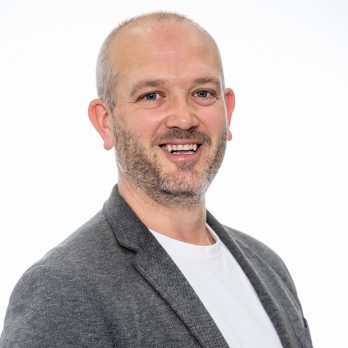
Matt Sharp
RLB UK and RLB Digital
Developing digital skills for our construction industry
A follow on to last year's 103912 presentation on "Attracting Digital Talent to the Construction Industry" we take a look at "Developing Digital Skills for our Construction Industry". The Construction Industry Council (CIC) Digital Forum recognises the need for Digital knowledge and skills as a key priority for our industry. The Digital Forum's workstream for People, Skills and Ethics is undertaking an activity in collaboration with RLB Digital to review exemplar Digital Construction Careers and an assessment of the Digital Construction professionalism pathways. Matt Sharp – Chief Digital Officer of RLB, Director of RLB Digital,Member of the CIC Digital Forum, Fellow of the BCS, CITPand Digital Skills Forum Committee Member - will present on this CIC initiative and discuss good practices for developing Digital talent. Three Key Points: Defining Digital Construction skill requirements|Clarifying pathways to develop Digital Construction skills|Professsional recognition of Digital Construction experts
Read More >>Speakers:

Matt Sharp
RLB UK and RLB Digital
How to manage egos, conflict and disengagement when implementing new technology
14:00 - 14:30
- The benefits of digitalising construction
- Digital construction culture
- What new technologies mean for construction
Speakers:

Dr. Melanie Robinson
BIM Academy

Fran Parkins
Rider Levett Bucknall

Vicki Reynolds
Catalyst

Francesca Lofiego
ISG
How to manage egos, conflict and disengagement when implementing new technology
- The benefits of digitalising construction
- Digital construction culture
- What new technologies mean for construction
Let’s get digital: Transitioning to a new way of working
Change opens opportunities for innovation but for some it can be daunting; yet if companies don’t adapt and keep up with the wider industry, they will suffer. However, change brings opportunities for improvement and growth… as long as you can get everyone on board! The last couple of decades has seen a huge change in the construction industry, with a huge push towards digitalising our workflows and delivery. At Max Fordham, we have found the largest challenge in starting to digitalise our workflows has been convincing the senior management that it will benefit the Practice and it was the right thing to invest in. In this talk we will cover how we convinced our senior management that they should be embracing the digital age and how we have started to implement these changes, including: • Starting with the easiest wins with a small amount of investment before moving to the more ambitious, including the development of bespoke tools. • How we tried to make the change as easy as possible and support everyone to adopt the new ways of working. • We will look at how we have automate mundane tasks, giving engineers more time to be creative. • We will touch on the issues we have experienced, cover tips and tricks we have discovered, and show how to maintain tools and resources once they are out in the ‘wild’, including taking on feedback from engineers to make their experiences better. Three Key Points: How to transition a company with multiple offices to a new, digital way of working|How to structure your development priorities, their delivery and provide training and support|How to maintain these new workflows and solutions whilst still developing new ideas
Read More >>Empowering change: Strategies for engaging people in the digital built environment
Don't miss out on unlocking the transformative power of people-centric strategies in shaping the future of the built environment! Join Global eTraining at The Digital Construction Week's People and Change Theatre for an enlightening session titled "Empowering Change: Strategies for Engaging People in the Digital Built Environment." In this session, you'll dive into the dynamic intersection of technology, innovation, and human behavior within construction and infrastructure development. Gain invaluable insights and practical strategies to: 1. Navigate organizational transitions successfully with effective change management principles. 2. Engage stakeholders at all levels using innovative approaches and technology. 3. Foster diversity, inclusion, and creativity within construction teams. 4. Prioritize workplace wellbeing and create cultures of support and resilience. 5. Harness the power of skills training to address industry challenges and empower individuals. Led by Global eTraining's team of corporate training experts, this session will combine presentations, interactive workshops, and Q&A sessions to provide you with actionable tools and insights. Don't miss this opportunity to be a part of shaping a more innovative, collaborative, and inclusive future for construction and beyond. See you there! Three Key Points: 1. Effective Change Management Principles: Learn how to navigate organizational transitions successfully by understanding and applying effective change management principles. This includes strategies for managing resistance, communicating change effectively, and fostering a culture of adaptability within the organization.|2. Innovative Stakeholder Engagement: Discover innovative approaches for engaging stakeholders at all levels of the construction ecosystem. This includes techniques for fostering collaboration, communication, and buy-in, ultimately enhancing project success and driving positive outcomes.|3. Equitable Empowerment through Skills Training: Uncover the transformative potential of skills training as an equalizer within the construction industry. Delve into how investing in skills development not only addresses industry challenges but also empowers individuals from diverse backgrounds, leading to more inclusive and innovative project teams.
Read More >>Transformation Hub
Accelerating digital transformation with composable architecture
10:00 - 10:30
- Core Principles of Digital Transformation: Understand the fundamental role of composable architecture in driving digital transformation across various sectors
- Insights from a Practical Application: Learn from the real-life implementation examples of a cross industry composable solutions and how its principles can be adapted for broader digital transformation initiatives
- Strategies for Effective Deployment: Gain actionable insights on adopting composable architecture in your organization to achieve greater efficiency, scalability, and customer satisfaction
Speakers:

Anand Mecheri
Invicara
Accelerating digital transformation with composable architecture
Embark on a journey of digital transformation at Digital Construction Week with our session, Accelerating digital transformation with composable architecture’. Learn how composable architecture enables adaptable, scalable solutions pave the way for digital agility and innovation in any industry. This session is a key to unlocking new digital potential, making it essential for professionals eager to spearhead transformation in their organizations. Learning points:
- Core Principles of Digital Transformation: Understand the fundamental role of composable architecture in driving digital transformation across various sectors
- Insights from a Practical Application: Learn from the real-life implementation examples of a cross industry composable solutions and how its principles can be adapted for broader digital transformation initiatives
- Strategies for Effective Deployment: Gain actionable insights on adopting composable architecture in your organization to achieve greater efficiency, scalability, and customer satisfaction
Speakers:

Anand Mecheri
Invicara
Addressing digital challenges in the nuclear sector
10:30 - 11:15
- Where is the nuclear industry in terms of best practice and digital construction?
- What are the barriers to the adoption of digital tools in the nuclear sector – especially around safety and security – and how are they being overcome?
- People – process – technology: how is the classic triangle being addressed in nuclear and how is genuine change being delivered?
Speakers:

John Priestland
Priestland Consulting

Jon Dolphin
NNB GenCo HPC

Amy Robson
AtkinsRéalis

Joe Charles
GHD

Jonathan Han
KPMG
Addressing digital challenges in the nuclear sector
Hinkley Point C and Sizewell C represent two of the largest construction projects in the UK’s history. But the nuclear sector presents particular challenges around the use of digital and data, especially around nuclear safety and security. How can digital models be substantiated and approved to the level required by the nuclear regulator? Can cloud-based digital tools be assured for use on and around nuclear licensed sites? How can digital monitor and help reduce radiological risk and dose, as well as improving efficiency and site safety? This panel brings together some of the nuclear industry’s leading practitioners who are delivering smart solutions and digital initiatives in the nuclear sector. They will share the key drivers for change and the challenges that they have faced, and how they are overcoming them. Learning points:
- Where is the nuclear industry in terms of best practice and digital construction?
- What are the barriers to the adoption of digital tools in the nuclear sector – especially around safety and security – and how are they being overcome?
- People – process – technology: how is the classic triangle being addressed in nuclear and how is genuine change being delivered?
Buying new software… but will it really help to solve my problems?
By nature, when we are faced with issues or problems we look to new technology to help us solve the same. ,Yet all too often find, when we get the new shiny box, it doesn't quite do what we expected.... or what we really needed to fully address the issue. So we end up spending additional money to try to patch it up or reconfigure it to make it a little better., or even to buy something else. Why does this repeatedly happen? What can you do to stop it from occurring again? Join some of the RLB Digital leads talking about how to 'Stop, Look and Listen' before making any decisions relating to new software. Its easier than you think! Learning points:
- Stop, Look and Listen - get to know what you actually have and what you really need. People on the ground are critical to defining this
- Acknowledge that no one software package does everything - stop pigeon holing. Use the right software for the thing it was designed to do and what it does best
- Get tangible benefit from integrating your software....bring all your data together through integration to give you a complete understanding of your business and activities
Megatrends on the high street: Navigating the future of construction
12:00 - 12:30
Speakers:
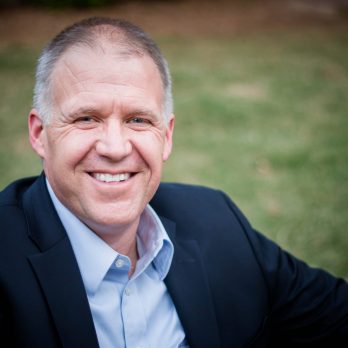
Matt Wheelis
Nemetschek
Megatrends on the high street: Navigating the future of construction
In the dynamic world of construction, staying ahead of the curve is vital to remaining competitive and successful. This presentation will explore key megatrends that will shape the construction landscape in the coming years, including Generative AI, Sustainability, 5G Connectivity, and the Labor Shortage, and bring concepts for practical integration into mainstream businesses across AECO. By embracing change and with forward thinking, your firm can not only survive but thrive in the ever-changing landscape of construction. Three Key Points: How Generative AI, Sustainability and 5G Connectivity can help the construction industry become more agile.|Understand how new technology and practises can benefit your business.|How your business can navigate Labour Shortage issues.
Read More >>Speakers:

Matt Wheelis
Nemetschek
Digital backbone: The bridge to disrupt the asset lifecycle
12:30 - 13:00
Speakers:

Huda As'ad
Accenture
Digital backbone: The bridge to disrupt the asset lifecycle
In today's rapidly evolving landscape, traditional project execution methods often fall short of addressing the holistic challenges inherent in construction projects. Our presentation will unveil the transformative power of a digital backbone, which serves as the cornerstone for redefining project management models. By leveraging advanced technologies, our approach converts data into a strategic asset, intricately aligned with project priorities and desired outcomes. This digital transformation empowers organisations to predict and optimise processes, adhering to the timeless principle of "measure twice, cut once." Whether you're involved in project conception, design, or commissioning, this presentation promises invaluable insights into revolutionising the construction and asset lifecycle. Don't miss this opportunity to discover how our digital backbone can propel your organisation towards unprecedented levels of success! Three Key Points: How the Digital Backbone Architecture Framework enables a digital thread that covers the entire project lifecycle and seamlessly links all previous and future stages, ensuring data and collaboration continuity enhancing key business capabilities.|Unified Ecosystem vs. Disparate Technologies: Differentiating between integrated digital ecosystems and disparate tech solutions and how a unified approach unlocks great value providing an end-to-end view of the project|Harnessing Data as a Strategic Asset: Learning how to leverage data effectively to drive strategic decision-making and optimize project outcomes.
Read More >>Speakers:

Huda As'ad
Accenture
Navigating the future of 4D construction: Integration and innovation
13:00 - 13:30
Speakers:

Liam Clarke
John Sisk & Son Ltd.

David Hernand
Elecosoft

Mark Chapman
Elecosoft

Josh Hanson
John Sisk
Navigating the future of 4D construction: Integration and innovation
Discover the Future of 4D Construction: Integration and Innovation – Join us for an enlightening panel discussion at Digital Construction Week 2024, where industry leaders will explore the current state and exciting future of 4D construction technology. Led by Andrew Norrie of Elecosoft, with a panel featuring David Hernandez (Elecosoft US), Stephen Chudley (Errigal) and Liam Clarke (John Sisk and Son) among other experts, this session promises a deep dive into the challenges and opportunities of integrating cutting-edge technologies like AI and computer vision into 4D construction. Learn about the advancements shaping the future of construction projects, from efficiency and safety to sustainability. Don't miss this opportunity to gain insights into navigating the evolving landscape of 4D construction and embracing the innovations set to redefine the industry. Three Key Points: Insights into Current 4D Construction Practices: Understand the current adoption levels of 4D construction technologies, including the challenges faced by the industry and how these are being addressed.|Future Trends and Technologies: Explore the potential of emerging technologies such as AI and computer vision in transforming construction practices, enhancing project efficiency, safety, and sustainability.|Strategies for Integration and Adoption: Gain practical strategies and insights into how the industry can better integrate these advanced technologies into everyday construction processes, preparing businesses for future advancements and competitive advantage.
Read More >>Digital transformation is a difficult, ever evolving journey. But where do you start!?!
14:00 - 14:30
Speakers:

Andrew Victory
Arcadis Global
Digital transformation is a difficult, ever evolving journey. But where do you start!?!
If you are passionate about digital transformation in design and engineering, don't miss this opportunity to hear from Andrew Victory, the Global Digital Transformation Lead for Design & Engineering at Arcadis. _x000D_ _x000D_ In this session, he will share his experience and knowledge on how to plan, implement and scale digital initiatives that can enhance your organisation's capabilities and create value for your clients. You will also learn how to overcome the common challenges and barriers to digital transformation and foster a culture of collaboration and learning. _x000D_ Whether you are a digital leader or an aspiring one, this session will provide you with practical insights and best practices that you can apply to your own organisation and projects. _x000D_ Register now and join us for this informative and interactive session. Three Key Points: How to balance bottom-up and top-down approaches to drive change and innovation across your organisation.|How to leverage the latest digital trends and solutions, such as BIM, information management, design automation, digital twins and AI, to create value for your clients and stakeholders.|How to overcome the common challenges and barriers to digital transformation and foster a culture of collaboration and learning.
Read More >>Speakers:

Andrew Victory
Arcadis Global
Fostering innovation through open source
14:30 - 15:00
Speakers:

Anand Mecheri
Invicara
Fostering innovation through open source
Be at the forefront of Innovation by harnessing the power of open source. Learn how enterprises, and system integrators are using ‘Open-Source’ as a ‘win-win’ strategy to accelerate digital transformation. Explore how open-source transforms and accelerates success through community-driven endeavours that fosters innovation, security, and transparency. Learn more about open-source licensing concepts and how they differ, and how the right licenses address subtle nuances of balancing the opportunity to use open source with business imperatives around proprietary software and Intellectual property. Three Key Points: Core Principles of Open Source: Understand how open-source actually works and the different types of licenses that provide materially different opportunities.|Insights from the industry: Learn how leading enterprises are leveraging the power of open source for driving digital transformation across various sectors, scaling quickly using free to use high quality software.|Value of open-source for digital twins: Gain appreciation to why open-source is vital for interoperability between digital twins to create connected systems that improve outcomes for enterprises, societies and the environment.
Read More >>Speakers:

Anand Mecheri
Invicara
Improving productivity through data and technology
15:00 - 15:30
Speakers:

Lisa Calmiano
KPMG
Improving productivity through data and technology
Driving transformation change is an art rather then a science. Change can be driven from any level in a organisation. Come and learn about the thinks that you can do to make you and your organisation more proficient at embedding innovation through transformation. Three Key Points: The secret of change is in the approach of working with people|What is difference between those that do it well and that don't|What can we learn from industries outside of construction.
Read More >>Speakers:

Lisa Calmiano
KPMG
Integration, the key to unlocking the connected site
Construction in the UK faces persistent challenges including low productivity growth, poor health and safety records, a shortage of skills and labour, rising costs, and the imperative to decarbonize. This session proposes that a unified connected site for onsite assembly could alleviate these issues. It aims to define what a connected site entails, its benefits, and the challenges to its realisation. _x000D_ _x000D_ Drawing from experiences in implementing a connected site within the Smart Motorways Programme Alliance (SMP Alliance), the session highlights the importance of whole system thinking in digitalisation strategies. It emphasizes the significance of integrating technology across the project lifecycle to maximize benefits and the role of an integrator in navigating the complex construction environment. Examples from the SMP Alliance demonstrate how two types of integration—across the project lifecycle and within the construction ecosystem—are pivotal for successful technology adoption. Notably, early incorporation of data management systems is crucial, as is transitioning towards collaborative network models facilitated by integrators. Ultimately, the session underscores that overcoming the barriers to digitalisation in construction requires addressing both technical challenges and the intricacies of project delivery and stakeholder engagement. Three Key Points: Whole system thinking for digitalisation|Lessons learned from delivering digitalisation within a road construction environment|Importance of an integrated approach to delivering innovation
Read More >>Organisational digital transformation to deliver mega projects in the Middle East
ALEC is a large Tier 1 Contractor with integrated business capabilities delivering some of the most promintent and complex projects in the Middle East. The session will cover how ALEC is achieving digital transformation by focussing on 3 main pillars; Innovation, Digital Construction & Information Technology. We will cover how the company's culture has been instrumental to enable an innovative, forward thinking workforce, and how we are practically implementing change across the business in these areas. Three Key Points:
- How to influence cultural change
- How to establish a successful and mature innovation framework
- How to standardise technology and gain user adoption
The California dream: Bringing ISO 19650 to San Francisco
10:00 - 10:30
Speakers:

Samuel Soh
Mott MacDonald
The California dream: Bringing ISO 19650 to San Francisco
The Portal is a $8.2 billion megaproject in San Francisco that extends the Californian rail network via a 1.3-mile tunnel into the heart of the Financial District, connecting it to local metro and bus services. Mott MacDonald, as the Program Manager for the project, provided expert advice and support to the client in beginning their ISO 19650 journey. We were able to leverage our wealth of experience from past projects and combine them with our understanding of the local market, therefore offering a unique perspective on how to deploy ISO 19650 and other digital tools to the project. We worked hand-in-hand with the client to produce a Digital Delivery Strategy document, which set out the long-term digital vision for the project, along with the blueprint of how to achieve it. The strategy included the use of user stories from key stakeholders, a ‘toolbox’ of tried-and-tested digital solutions which we could offer to the client, and a phased approach to the project’s systems architecture. This approach has given the client greater confidence in delivering their project in compliance with ISO 19650, and therefore subsequently setting them up towards delivering a successful project. Three Key Points: Do not just prescribe a generic digital strategy – Work with the client to define a strategy that aligns with their objectives and capabilities|Demonstrate and provide tangible digital solutions that the client can see and use – Do not just rely on abstract theories and generic jargons that client may not be familiar with|Get the client excited about digital – Speak their language, demonstrate how your digital solutions can address their challenges and concerns, and ultimately bring them along with you on their digital journey
Read More >>Speakers:

Samuel Soh
Mott MacDonald
The knowledge hub: Providing efficiency, improving accuracy and winning more work
We are all facing productivity and work-winning pressures. To combat this, Willmott Dixon has digitally transformed their bidding processes by providing better information that is easy to access and always up to date while reducing stress and improving well-being. During this session, Hayley Coe of Willmott Dixon and Adam Spry of Tribus Digital will discuss Willmott Dixon’s journey towards digital knowledge management, specifically focusing on work-winning activities, a practical example of digitisation and how to make it work. They will also explain how the digitisation of knowledge management within the business is reducing stress and improving well-being; both are invaluable when retaining talent, especially in this highly competitive environment. Three Key Points: Knowledge management needs dedicated resources, and launching a system is just the start; maintaining it is a continuous process.|Digitising your company’s knowledge facilitates 27/7 access to a subject matter expert.|It is worth it! The results are tangible and can make a real difference.
Read More >>Unleashing the full power of digital and technology in construction
Join us at Digital Construction Week for an exciting session that will reform the way we think about digital technologies and AI in the construction and infrastructure industry. Discover how we can unleash the full power of digital in construction projects a gamechanger for organisations looking to succeed in the digital age. Learn how we can help organisations building this capability and drive technology integration and adoption based on previously successfully implementations within global Infrastructure and Capital Projects clients. We will showcase case studies and the outcome of a set of interviews with key players in the industry. Join us on our journey towards digital transformation success! Three Key Points: An approach that clients can apply to unleash the tangible value of digital technology and AI in construction and infrastructure.|Capability Mapping understanding tailored to Capital Projects.|Transformation success stories and lessons learnt.
Read More >>Intellectual property ownership of AI and digital construction technology
11:30 - 12:00
Speakers:

Garfield John Smith
Garfield Smith - Technology & Data Lawyers

Caroline Hughes
Garfield Smith - Technology & Data Lawyers
Intellectual property ownership of AI and digital construction technology
Following a short presentation delivered by an experienced legal expert in the technology sector, a panel of experts will discuss intellectual property issues that arise from the use of AI in the digital construction sector. We will consider the protection of intellectual property rights in the sector generally and explore how disputes relating to intellectual property arise in construction contracts. This session is essential for those who want to understand more about intellectual property rights in AI and in the digital construction sector more generally. Three Key Points: Understand how intellectual property rights arise and can be protected in the digital construction sector|Understand how ownership and use of intellectual property rights can be negotiated and documented in digital construction contracts|Understand how disputes in relation to intellectual property rights can be resolved
Read More >>Data strategy: From the voices you don't want to hear (but should)
What is it that you don’t want to know, but really should know, when it comes to developing your organisation’s strategy for data use and exploitation and implementation of data-driven technology? Data is a hot topic, made even hotter by increased appetites in the industry to use technologies such as LLM and GenAI. Many organisations and public bodies are struggling to realise the potential of data use due to fragmentation within the construction and engineering industry, proprietary perspectives on data and change and adoption complexities. In this session, experts from AtkinsRéalis will present a roadmap of the Legal, Commercial and Data Governance considerations that are foundational to address on the journey from being data-rich to data-driven. Alice Brooks and Andrew Cox bring a unique skillset and direct experience in advising organisations in this space. The team will consider key enablers to get right at the outset, identify common blockers and suggested solutions, as well as emphasising the criticality of ensuring “value” at every step of the journey. The audience will receive practical, experience-driven, commentary as well as signposting key considerations for individuals to reflect on when implementing their own organisation's data strategy. Three Key Points:
- A unique perspective from legal and governance experts on enablers and solutions to support the industry with the drive to use data effectively
- A practical, solution-focused roadmap for organisations to adopt when considering their own data strategy
- Understanding the criticality of early preparation and embedding commercial considerations throughout the process
Digital transformation in civil infrastructure: Bridging public-private sectors for sustainable development
13:00 - 13:30
Speakers:

Matt Wheelis
Nemetschek
Digital transformation in civil infrastructure: Bridging public-private sectors for sustainable development
Discover the future of civil infrastructure at Digital Construction Week 2024 with our insightful session on digital transformation. Learn how advanced digital tools are creating synergies between public and private sectors, enabling sustainable and efficient infrastructure development. This session will equip AEC professionals with knowledge and strategies to tackle the challenges of ageing infrastructure, for a positive impact on communities and the environment. Three Key Points: 1. Enhanced Project Collaboration: Understanding how digital tools facilitate seamless integration and collaboration across public and private sectors in infrastructure projects.|2. Managing Complexity with Technology: Insight into using digital solutions for effective management of the scope and complexity in large-scale civil projects.|3. Sustainable Solutions for Ageing Infrastructure: Strategies for leveraging digital technology in addressing the challenges of ageing infrastructure, focusing on sustainability and public welfare.
Read More >>Speakers:

Matt Wheelis
Nemetschek
How can smaller construction companies approach digital transformation successfully?
ODGroup's all-female systems team will be speaking about their 2023 digital transformation journey as a small business and how they rethought the use of technology and real-time reporting to drive efficiency, break down siloes, and boost financial performance – busting some myths along the way! Three Key Points: Digital transformation and efficiency isn't just for large businesses|You don't have to have a huge budget to be able to digitally transform your operations|The importance of stakeholder collaboration and joined-up thinking during digital transformation projects
Read More >>Why standardisation is pivotal for a successful digital transformation
14:00 - 14:30
Speakers:

Alice Graham
Procore
Why standardisation is pivotal for a successful digital transformation
Standardisation in construction is pivotal for a successful digital transformation. By aligning people, processes, and technology it will help allow for seamless integration of state-of-the-art technologies. This session will encourage attendees and decision-makers to think about the pre-cursors to digital transformation and the internal work required for standardisation, before or in parallel with any technology purchase. Getting standardisation right will propel the construction sector into a future of heightened efficiency, collaboration, and innovation Three Key Points: Learning Outcome for People: Gain insights into the pivotal role of individuals in standardised operations. Discover strategies to unify and empower personnel, fostering a culture that aligns with standardised practices for cohesive collaboration and heightened productivity in construction and business settings. Learning Outcome for Process: Develop expertise in implementing and adhering to standardised processes, creating a foundation for predictability and efficiency. Overcome obstacles with a focus on standardised methodologies, ensuring streamlined operations that adhere to industry best practices and enhance progress in the construction sector. Learning Outcome for Technology: Explore the transformative power of standardised technology integration. Master the art of selecting tools that align with standardised processes, simplifying workflows, and amplifying overall effectiveness. Learn to leverage standardised technological solutions as a catalyst for innovation, ensuring a seamless alignment with standardised practices and optimising project outcomes. Learning Outcome for People: Gain insights into the pivotal role of individuals in standardised operations. Discover strategies to unify and empower personnel, fostering a culture that aligns with standardised practices for cohesive collaboration and heightened productivity in construction and business settings. Learning Outcome for Process: Develop expertise in implementing and adhering to standardised processes, creating a foundation for predictability and efficiency. Overcome obstacles with a focus on standardised methodologies, ensuring streamlined operations that adhere to industry best practices and enhance progress in the construction sector. Learning Outcome for Technology: Explore the transformative power of standardised technology integration. Master the art of selecting tools that align with standardised processes, simplifying workflows, and amplifying overall effectiveness. Learn to leverage standardised technological solutions as a catalyst for innovation, ensuring a seamless alignment with standardised practices and optimising project outcomes.
Read More >>Speakers:

Alice Graham
Procore
Confessions of a digital leader
14:30 - 15:00
- Why people must be at the centre of a successful digital strategy
- Why both culture and strategy are important to achieve success
- Why a focus on ROI will not deliver the outcomes you want
Speakers:
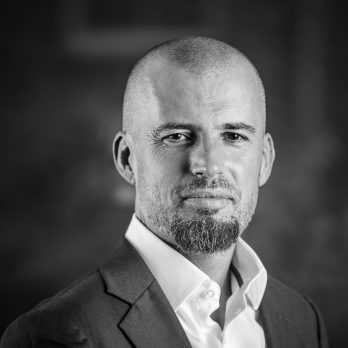
Paul Mullett
Surbana Jurong Group
Confessions of a digital leader
This session will summarise the key lessons learned from leading a 5-year digital journey at Robert Bird Group, an international AEC design consultancy. The talk will be a ‘warts and all’ reflection on critical success factors, practical challenges, points of failure and personal leadership experiences. Drawing on practical knowledge gained from a real, ongoing digital transformation the talk will cut across topics such as technology integration and adoption, cultural and behavioural aspects, change management, training and skills development, innovation management and Intellectual property. In particular, the session will emphasise the hard-earned lesson of placing people at the centre of any digital strategy in terms of leadership, grassroots skills growth, communications and career pathways, and describe how this was achieved at Robert Bird Group. The often-asked question of whether culture is more important than strategy will be addressed, and based on experience of driving practical digital change, an answer will be presented that demonstrates neither has priority and a symbiotic relationship between the two is essential for success. The talk will also reflect on the common stumbling block of ‘Return on Investment’ and will give examples to argue that ROI decisions need to be elevated to an appropriate macro-scale to balance risk and effectively minimise barriers to capability development and innovation. Learning points:
- Why people must be at the centre of a successful digital strategy
- Why both culture and strategy are important to achieve success
- Why a focus on ROI will not deliver the outcomes you want
Speakers:

Paul Mullett
Surbana Jurong Group
Digital groundbreaking: Beyond the hype and into reality
Digital Groundbreaking: Beyond the Hype and into Reality – Delve into Gleeds' journey of digital transformation within the construction industry, where practical technology application meets traditional expertise. This session cuts through the buzzwords, focusing on real-world digital integration, blending data-led service delivery with construction knowledge. Discover how Gleeds focused on industry intelligence, augmentation of core services to spark meaningful cultural change. Learn the significance of domain knowledge, strategic upskilling, and the role of change agents in driving technology adoption and enabling data-driven mindset. This talk offers a practical blueprint for navigating digital evolution, emphasising the augmentation of existing workflows with digital tools for enhanced project outcomes. Attendees will depart equipped with actionable insights to implement sustainable digital strategies in their organisations, ensuring preparedness for the evolving technological landscape. Join us to transform the theoretical into the tangible, ensuring your digital transformation journey in construction is both impactful and enduring. Three Key Points: Combining Domain Expertise and Data Analytics: The session underlines the significance of integrating construction knowledge with data specialisms for innovation in digital construction, highlighting that this combination is crucial for driving the industry forward.|The Importance of Change Agents in Facilitating Digital Adoption and Cultural Change: The presentation stresses the critical role of change agents in enhancing the uptake of digital technologies in construction. By fostering an environment that supports pull and offers seamless entry points, digital tools can enhance traditional construction practices, ensuring the digital transformation is both meaningful and sustainable.|Focusing on Augmentation not Reinvention: The session highlights the importance of adapting new technologies to support core services and boost productivity and outcome. This approach helps to reduce friction of technology and data adoption and also makes complex phenomena easier to understand.
Read More >>Tech Stage
How to train the BIM leaders of tomorrow
10:45 - 11:00
- Generative Design
- Productisation
- Design Automation
Speakers:

Clare Taylor
MWH Treatment
How to train the BIM leaders of tomorrow
ZIGURAT's mission revolves around inspiring and educating tomorrow's leaders through pioneering training programs with a positive societal and environmental impact. Since its establishment in 2001, ZIGURAT has continually enhanced its student learning journey. Their approach encompasses a Faculty Board of industry experts, collaborative assignments, hands-on experience with real projects, and an emphasis on connecting students with the latest processes and technologies, preparing them to lead the industry. This forward-thinking institution offers a unique global master's program in BIM management in English, Spanish, and Portuguese. Three Key Points:
- Generative Design
- Productisation
- Design Automation
Speakers:

Clare Taylor
MWH Treatment
Marginal gains, maximum impact: How CausewayOne drives productivity, profitability, and reduces risks in pre-construction
How can you break down siloes and drive meaningful efficiencies across your bidding process? The concept of marginal gains in pre-construction is based on identifying and remediating the multiple areas of friction that can undermine your estimating, pricing and tendering activities. By breaking down system fragmentation and letting data, documents, and communications flow, you can eliminate the numerous papercuts hindering your workflows. The more marginal gains you’re able to achieve, the greater the impact across your projects. In this hands-on demo, we will show you how CausewayOne can help you set these wheels in motion, allowing you to tackle key friction areas to improve productivity and accuracy, mitigate risks, and ultimately increase your win rates.
Read More >>Digitising building information to support the entire lifecycle
11:15 - 11:30
Speakers:

John Adams
Glider Technology
Digitising building information to support the entire lifecycle
In today's rapidly evolving construction industry, the digitisation of building information has become a critical factor for success. In this session John will explore the key principles and strategies for effectively digitising building information to support the entire lifecycle of a construction project, from design and construction to operation and maintenance. He will delve into how gliderbim®, combined with best practices, can power digitisation in the construction and building management sectors. This presentation will equip attendees with the knowledge and tools needed to embark on their journey towards digitising building information, fostering innovation, and optimising the entire lifecycle of construction projects. Three Key Points:
Read More >>Speakers:

John Adams
Glider Technology
Project financial control with IFS Cloud: How to monitor and manage your costs and margins effectively
11:45 - 12:00
Speakers:

Tom Simkins
IFS
Project financial control with IFS Cloud: How to monitor and manage your costs and margins effectively
Join Tom Simkins, an IFS Solution Architect as he shows you how to use IFS Cloud to improve your project financial control and increase your profitability. Learn how to set up, track, analyse, and report on your project costs and margins, and discover IFS Cloud best practices and tips. Learn how companies like Multiplex, Mclaren Construction and Berkeley Group have taken advantage IFS solutions to provide a modern ERP, delivering true project financial control. The session will show how real-time project financial control can be achieved, through a single platform without the need for multiple applications. Three Key Points:
Read More >>Speakers:

Tom Simkins
IFS
Design Review – Collaborating for success with Bluebeam Studio
12:00 - 12:15
Speakers:

Junaid Mahroof
Bluebeam
Design Review – Collaborating for success with Bluebeam Studio
Speakers:

Junaid Mahroof
Bluebeam
BIM-based quantity extraction & management for the non-BIM experts
12:15 - 12:30
Speakers:

Diego d'Udekem
Kabandy
BIM-based quantity extraction & management for the non-BIM experts
In this session you will learn how a modern software platform like Kabandy can be used to democratise the use of BIM for the visualisation, take-off and management of quantities. This enables non-BIM experts to use the BIM models more efficiently for several use cases such as cost estimating, work preparation and monthly statement during execution, inventories for building operations or quality control of the model information.
Read More >>Speakers:

Diego d'Udekem
Kabandy
Enhancing the effectiveness of CVR reporting practices
Building a successful construction project is a lot like solving a big puzzle. You must manage your resources, meet deadlines, and avoid overspending. But finding all the pieces you need to complete this puzzle isn't easy—they're often spread out everywhere. To keep your projects running smoothly, to find ways to do better, and to make sure you're making a profit, you need a clear view of what's called Cost Value Reconciliation, or CVR for short. CVR is all about checking if what you plan to spend on your project matches what you spend as you go along. This helps construction businesses monitor their money and ensure their projects are healthy. In our presentation, we'll show you how you can tackle common problems by using simple digital tools. These tools can reduce risk and help you spot new chances to do well on each project. We're talking about practical stuff that can make a real difference in how much money your construction business makes and keep it going strong for a long time. So, join us and learn how to make CVR work for you. Get ready to get a handle on your project's finances and boost your business's success! Three Key Points:
Read More >>AI empowerment: Mastering automation with point clouds & 3D models
12:45 - 13:00
Speakers:

Luke Holbrook
Enable My Team
AI empowerment: Mastering automation with point clouds & 3D models
Point clouds play a pivotal role in the creation of precise 3D digital representations of the built environment. However, the advancement of LiDAR scanning technology has introduced a new challenge: managing the extensive data generated in the process. ATLAS, by Enable My Team, aims to revolutionise data management. Our web-based platform integrates with existing repositories or facilitates direct uploads of point clouds, 3D models, asset information, and other datasets. ATLAS enables users to access these large, complex files, from any location, automatically optimising them for seamless web-based streaming. This means that all members of your organisation can harness the potential of these invaluable datasets. Our advanced Artificial Intelligence (AI) driven processing goes a step further by extracting additional insights from your point clouds, including feature extraction, whereby assets are automatically recognised, classified and segmented from within the cloud. Having all your point clouds seamlessly integrated within a single platform, federated with other datasets such as 3D models, asset information, documents, and photos, empowers users to make well-informed, data-driven decisions. Analysing point cloud scans in conjunction with 3D models provides valuable insights during construction or maintenance phases. ATLAS provides automated comparisons between Point Clouds and 3D models, generating a report of missing, extra, moved or hidden assets. Assessing the as-built conditions, as captured in a point cloud, facilitates the validation of construction designs, ensuring alignment with the intended specifications. This approach also serves to monitor progress and changes throughout the construction phase, effectively identifying and highlighting potential clashes or issues that may arise in the future. ATLAS aims to foster collaboration, enabling users to leave comments, take measurements and sections, and easily share views with colleagues. By making your project data readily accessible to all stakeholders, ATLAS enhances the efficiency and effectiveness of your operations.
Read More >>Speakers:

Luke Holbrook
Enable My Team
Maximising efficiency and collaboration through 4D planning
This session will delve into the successful application of 4D Planning in a large-scale redevelopment project in the UK. We will explore how 4D Planning facilitated detailed digital rehearsal across various stages of the project, from bathroom pod installation to crane coordination and logistical access. Attendees will gain insights into how 4D Planning was instrumental in conducting planning workshops, engaging the project team, identifying risks and potential delays, and communicating effectively with external stakeholders. Through real-life examples and practical demonstrations, we will illustrate the benefits of integrating 4D Planning into complex construction projects. Three Key Points:
Read More >>Empower your team with Procore for seamless adoption of the UK BIM Framework
14:15 - 14:30
Speakers:

Sara Mata
Procore
Empower your team with Procore for seamless adoption of the UK BIM Framework
In this session, we'll show Procore's role in facilitating the adoption of the UK BIM Framework and the International BIM Standards. Most importantly, we'll showcase a live demo of Procore's tools to demonstrate its easy implementation and seamless integration into construction workflows.
Read More >>Speakers:

Sara Mata
Procore
Integrating digital solutions for on-site challenges: Exploring Revizto 5.14
14:30 - 14:45
Speakers:

Jon Saint
Revizto
Integrating digital solutions for on-site challenges: Exploring Revizto 5.14
Have you ever wished you could project your digital model directly onto your physical site to explore issues in real-time? Or perhaps you've thought about generating QR codes on-site to link back seamlessly to specific issues, rooms, or model elements? Maybe you've even considered customizing your issue workflows to better manage different types of challenges, such as snags, observations, or installation management? If so, welcome to the capabilities of Revizto 5.14.
Read More >>Speakers:

Jon Saint
Revizto
DataTouch – Why interactive technology is the key to revolutionising your DABs meetings
14:45 - 15:00
Speakers:

Charles Butt
DataScope Systems Ltd
DataTouch – Why interactive technology is the key to revolutionising your DABs meetings
DataScope has deployed our award-winning interactive software across more than 100 construction projects globally that has transformed DABs and collaborative planning meetings into focused sessions that save time, drive engagement, mitigiate potential issues, all while keeping safety at the top of the list. Learn how leveraging DataScope’s planning and DataTouch software empowers both the main contractor and the supply chain to engage with the project programme, take accountability for scheduling, spot issues and resolve them early. Listen to real life examples of our how DataTouch fosters collaboration between management, subcontractors and the supply chain across all work levels, has drastically reduced meeting times and promoted safer ways of working. Three Key Points:
Read More >>Speakers:

Charles Butt
DataScope Systems Ltd
From concept to construction – How to build using Trimble's connected workflows
15:15 - 15:30
Speakers:

Ben Wallbank
Trimble
From concept to construction – How to build using Trimble's connected workflows
Join us for a concise 10-minute session where we explore how Trimble products are reshaping the construction industry, guiding professionals through every phase of a project. In this presentation, we'll break down the construction process into key stages and demonstrate how Trimble's technology empowers teams with practical tools and solutions. Starting with the initial concept and design phase, we'll illustrate how Trimble facilitates seamless collaboration and visualisation, helping teams bring their ideas to fruition with efficiency and accuracy. Transitioning to the planning phase, we'll highlight user-friendly project management tools that simplify scheduling, resource allocation, and decision-making, ensuring projects stay on track and within budget. Trimble's solutions extend beyond project management and execution to encompass estimating and fabrication, critical aspects of the construction process. With powerful estimation software, professionals can generate accurate cost projections, facilitating better budgeting and resource allocation early on. Finally, as we move into the execution phase, you'll see how Trimble's practical construction layout and quality assurance technologies optimise productivity and accuracy on site. From layout to completion, Trimble solutions provide practical support for teams, enhancing precision and efficiency. This session offers valuable insights into how Trimble is facilitating construction projects. Whether you're an experienced industry professional or new to the field, this presentation promises to inform and inspire, showcasing the practical benefits of Trimble across the entire construction project lifecycle. Three Key Points:
Read More >>Speakers:

Ben Wallbank
Trimble
Shaping a sustainable future with Digital Twins: Invicara’s City Planning Modules for urban transformation
Mobile mapping that revolutionises field service operations
15:45 - 16:00
Speakers:

Mike Housby
Locana
Mobile mapping that revolutionises field service operations
Locana's Lemur product is a modern mobile mapping solution that provides field workers with zero-training access to existing GIS. It delivers integrated, intuitive tools for work order and asset management for major clients in climate change management, energy, vegetation management and utilities. In this talk we will outline how Locana solves some of the world’s most interesting problems, such as how snow gets cleared in New York State! (it's not just City and in fact is mostly the outside of New York). Additionally, we will outline how our Lemur customers: - Locate assets - Understand asset connectivity & interdependency - Look up Asset Characteristics to speed remedial work - Record Work Done and Report Defect Locations Lemur’s enterprise mapping capabilities complement field service apps used in utilities, oil and gas, transportation, local and national government, and are instrumental in providing continual improvements to public services. In this talk, we will explore the benefits of bringing GIS and enterprise mapping to the field and back office, and how Lemur can help you achieve that. We will also take a closer look at the features of Lemur, demonstrating its modern mobile mapping capabilities, and how these are used to improve work order and asset management, and more. So, whether you're a field worker or a manager, this talk is for you! Three Key Points:
Read More >>Speakers:

Mike Housby
Locana
Design to construction – Collecting asset data
10:30 - 10:45
Speakers:

Jonny Pye
Autodesk
Design to construction – Collecting asset data
Join us as we delve into the fascinating world of design data and on-site asset data collection. We'll show you how to use model information to align with industry regulations and streamline your workflows on site with the Autodesk Construction cloud. With a focus on ensuring smooth project stages and handover, we're all about simplifying complex processes and getting the job done right. Three Key Points:
Read More >>Speakers:

Jonny Pye
Autodesk
Hands on productisation allows up to 50% productivity gain
10:45 - 11:00
Three Key Points:
- Develop virtual construction “bricks” off-cycle.
- Virtually compose your projects with mass customisation.
- Digital thread and PLM on the 3DExperience platform
Speakers:

Abdullah Gulabi
Dassault Systèmes
Hands on productisation allows up to 50% productivity gain
Three Key Points:
- Develop virtual construction “bricks” off-cycle.
- Virtually compose your projects with mass customisation.
- Digital thread and PLM on the 3DExperience platform
Speakers:

Abdullah Gulabi
Dassault Systèmes
Accelerate bridge monitoring with Digital Twins enabling improved outcomes
11:00 - 11:15
Speakers:

Andrew Smith
Bentley Systems
Accelerate bridge monitoring with Digital Twins enabling improved outcomes
Many organisations who are responsible for inspecting, monitoring, and maintaining bridge infrastructure are faced with the challenges of workforce shortages and an increasing backlog of aging bridges. Addressing these challenges requires a multi-faceted solution from the owner/operators, the engineering consultants they rely on as well as the entire infrastructure industry. Leveraging the latest technology to improve the current workflows should be a significant component of the comprehensive solution. The collection of reality data with a UAS and creation of a digital twin has proven to be a valuable tool in augmenting traditional inspections by utilising remote visualisation. As the technology matures, there continues to be advances in the tools that can be used along with the digital twin to assist inspectors. This session, we will highlight how Engineering firms and Owners are using these tools to augment their existing workflows in a detailed inspection and rehabilitation plan for bridge projects. This includes the use of photo navigation alongside the 3D model, inspection forms with georeferenced issues, and mobile tools used in the field. The technology and associated workflow utilised can help save over 30% in inspection hours and the improved quality of the data collection will generate a 20% savings in construction costs. In addition to highlighting the tools used in the use cases, the session will demonstrate other tools that can be used within a digital twin including artificial intelligence crack and spall detection, augmented reality model visualisation and internet of things (IoT) sensors for structural health monitoring. Other AI detectors that are currently under development will be discussed and how these innovations will continue to transform traditional workflows. The transformation from traditional inspection workflows has the potential to enhance safety, reduce costs, and improve the accuracy of inspection results. Digital technologies have a lot of potential to improve the way we do bridge inspections and maintenance. They can help us collect more consistent data and analyse it faster and more effectively, which can benefit bridge owners, inspectors, and the public who use them. Some of the early users of tools and technologies like UAS, AI-ML, and IoT have already seen benefits, such as: less field time, more reliable data for analysis, better bridge repair suggestions, better communication and cooperation, lower costs, and less environmental impact by using less equipment. Technology is advancing quickly, and this is only the start. In the immediate future it is foreseen that we will have more trained defect detection models for various materials, image resolution, lighting conditions etc. and efficient integration of data from various sources (crow sourcing from connected cars, satellite data, sensors/IoT on the structure, etc.). But technology is not enough to change the way we manage our bridges. We also need to train people to use these technologies and we need to update our processes so that we can use UAS more confidently and regularly in our operations and trust the power of AI-ML to help our bridge engineers make the best choices on how to maintain our growing number of structures that are aging beyond their expected design life.
Read More >>Speakers:

Andrew Smith
Bentley Systems
Quantity estimations: Boost accuracy and avoid rework with Bluebeam
11:45 - 12:00
Speakers:

Poojan Vyas
Bluebeam
Quantity estimations: Boost accuracy and avoid rework with Bluebeam
Join Bluebeam’s SMB Representative Poojan Vyas for a live demo of how Revu’s markup and measurement tools can quickly improve the accuracy of your quantity estimations. Watch in real-time as Poojan generates markups, tracks changes and revisions, and links measurement totals from multiple PDFs to Excel for automatic tender calculations. He'll also walk you through how Revu’s intuitive and customisable tools – like Dynamic Fill, Quantity Link, and Viewports – have made all the difference to Musselman and Hall Contractors’ quantity estimations. Ready to get your work done faster and more accurately? You’ll leave the session raring to go – and equipped to start building more winning tenders. Three Key Points:
Read More >>Speakers:

Poojan Vyas
Bluebeam
Intro to smart surveys: Navigating the convergence of GIS and survey tech
12:00 - 12:15
Speakers:

Craig Mallard
Propeller Aero
Intro to smart surveys: Navigating the convergence of GIS and survey tech
In a landscape where survey and GIS were once distinct disciplines that required different software systems, a paradigm shift is underway — paving the path for a new category of technology that empowers its users with the best of both worlds. At Propeller, our passion lies in simplifying complex processes on the worksite. Enter, smart surveys: Hybrid 3D mapping technology that combines survey-grade accuracy with the simplicity of maps to democratise geospatial data and streamline how it’s analysed and actioned. The result? A single hub where dispersed teams and project stakeholders go to map, measure, and manage their reality instantly from any device. In this session, we'll explore the catalyst behind the convergence, demystifying how drones and cloud-based 3D mapping systems contributed to the inception of smart surveys. We’ll delve into the core technologies that make up smart surveys, hearing real-world customer case studies that demonstrate and quantify how accessible progress data improves communication and increases transparency, leading to enhanced project outcomes. Join us for an informative and forward-looking session on the power of smart surveys—the beginning of a new era for construction where both technical and non-technical teams use accessible survey-grade data to replace guesswork with great work. Three Key Points:
Read More >>Speakers:

Craig Mallard
Propeller Aero
Materials management software for construction projects
12:15 - 12:30
Speakers:

Barry Peyton
Intelliwave Technologies
Materials management software for construction projects
Have you ever felt that there's a better way to track and manage your project's materials, tools, assets and equipment? You're not alone! The good news is that there's a product that reduces time and cost around your materials management processes! We will discuss and tour SiteSense to show how projects are leading the way in materials management digital processes that have resulted in predictable schedules, reduced materials costs and reduced labour costs. This presentation will also introduce concepts that integrate into materials management work processes to standardise work flows and reduce errors such as the use of barcode/QR codes, RFID, Bluetooth Low Energy tags, sensors, IoT and other location-based automation devices. Three Key Points:
Read More >>Speakers:

Barry Peyton
Intelliwave Technologies
Site-level ESG reporting using SustainIQ
12:30 - 12:45
Speakers:

Liam Mcevoy
SustainIQ
Site-level ESG reporting using SustainIQ
ESG Reporting is a crucial part of the future of construction. Sustainability is one of the sectors biggest challenges. With the built environment currently accounting for 39% of the world's global carbon footprint, construction are under significant pressure to reduce carbon where possible and mitigate their climate impact. Without ESG data however getting visibility of progress is impossible. In this 103913 presentation, you'll hear from SustainIQ, the only ESG reporting software you'll need for all of your construction sites. Learn how you can leverage construction technology to access granular level data from a site level up, and improve reporting methodologies company-wide to access rich reporting and improve your ESG performance. Interested in having a further chat? Pop by and see the SustainIQ team at Stand D460. Three Key Points:
Read More >>Speakers:

Liam Mcevoy
SustainIQ
Using AI to maximise construction performance
12:45 - 13:00
- Leverage the power of accurate progress data for maximising construction performance
- Hear real success examples of businesses already utilising AI and performance-based construction methods
- Learn how Buildots technology is already helping leading contractors with progress tracking, subcontractor collaboration, delay risk mitigation, scheduling, financing and more.
Speakers:

Tommy Cooke
Buildots
Using AI to maximise construction performance
In the evolving landscape of construction, enhancing traditional management methods to better meet current challenges and needs has become increasingly important. The key to unlocking the full potential of your site is access to well-informed and timely data, and its ability to help you make informed and important decisions. Yet, many organisations are still relying on outdated pen-and-paper and spreadsheets to report status, track progress and communicate with stakeholders. This makes it near impossible for site managers to effectively monitor, manage and give timely updates on their project’s progress. Eventually, inaccurate data can trigger delays in the schedule, disputes with subcontractors and costly rework. With razor thin profit margins in construction, these have a huge impact on the company’s viability. That’s all about to change! Introducing Performance-Driven Construction Management, powered by Buildots. Buildots leverages AI and computer vision to upgrade traditional project management methods, introducing a performance-driven approach to managing construction projects. Our platform automatically generates accurate, unbiased data and actionable metrics crucial for strategic decision-making. Our AI algorithm and automated reports enhance visibility and control for site teams and management, setting new standards for efficiency and productivity by minimising delays and ensuring projects are completed on time and within budget. This technology is already being used by some of the world’s leading contractors, making waves in the industry and fostering a culture of continuous improvement and data-driven decision-making. Don’t miss out! Three Key Points:
- Leverage the power of accurate progress data for maximising construction performance
- Hear real success examples of businesses already utilising AI and performance-based construction methods
- Learn how Buildots technology is already helping leading contractors with progress tracking, subcontractor collaboration, delay risk mitigation, scheduling, financing and more.
Speakers:

Tommy Cooke
Buildots
CausewayOne – How exploiting marginal gains across construction contracts transforms profitability, reduces risk and drives productivity
13:45 - 14:00
Speakers:

Ross Alderson
Causeway Technologies
CausewayOne – How exploiting marginal gains across construction contracts transforms profitability, reduces risk and drives productivity
How can technology deliver on its promise to bring simplicity and productivity in construction? Today's fragmented approach to managing data, people, finances, supply chains and projects doesn't solve for the realities that front and back-office teams face in their day-to-day. From the design phase to commercial, operational and maintenance management, contractors and supply chains are enduring a multitude of efficiency papercuts, hindering productivity, skyrocketing project costs, and driving already razor thin margins down. Join us as we take you on a journey where we uncover how the construction ecosystem can achieve pragmatic, meaningful marginal gains at each point of the construction lifecycle.
Read More >>Speakers:

Ross Alderson
Causeway Technologies
Save time, structure data and improve the quality of your BIM model
14:00 - 14:15
Speakers:

Christian Dalhuizen
BIMcollab
Save time, structure data and improve the quality of your BIM model
BIMcollab is the industry leader in driving BIM collaboration throughout the lifecycle of buildings and infrastructure. With solutions for: - BIM coordination, - model checking, - issue management, - takeoffs, - document- and asset management, based on the widely accepted open standards of buildingSMART, BIMcollab empowers users to create and use a Digital Twin from design and build to maintain and operate. By involving stakeholders as early as possible, BIMcollab supports companies in the transition to BIM, resulting in faster design decisions and better buildings. Join this session and find out what BIMcollab can do for your business. Three Key Points:
Read More >>Speakers:

Christian Dalhuizen
BIMcollab
Asta beyond Powerproject
14:15 - 14:30
Speakers:

Martha Karagiorgi
Elecosoft UK
Asta beyond Powerproject
The presentation will look at the tools planners and engineers can use to augment their planning process in Asta Powerproject. From enterprise level collaboration and lean planning tools to the use of 4D and AI analysis the session will take your through how via the Asta ecosystem and network of partners, planning teams can drastically improve the way they plan, track and deliver their projects.
Read More >>Speakers:

Martha Karagiorgi
Elecosoft UK
Proicere – Project controls for the digital age
14:30 - 14:45
Speakers:

James Adjei Amankwaa
Proicere Ltd
Proicere – Project controls for the digital age
We aim to take the audience on a journey through the evolution of construction excellence. From cutting-edge 4D planning strategies to ground-breaking innovations, we will demonstrate how Proicere bring unparalleled value to each stage of the project's life cycle. The presentation will include: Innovative Solutions: We will provide insight on Proicere's innovative solutions that challenge conventional construction norms, bringing efficiency and excellence to every facet of the process. Industry Impact: Share real-world examples of Proicere's impact on large construction projects, emphasising the tangible benefits experienced by our clients. We hope to not only show the innovations that Proicere has been able to deliver to the construction industry but also provide attendees with valuable insights that can revolutionise the way they approach project management. Three Key Points:
Read More >>Speakers:

James Adjei Amankwaa
Proicere Ltd
How we are measuring ‘as built’ scope 3 embodied carbon emissions in real-time – Demonstration
14:45 - 15:00
Speakers:

Rob Ramsay
Causeway Technologies
How we are measuring ‘as built’ scope 3 embodied carbon emissions in real-time – Demonstration
Speakers:

Rob Ramsay













